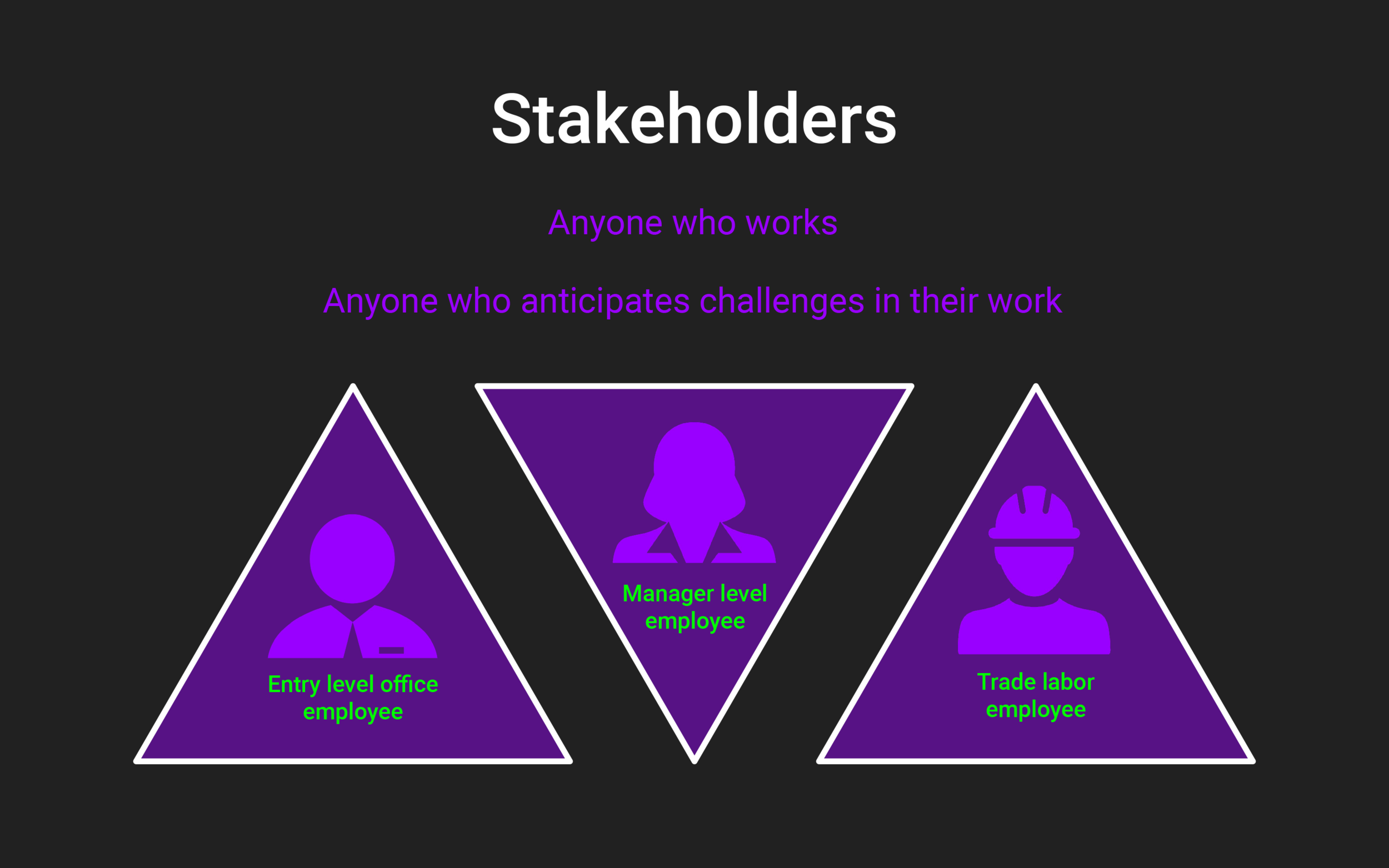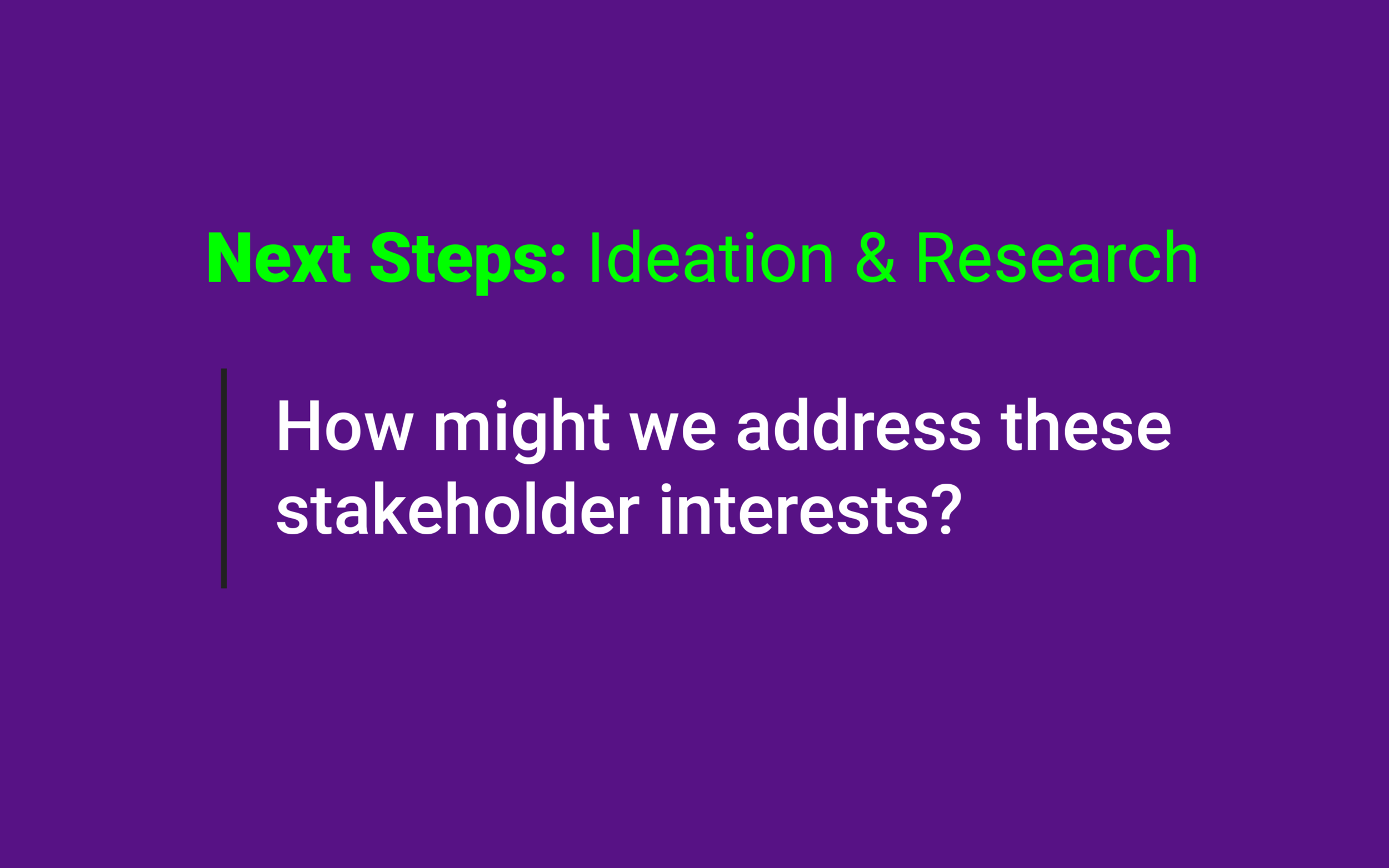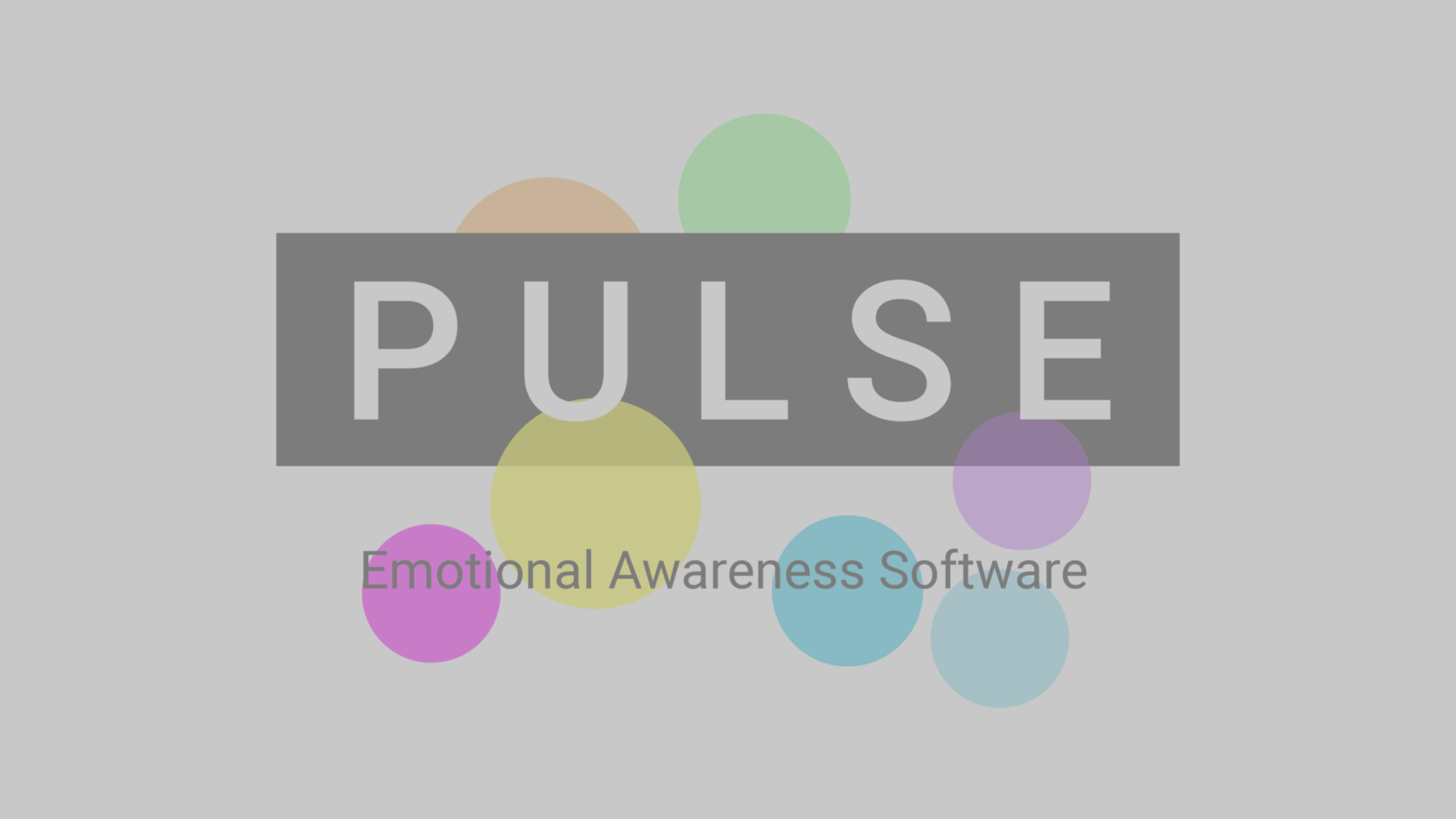
Emotional Awareness @ Work
Despite how far workplace culture psychology has come, office environments haven’t yet evolved to accommodate the emotional needs of their inhabitants. Meet Pulse: an intuitive web app designed to promote emotional awareness in the workplace via a private portal where users record daily feelings and review personal trends that are also broadcast in aggregate on a living dashboard in the office.
Team Project with Chi Hang Lo + Mark Rothleithner, led by Kelli Manthei. Instructors: Steve Barth, Michael Crowley
Introductions
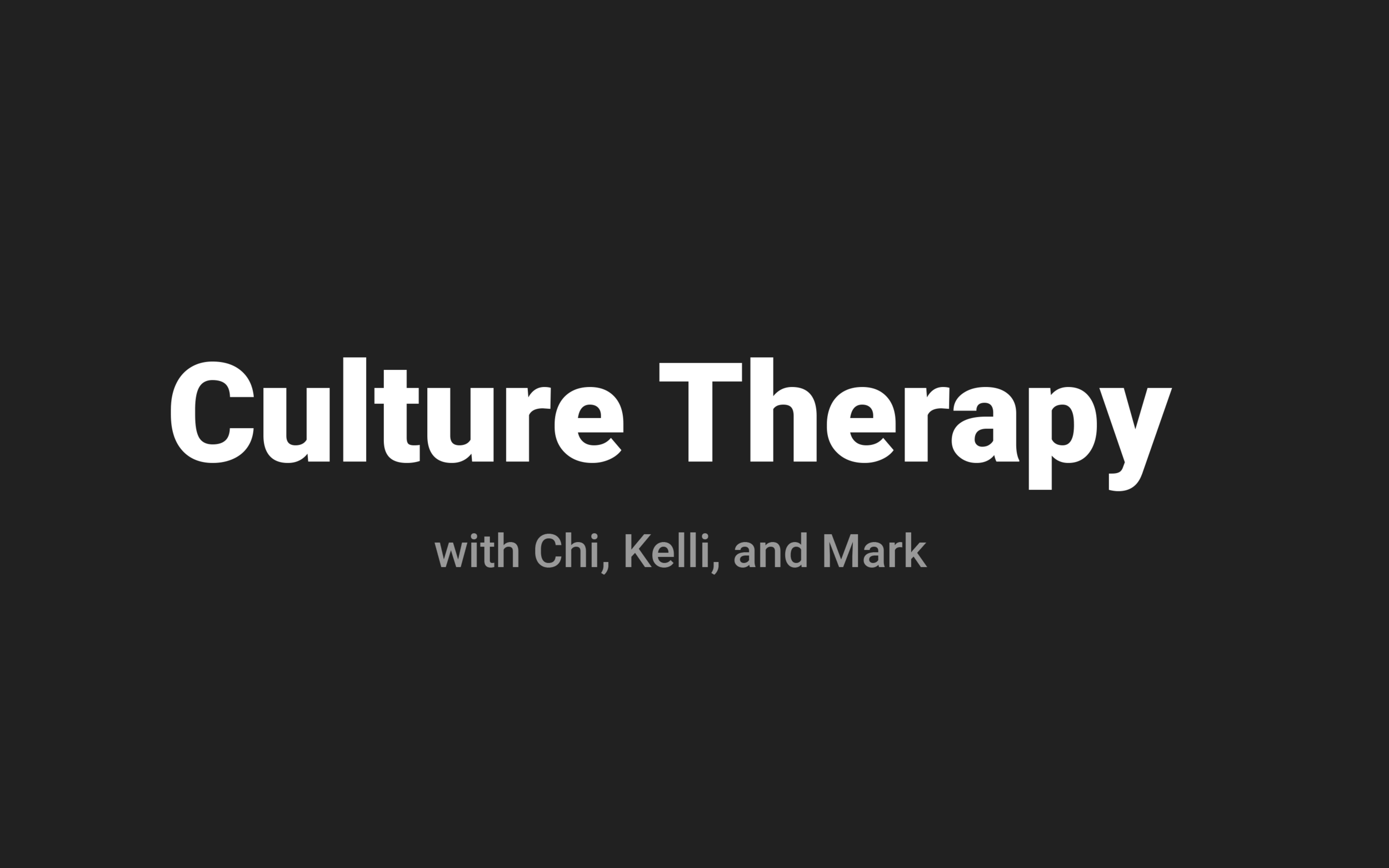
We want to talk to you about “culture therapy” for teams. We know that people want to grow in their careers, and we think that people also want to work well together.
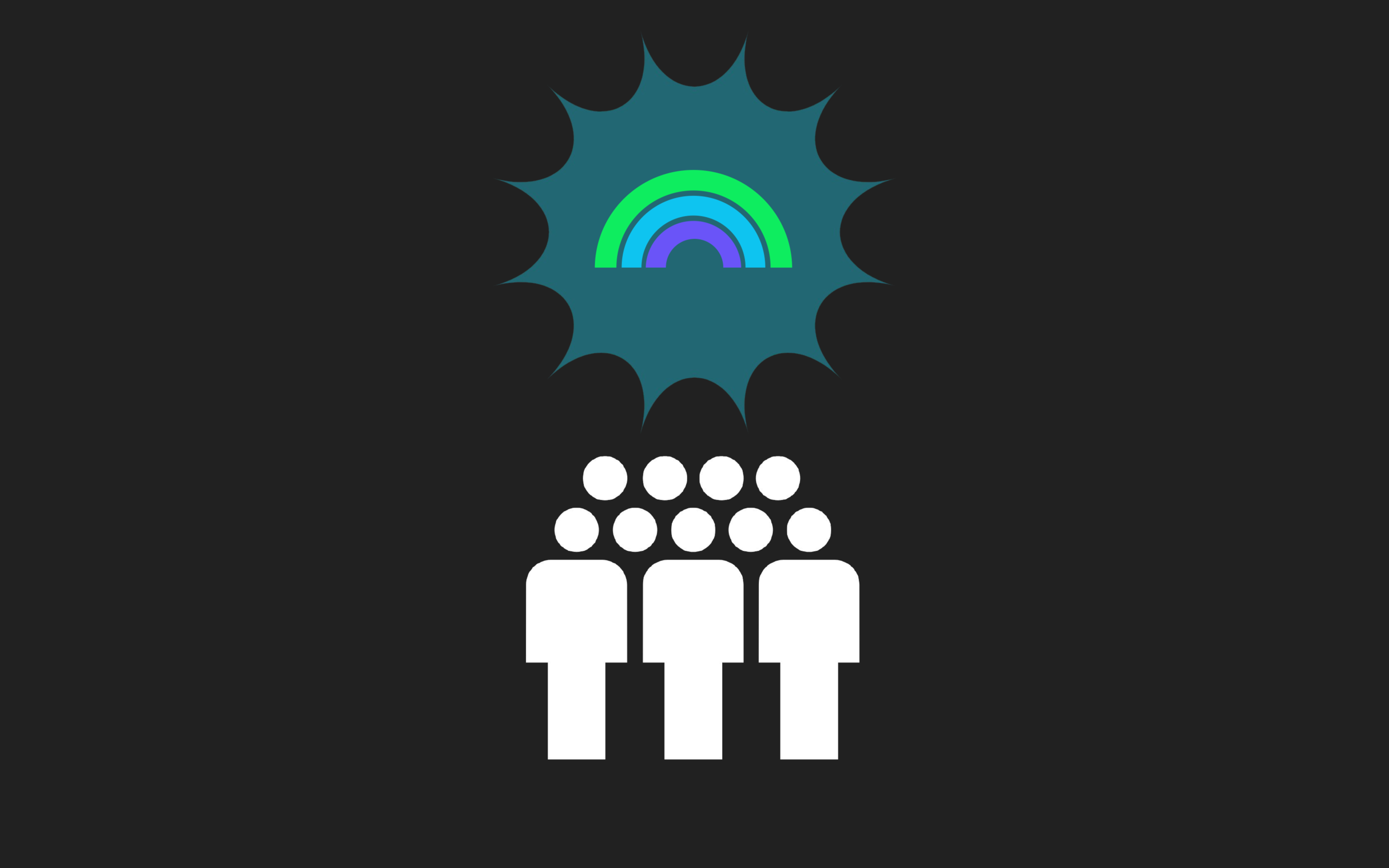
Once a team has been created -- whether a company, a project, or a department -- they unite around a shared goal.
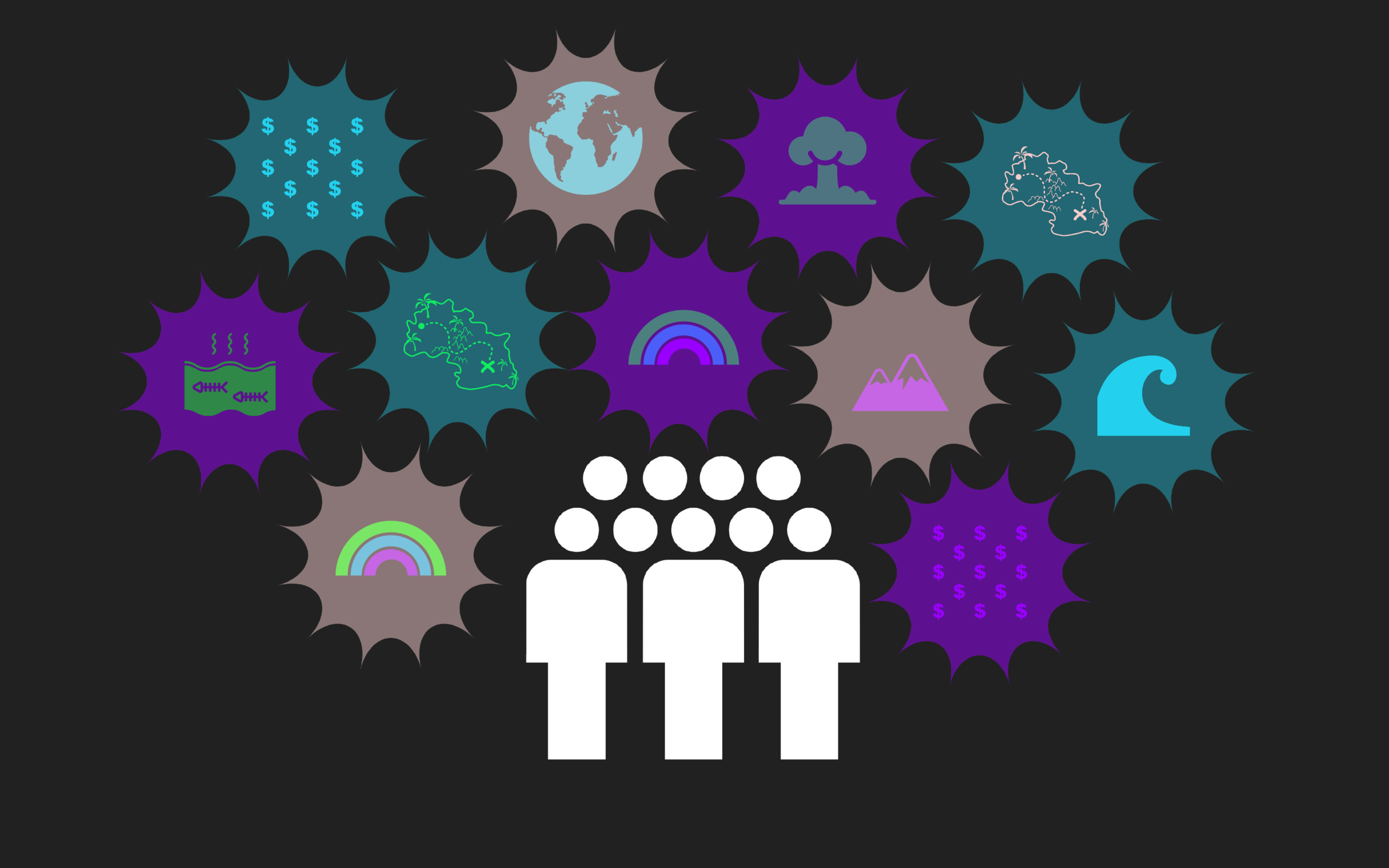
But they are still a collection of individual members with their own goals and expectations, which can turn into miscommunications and conflict. Large companies can direct resources toward preventing and managing people issues, but what about smaller teams in lean environments?

Small teams are often spread too thin to think about the so-called “soft stuff”, and problems can echo and compound.
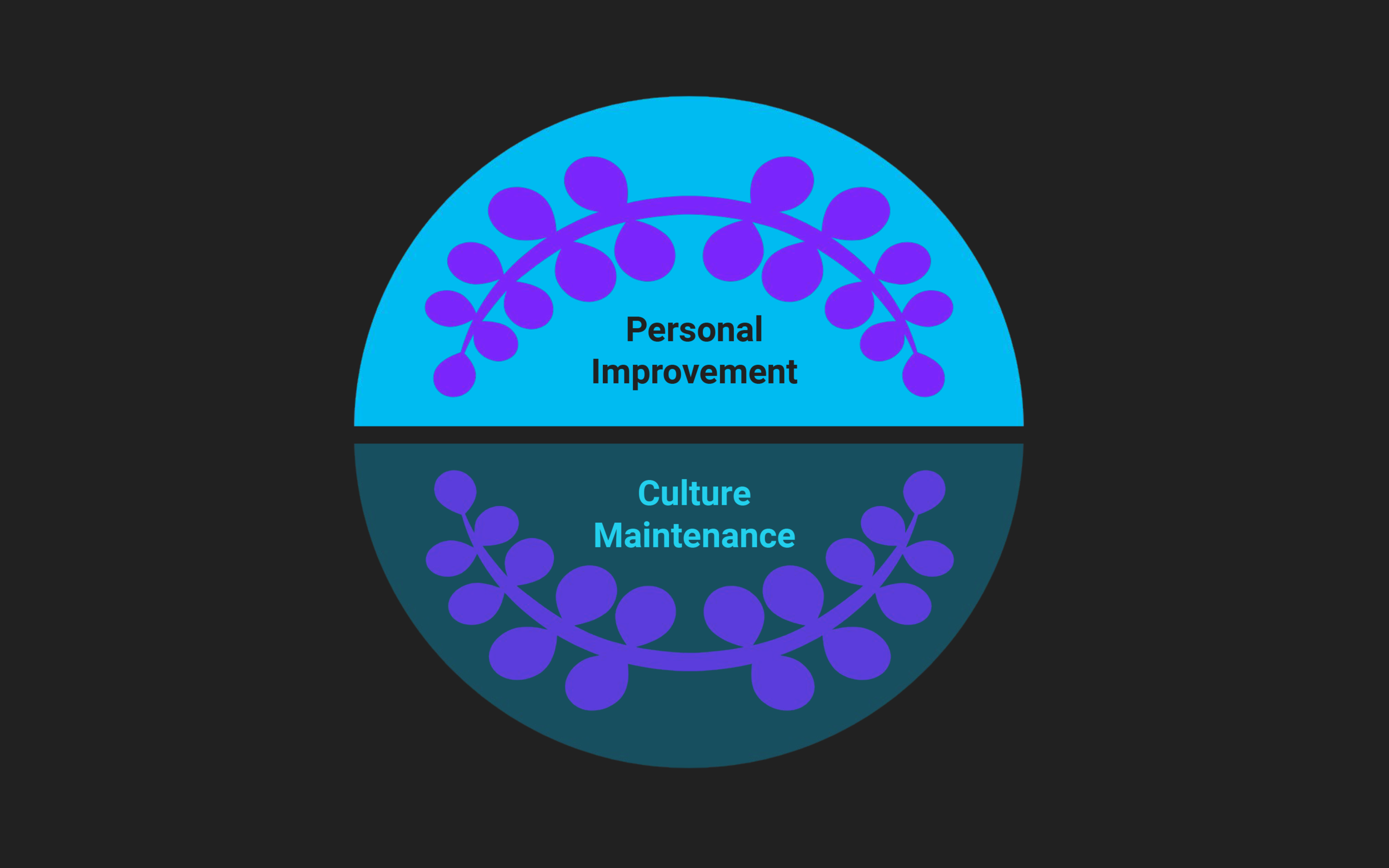
Our solution is “Personal Improvement” meets “Culture Maintenance” -- for small teams.
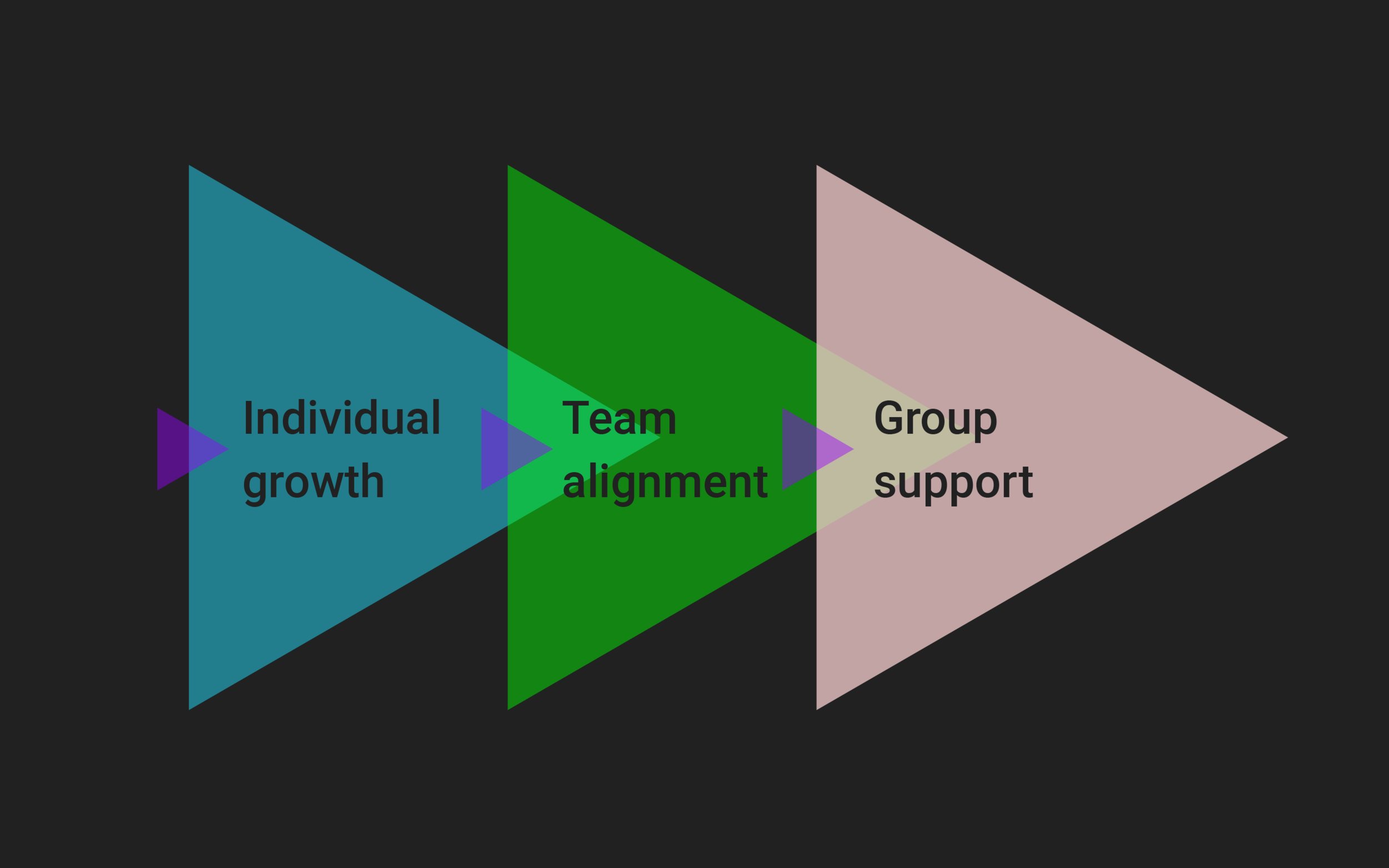
This is the loop that we want to create -- Individual growth // team alignment // group support. We think that sharing individual experiences and goals help naturally develop a support group to holistically “treat” the team culture.
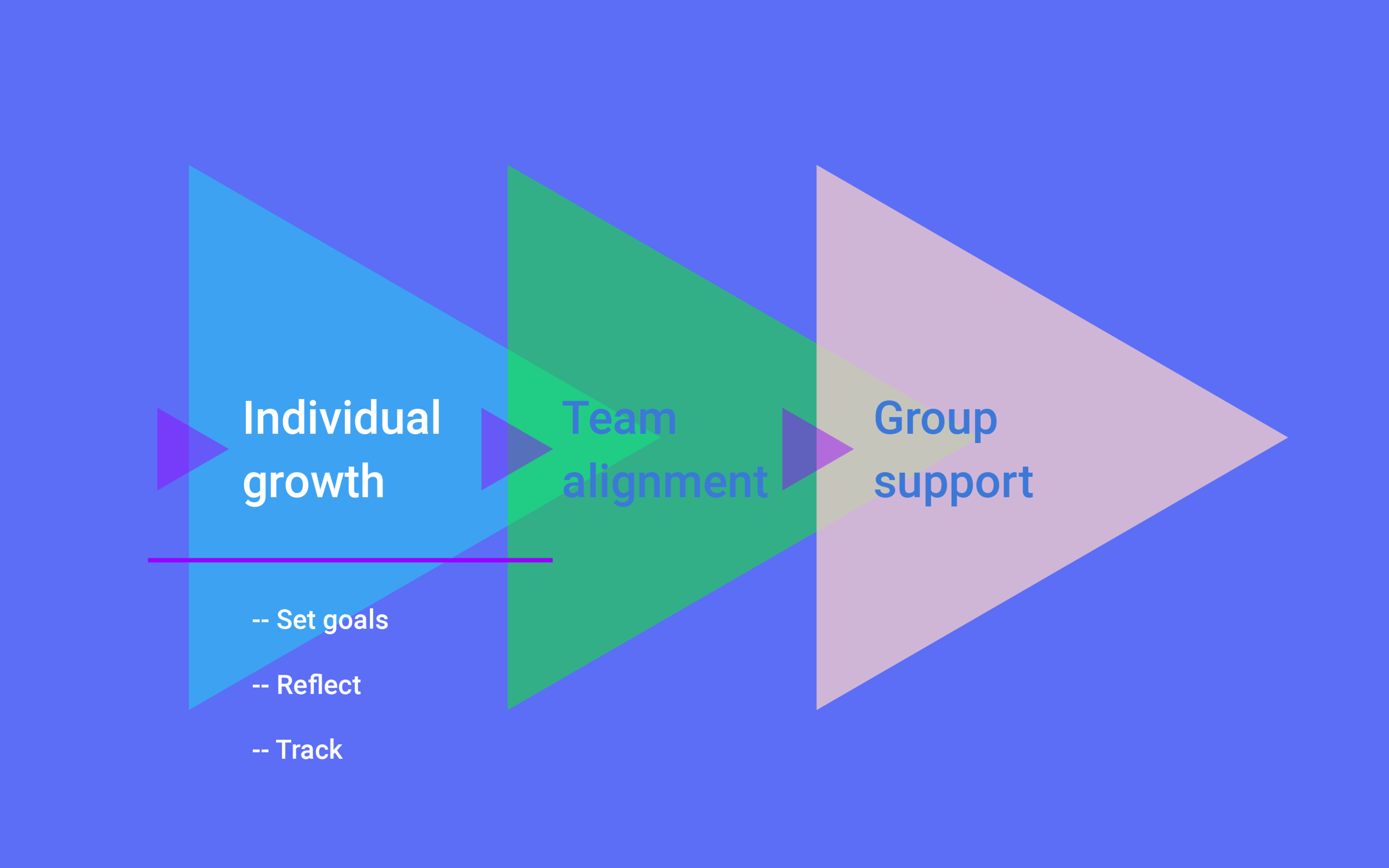
Individuals weigh in with lightweight daily goals and reflect at day-end. They receive regular, organized reports of their data.
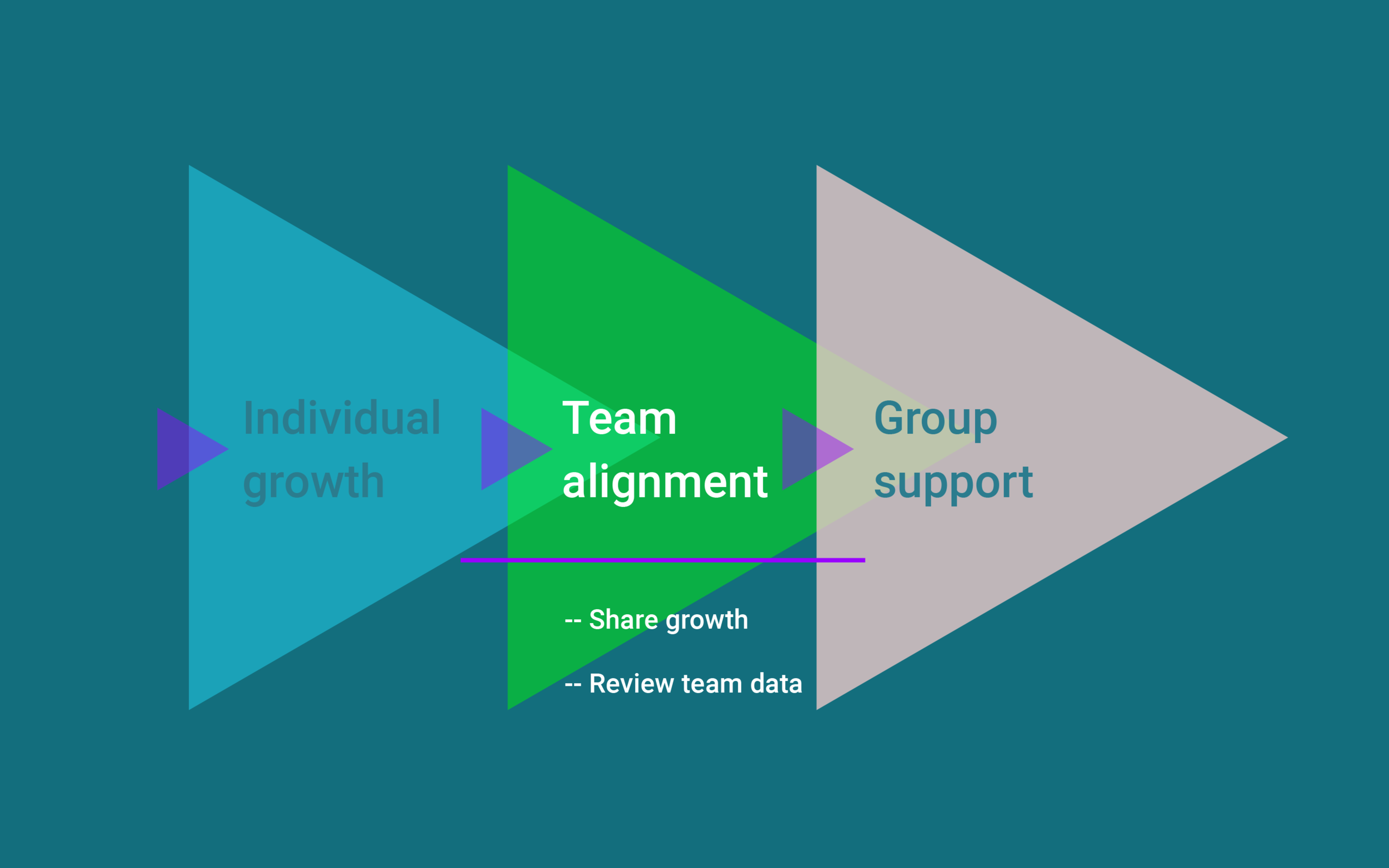
Sharing happens regularly. Individuals choose what to share from their report. Those achievements, challenges, goals, and requests are broadcast to the team.
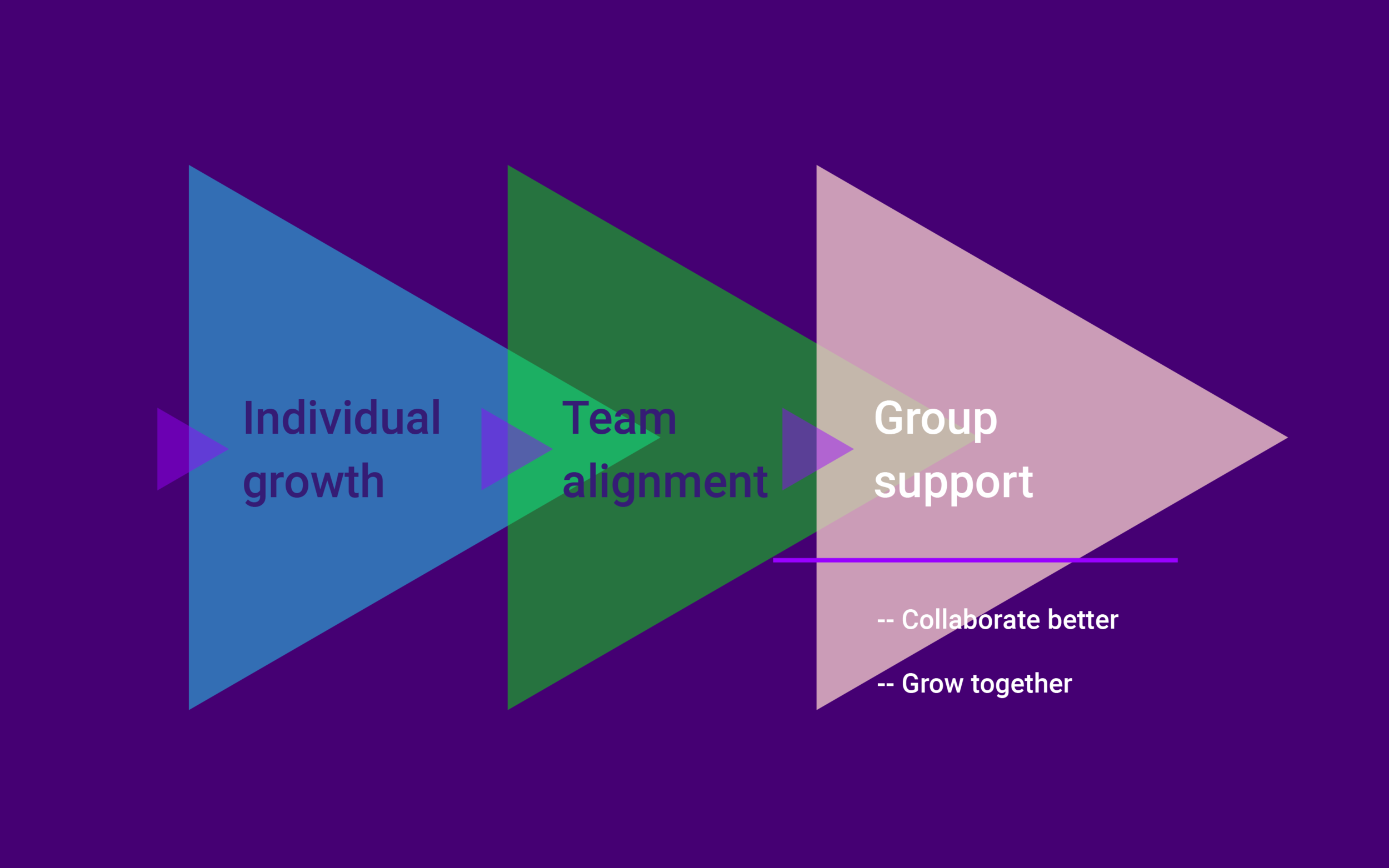
The combo of goal setting, reflection, and sharing creates a shared vision and a natural support loop, without creating a new management task. The extra insight gives the team actionable opportunities to collaborate and help each other.
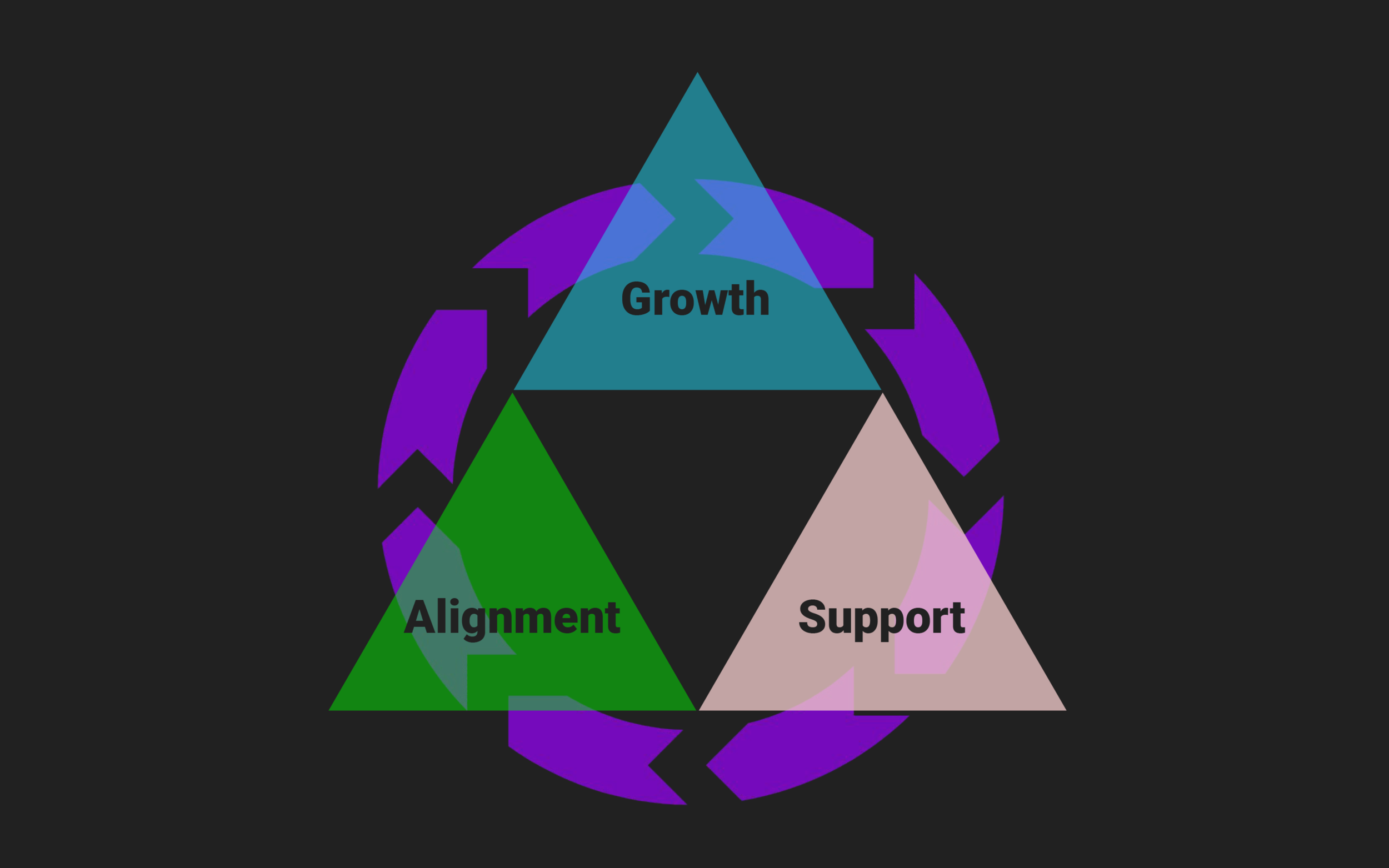
This is a holistic approach to culture maintenance for individual and team success -- alignment, growth, and support.
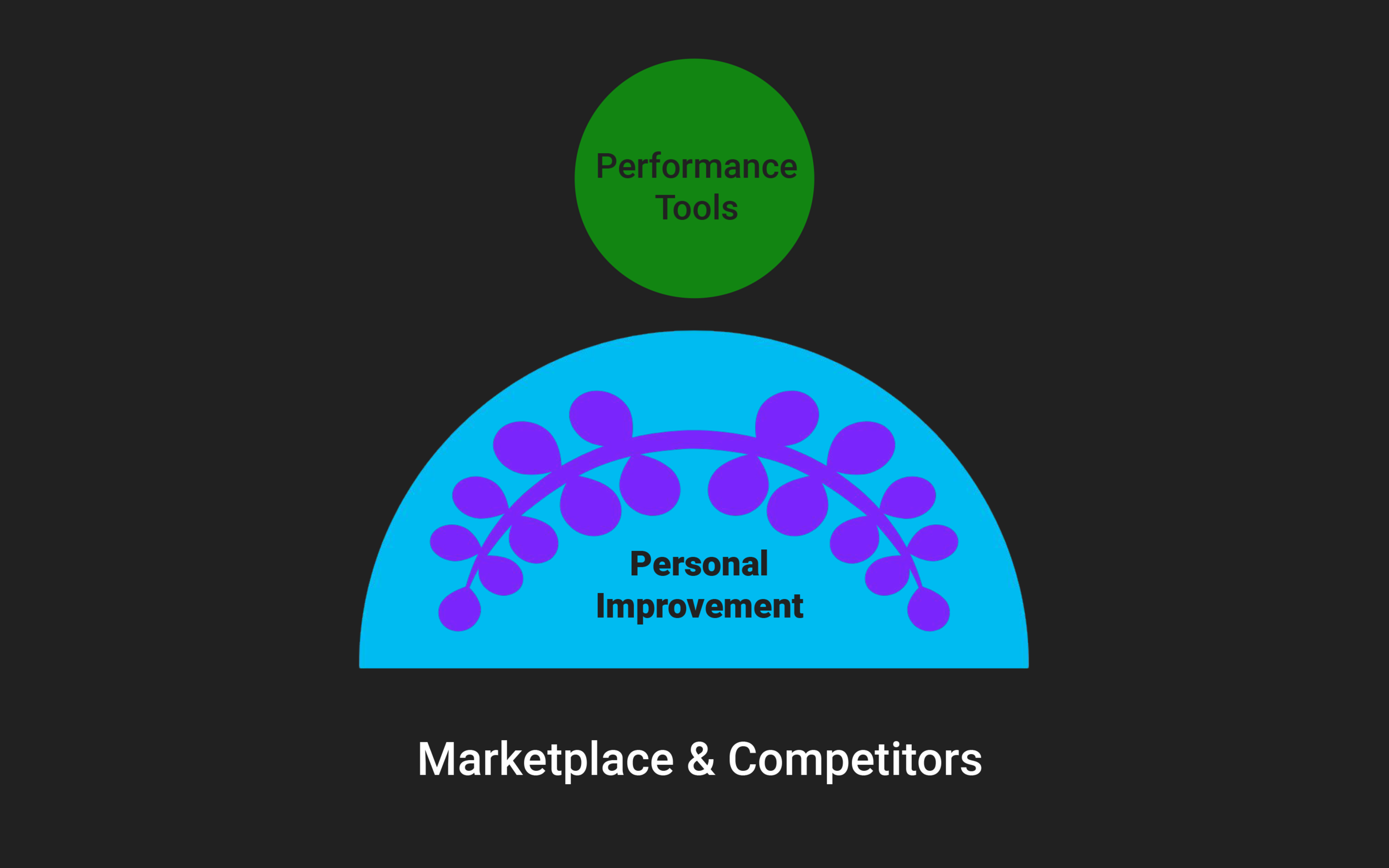
The personal improvement component is a simple performance tool -- which is a goal-based professional development tool.
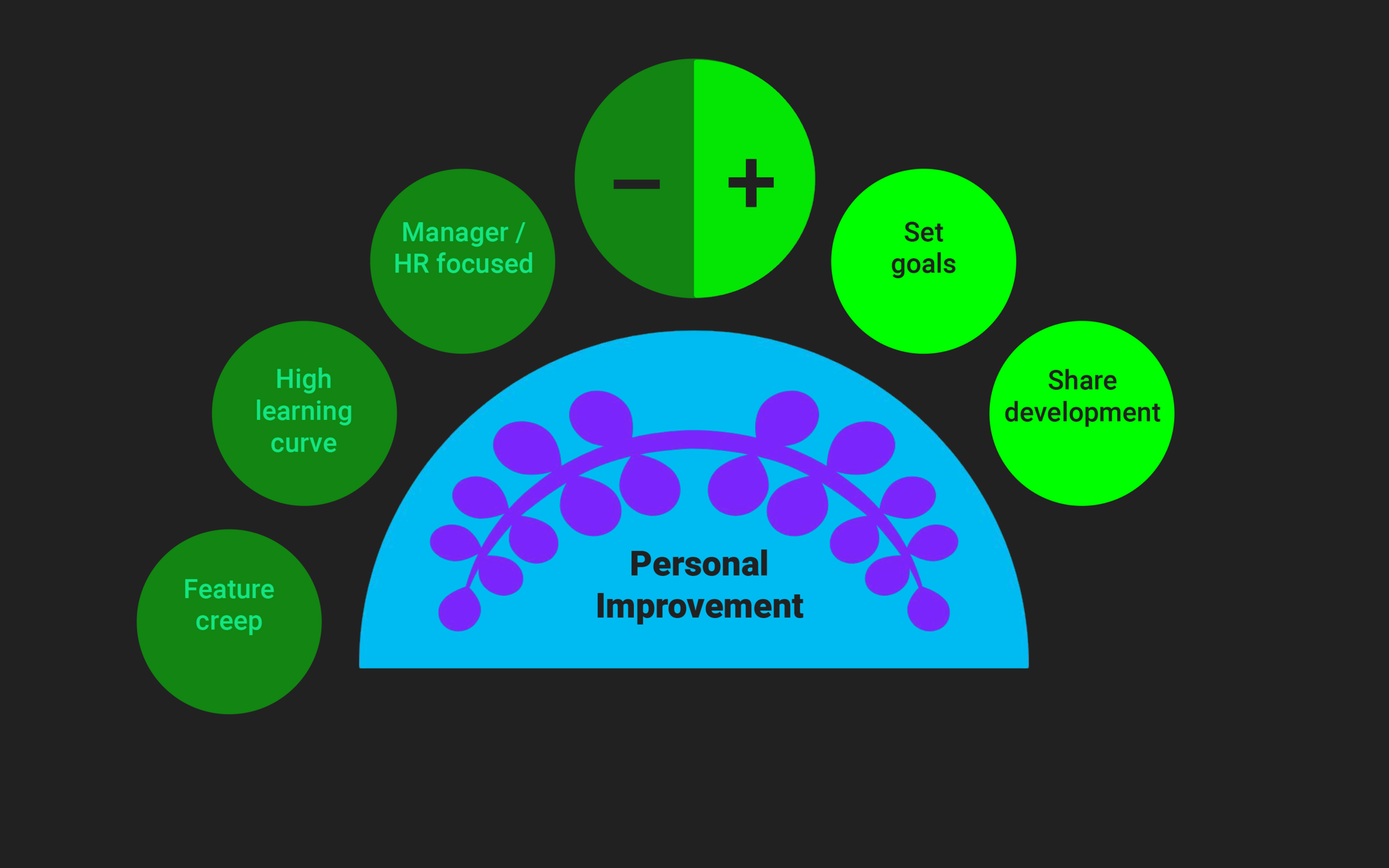
Examples include HR team improvement software “BetterWorks” and continuous performance management suite “15Five”.
Common features we like are the individual goal setting /// and the team-wide sharing.
We don’t like that it is targeted to the manager or HR team over the individual /// We also noticed a high learning curve /// and we think there are more integrations and interactions than serve a small team well.
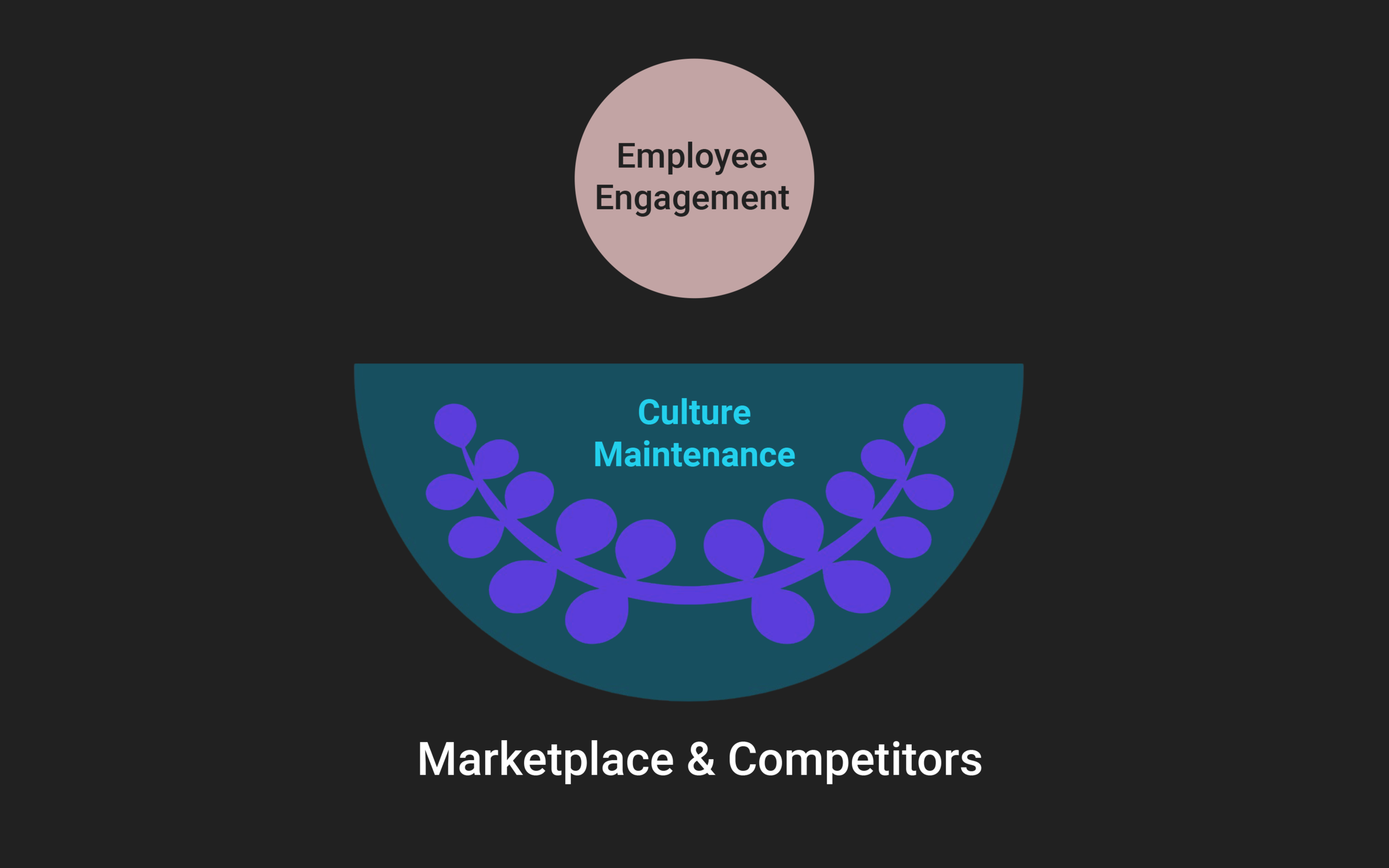
The culture maintenance side is a lightweight version of an employee engagement tool.
Examples include employee experience tool “Kazoo” and culture management platform “CultureIQ”.
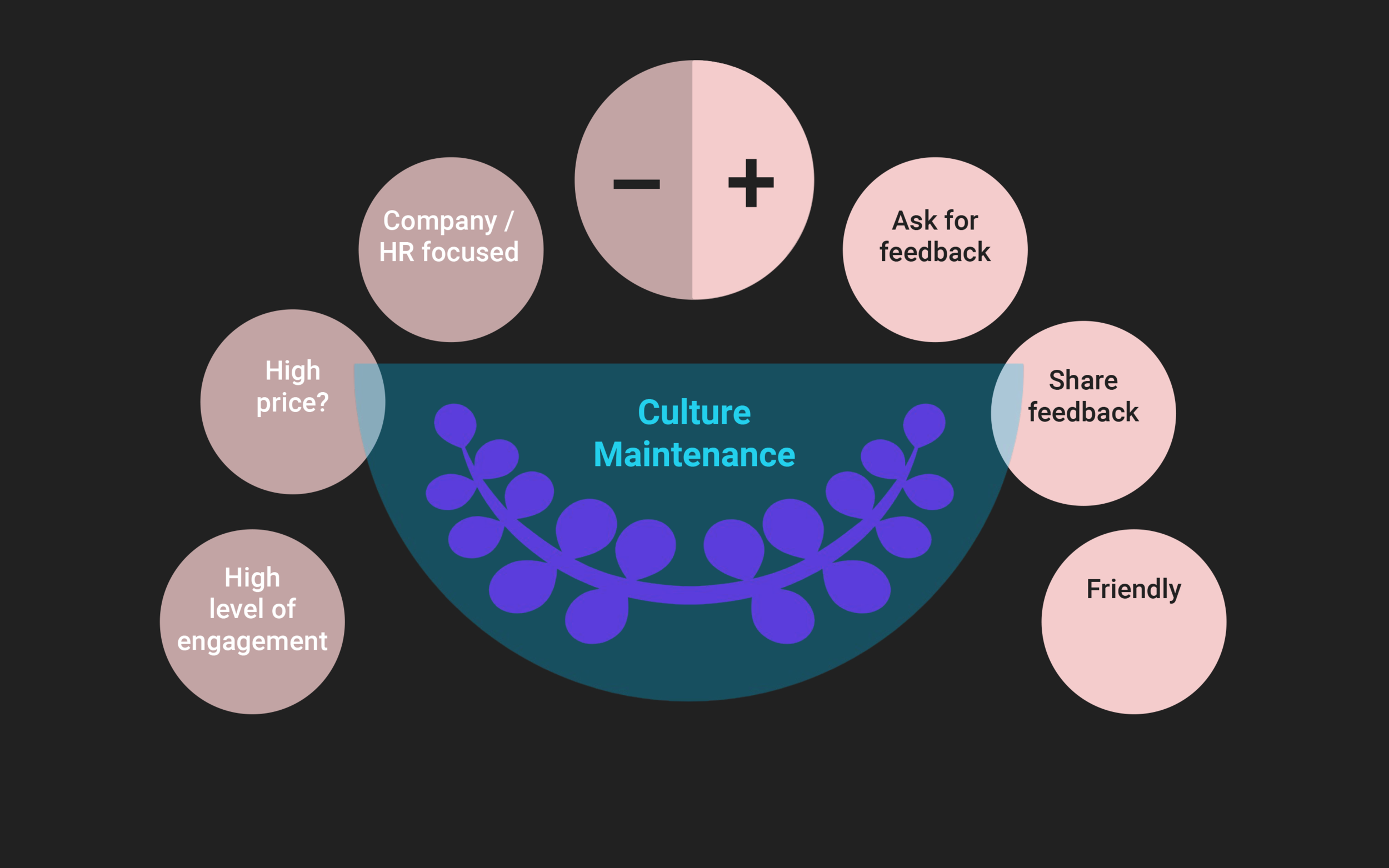
In this bucket we liked the feedback cycle /// and tendency toward friendly interface and tone
We don’t like that it is again targeted to the company or HR team over the individual. /// Pricing is custom and private, which suggests a high price. Finally we think there is more engagement than most people want -- which also creates more management oversight.
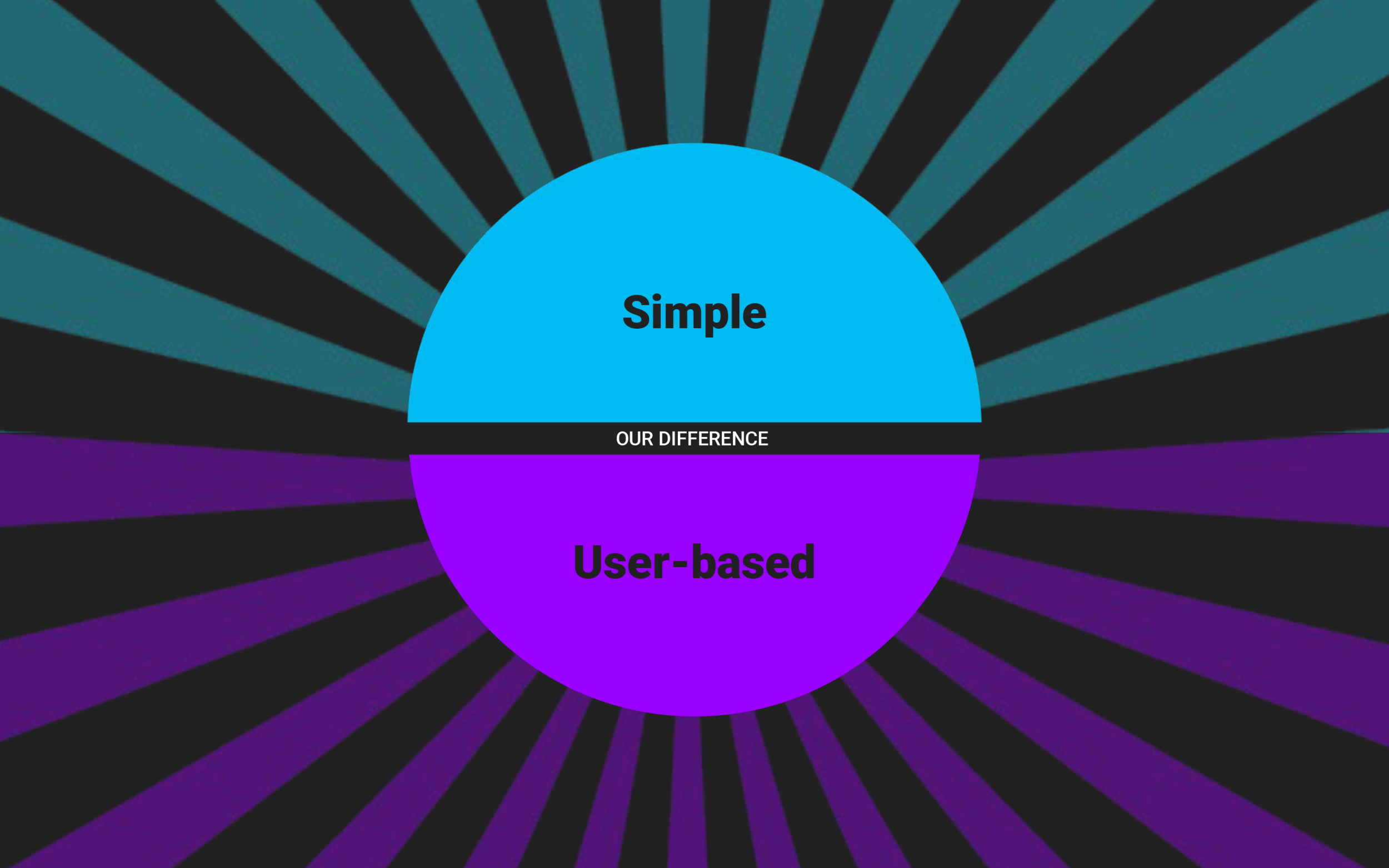
What we want to do differently is keep it very simple // and stay user-based and team sourced
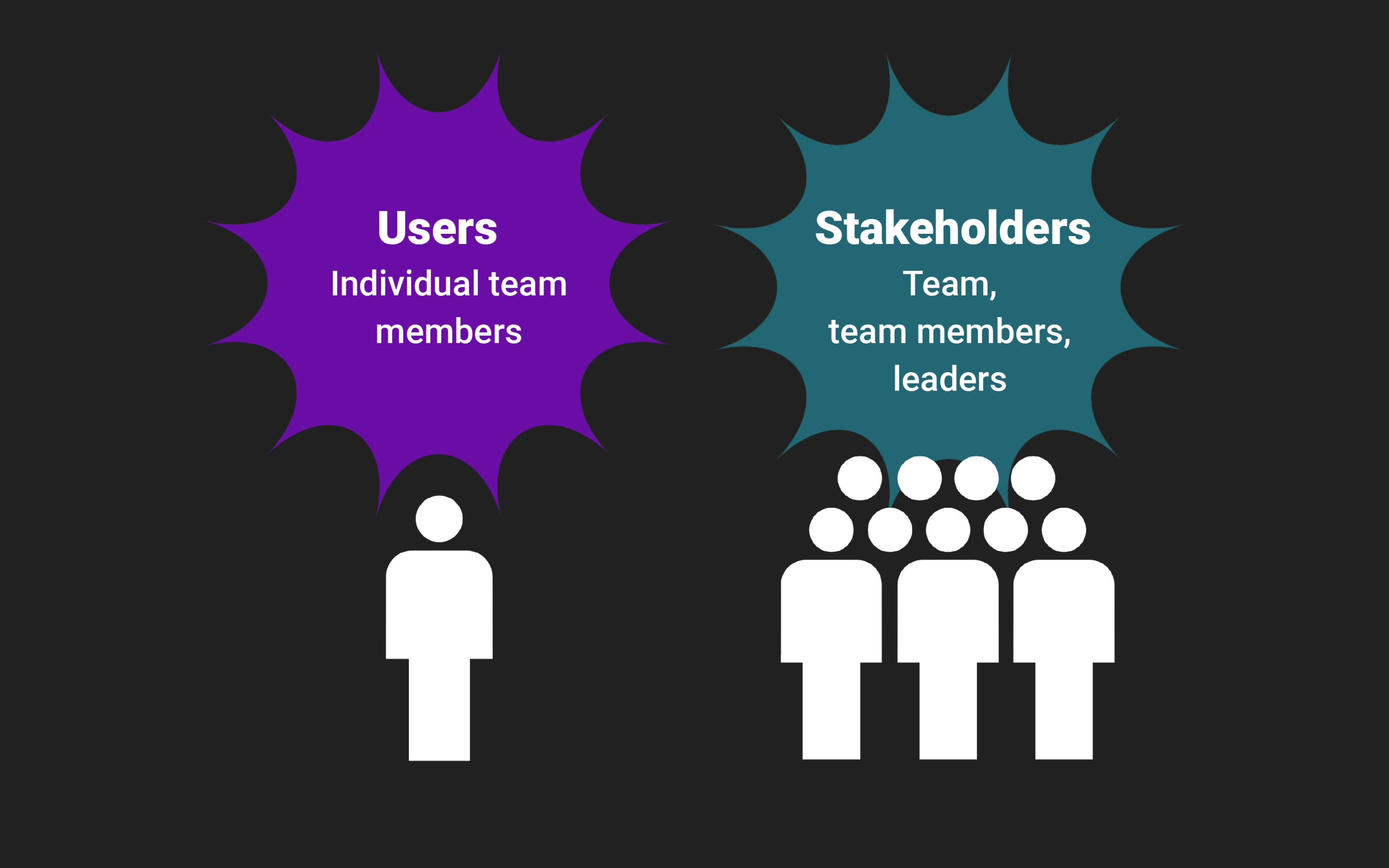
Our users are individual team members. We want to put the power to improve themselves into their own hands. The stakeholders are everyone on the team. The light team synch helps retain and attract talent without burdening leaders.
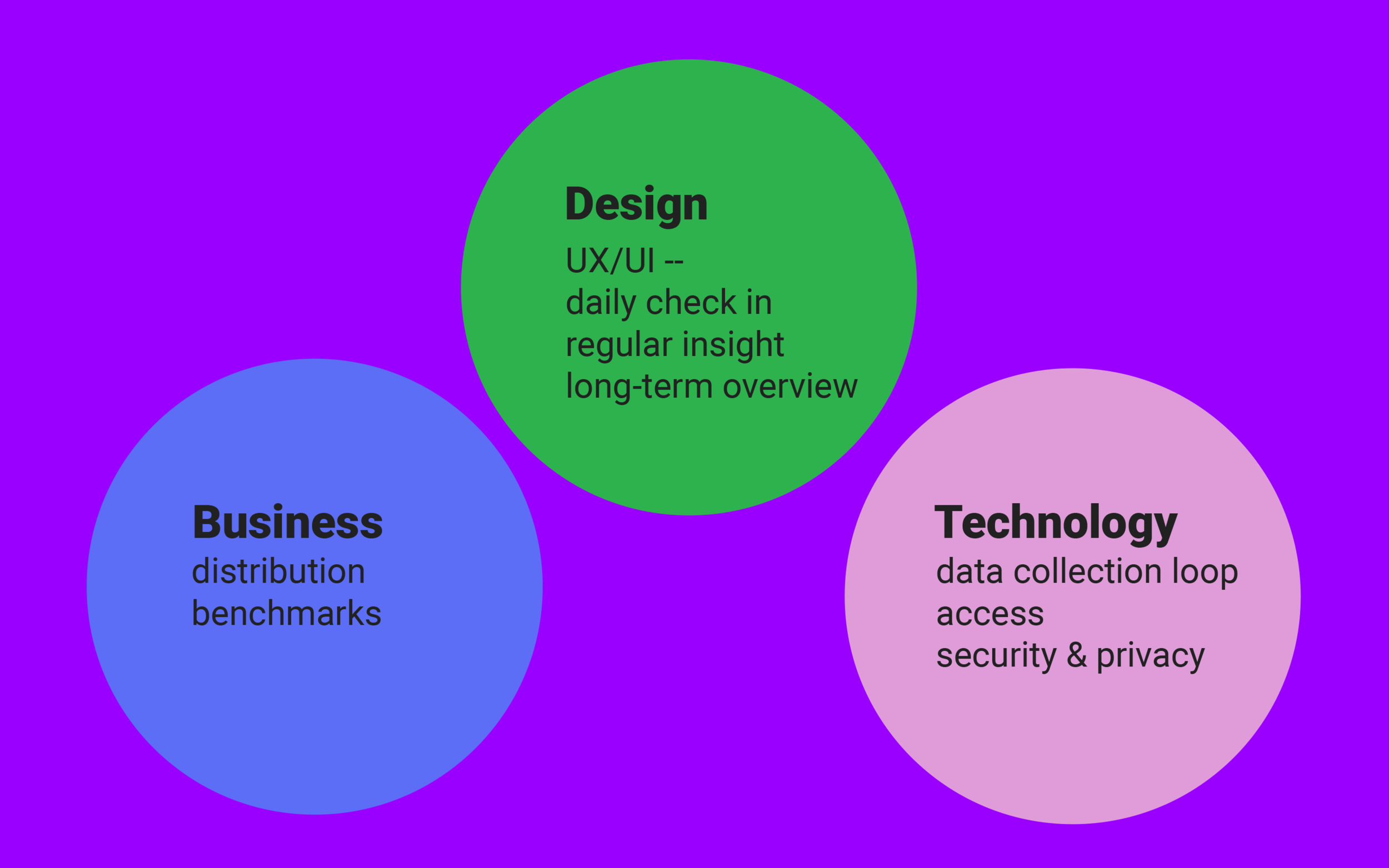
On the production side, our design will be focused on the user experience and user interface. The business strategy will focus on distribution and measuring growth. The technology piece is concerned with collecting and reporting data.
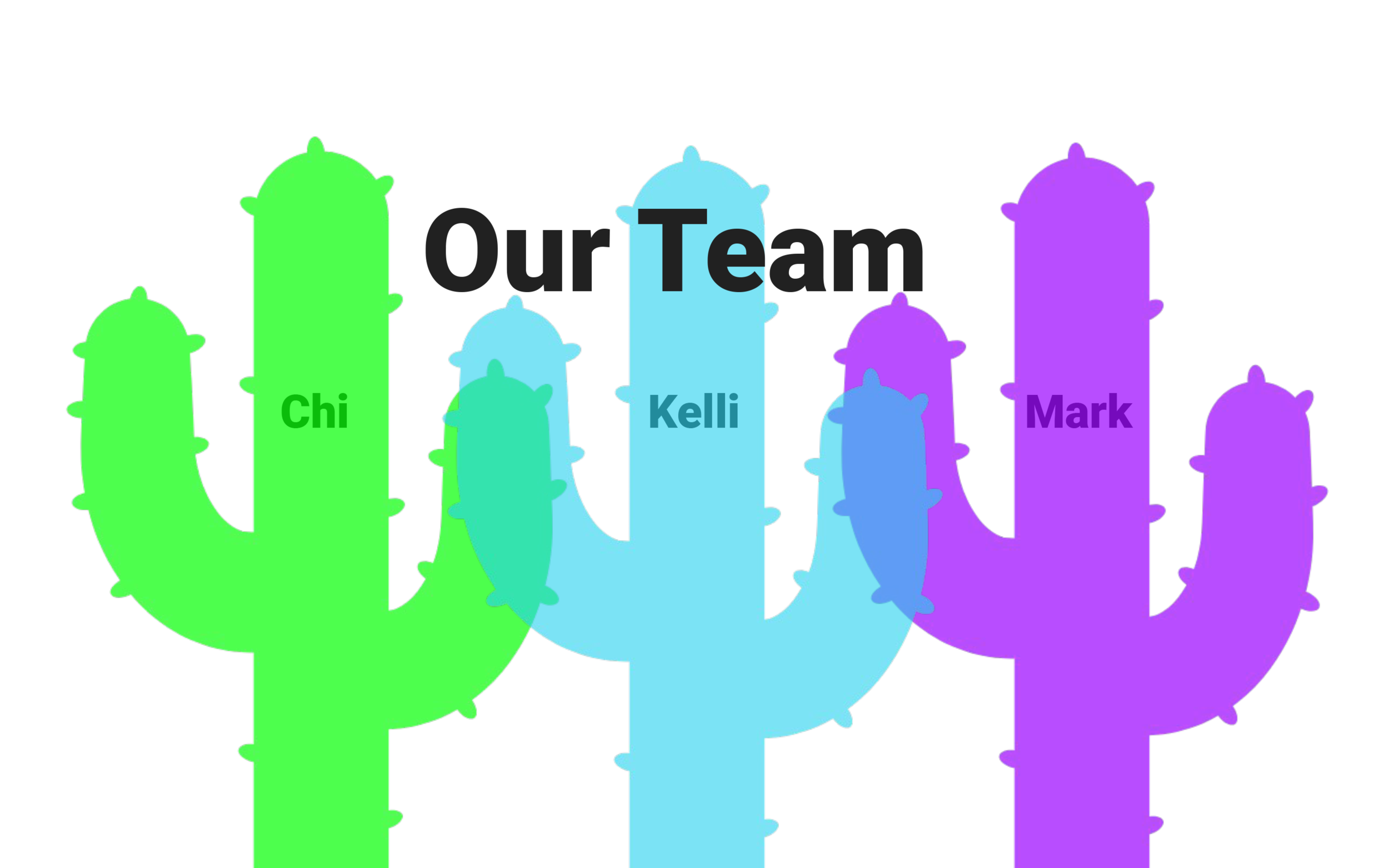
Let me introduce our team. Chi is in charge of general technology decisions and inspiring joy through the interaction and experience // I’m Kelli and I will be focused on the look and feel across tech and materials // and Mark will be reviewing data analytics and developing our business and marketing strategy -- with much overlap as is typical of a lean team.
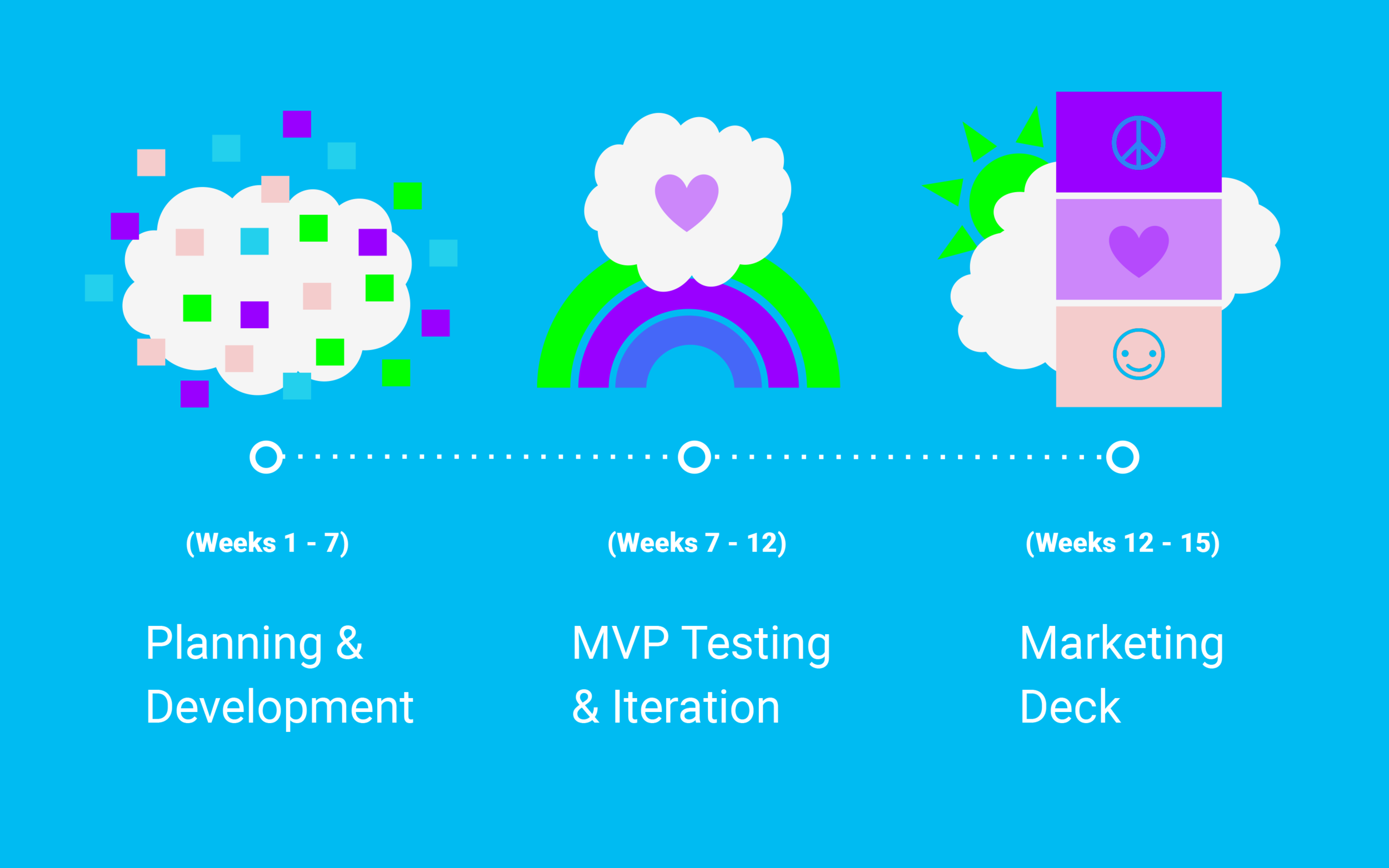
This is an overview of our plan -- the first 7 or so weeks are for planning and development, MVP testing and iteration through week 12, and we want to spend the remaining time refining our marketing materials and final pitch for partner buy-in
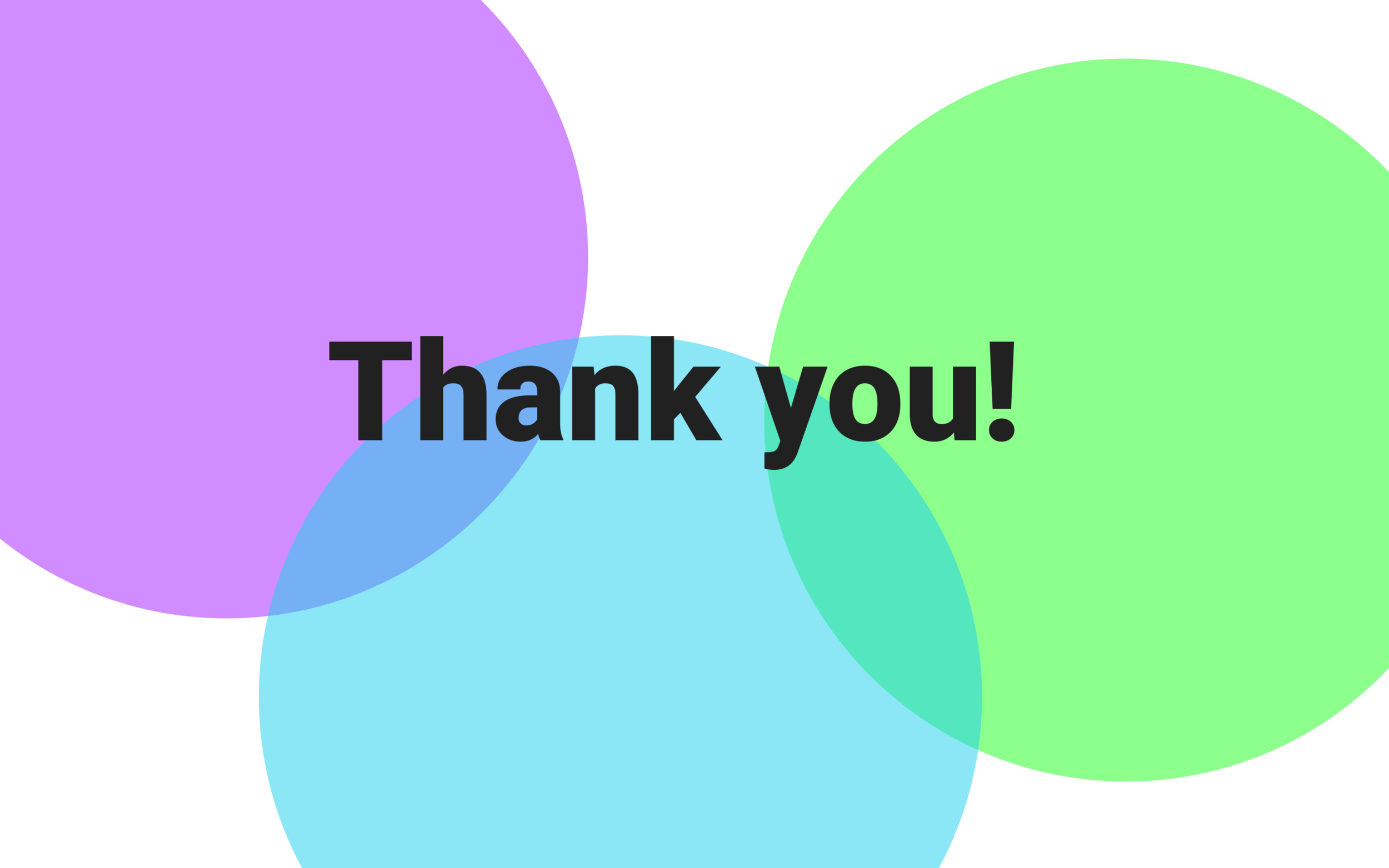




















Our initial proposal focused on providing “Culture Therapy” research to uncover how people felt about their respective roles in team environments.
Created in Google Slides with the Noun Project
Related: Previous Culture Research
Research + Analysis
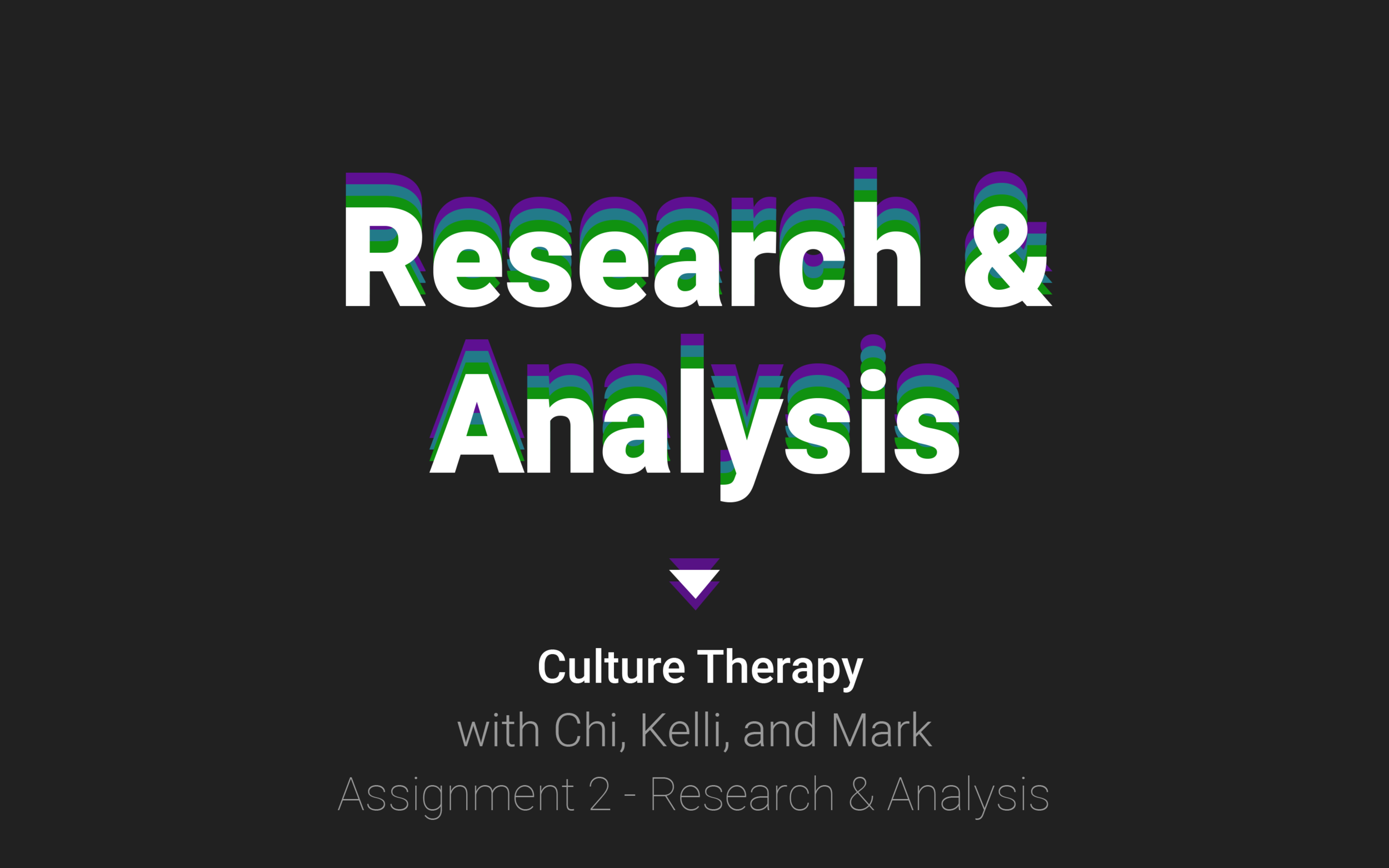
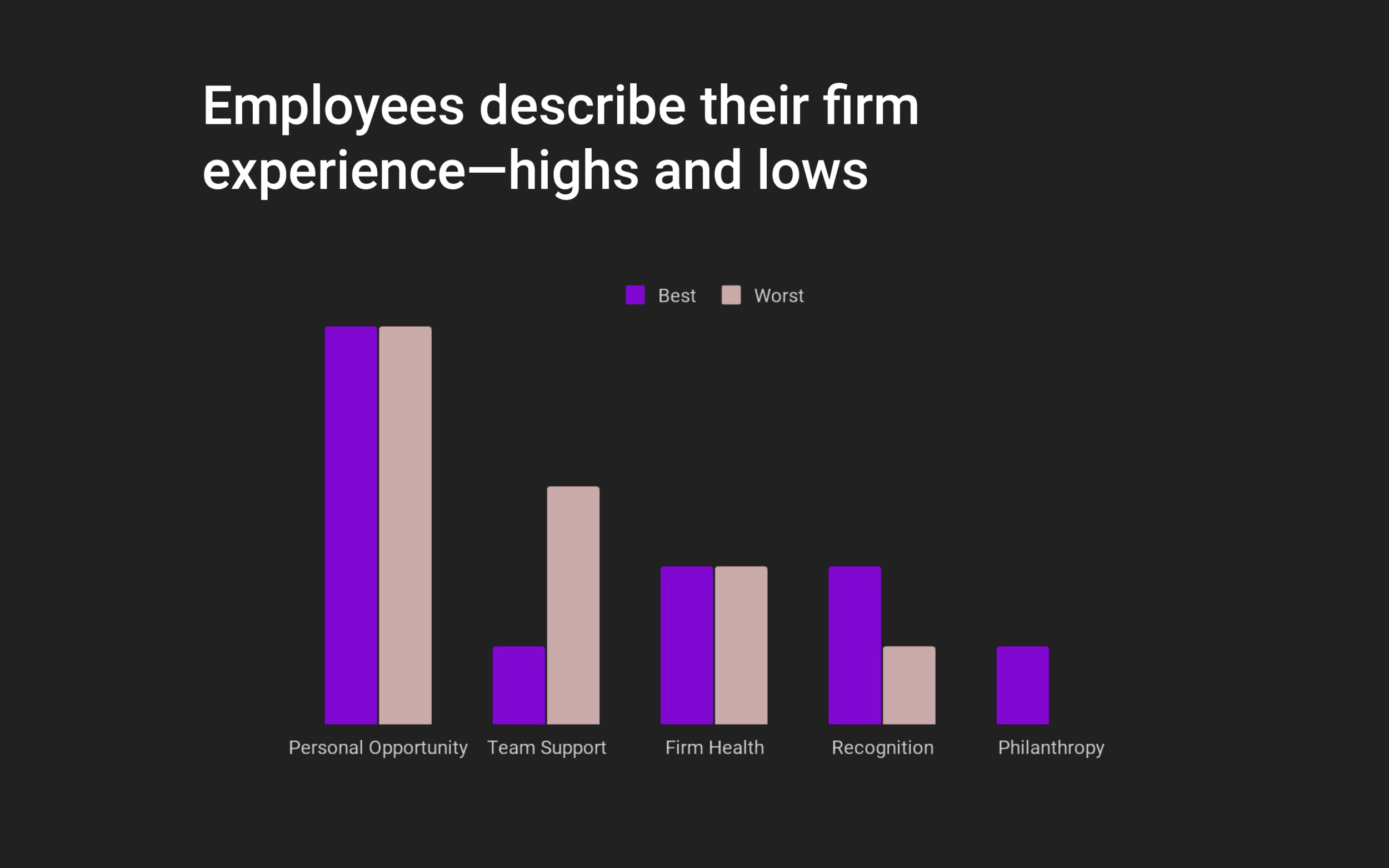
Kelli began this project last term with a study of culture at a small firm of 11 employees
-- In one exercise, the employees were asked to describe their emotional highs and lows at the company
— She found that Personal Opportunity and Team Support represented a large percentage of the high-emotion experiences of employees
Yet, the firm wasn’t able to devote enough resources to these sensitive topics, and as a result employees felt a disconnect in the workplace
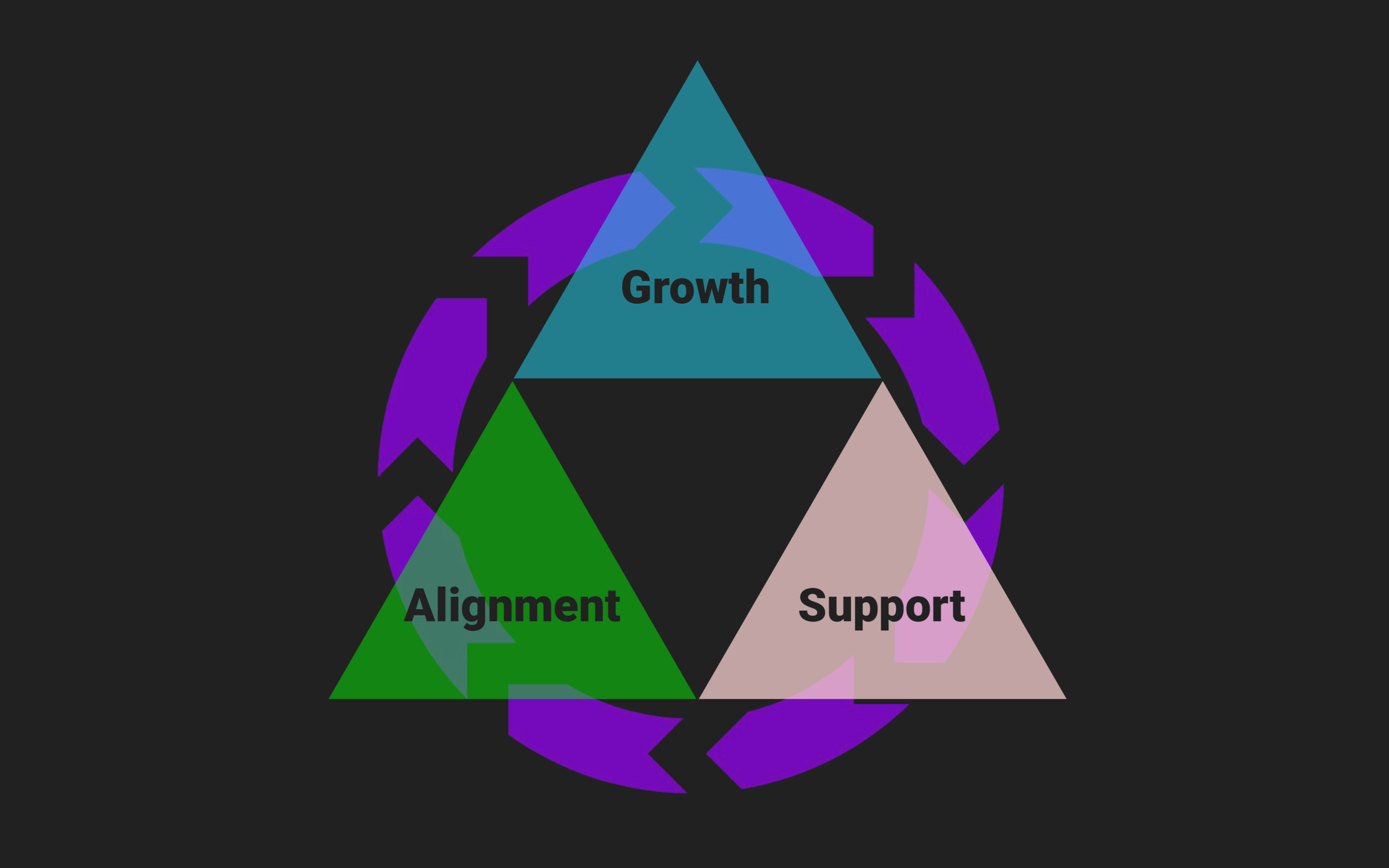
This term, we wanted to focus our research on three primary elements-- personal growth, team alignment, and support -- as the foundation for a solution. Our idea was that regularly sharing individual experiences and goals could help to energize these three elements and holistically improve team culture, without creating additional management tasks or training.
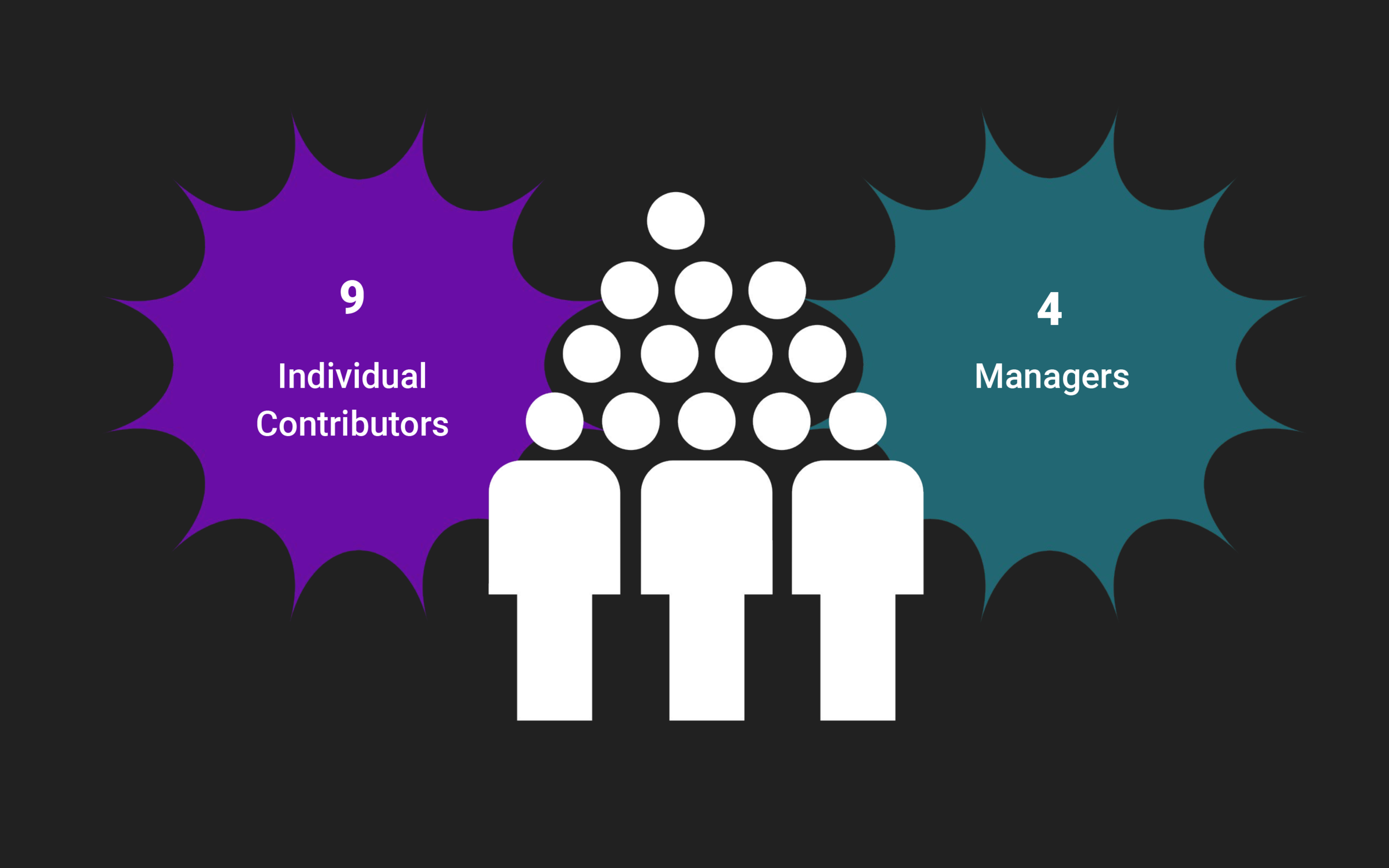
Over the past couple weeks, we interviewed 13 people across different industries, teams, and roles to broaden the investigation.
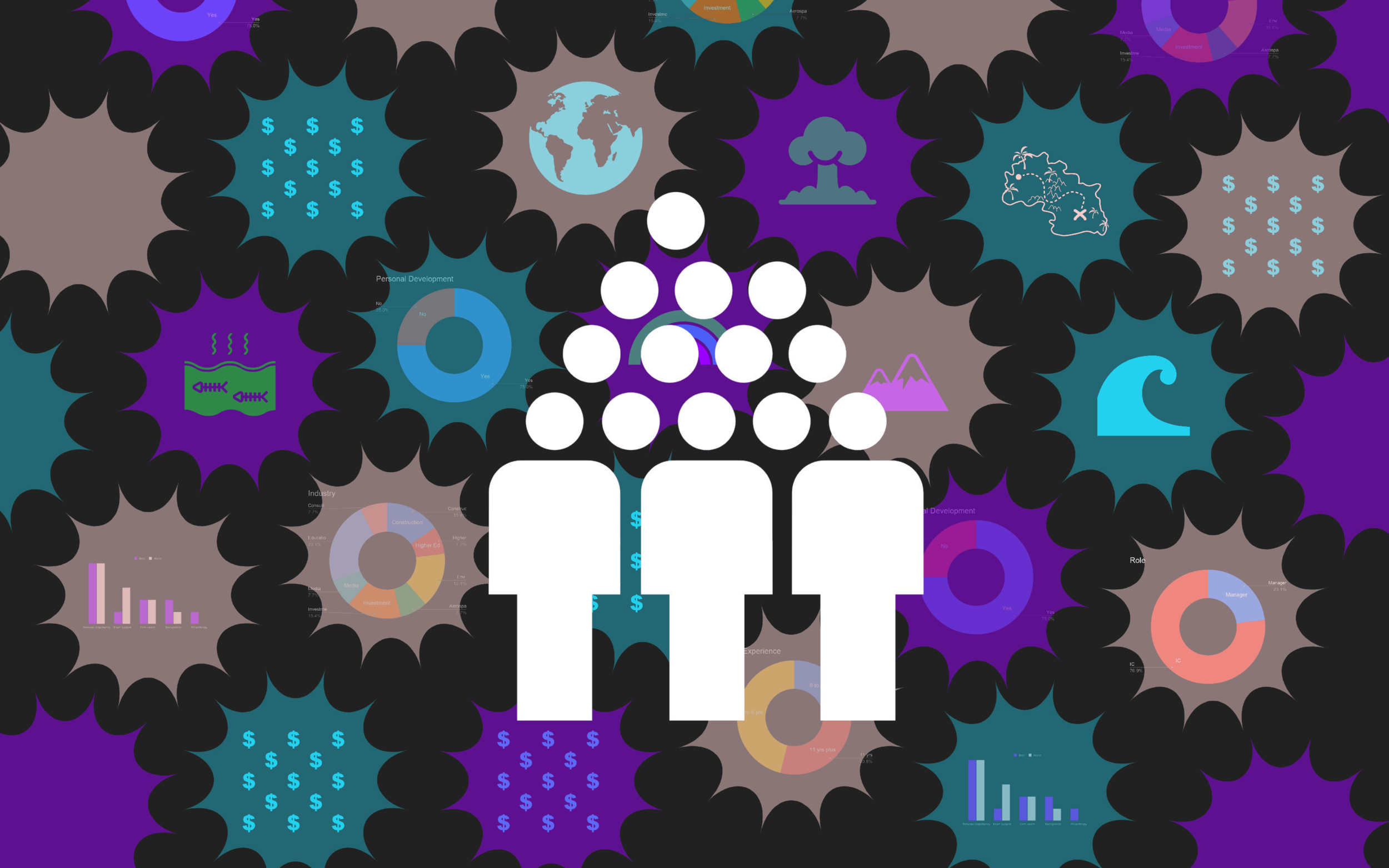
Our interviews unearthed many different perspectives, which added significant noise to our data. We talked about goals, tools, office life, team dynamics, personalities...Some our findings were concepts we expected to find (but are still important to our research nonetheless.) Here are a few of those findings:
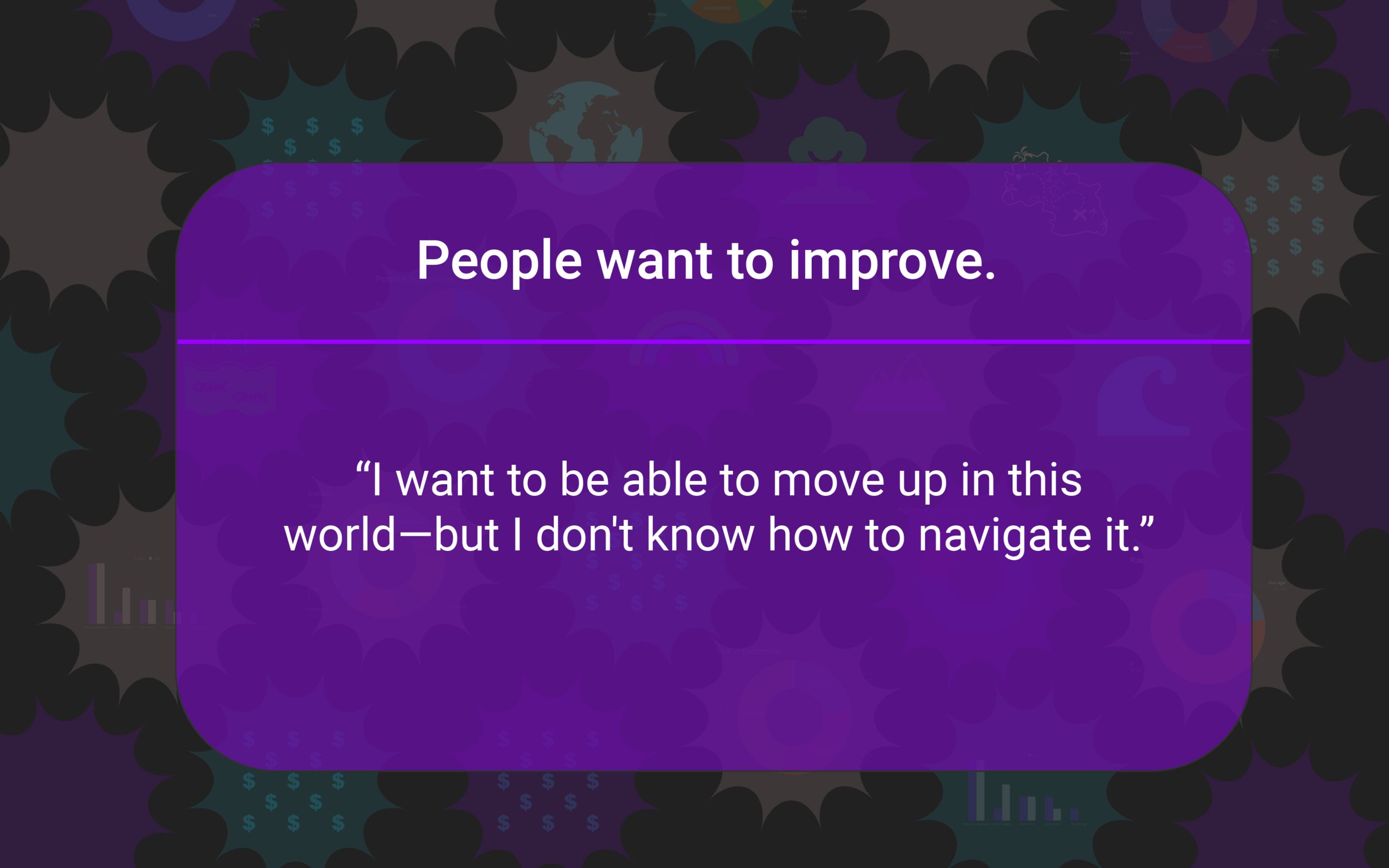
This was a consistent theme across nearly of all our interviews
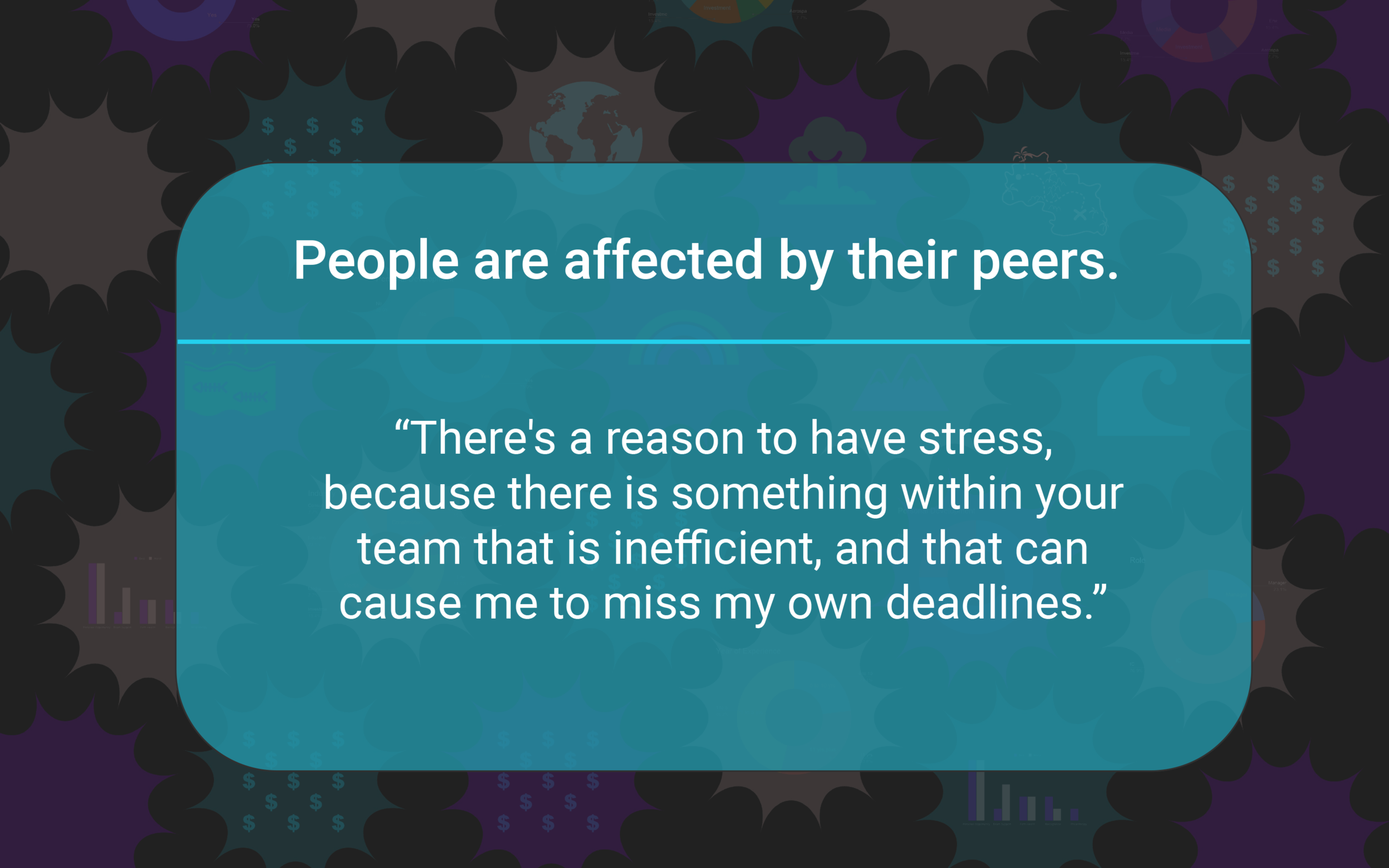
Teams are rarely perfect, and that will always have an impact on your own work
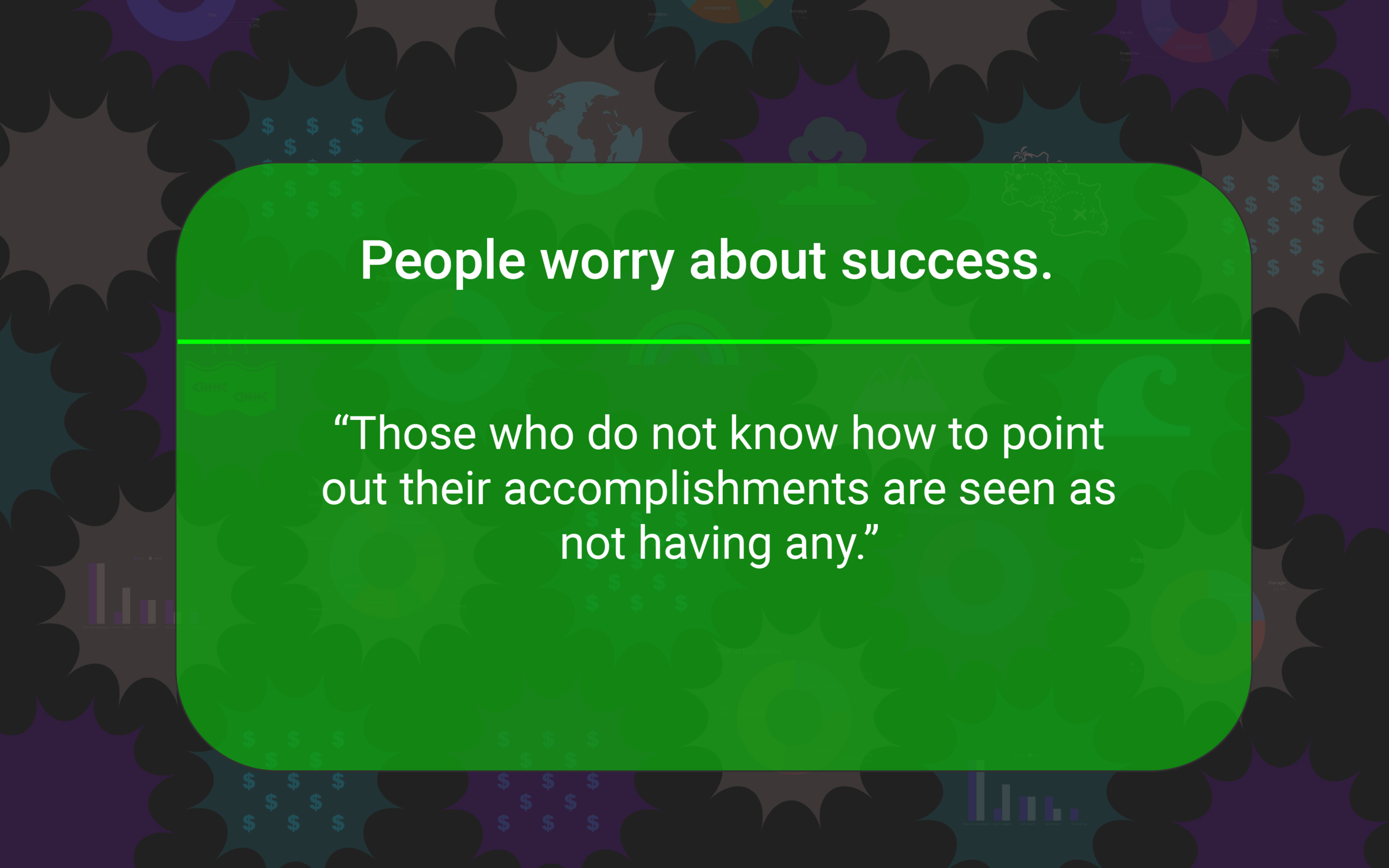
Within our primary research, we also discovered some new perspectives that we did not anticipate. Here are a few of those ideas:
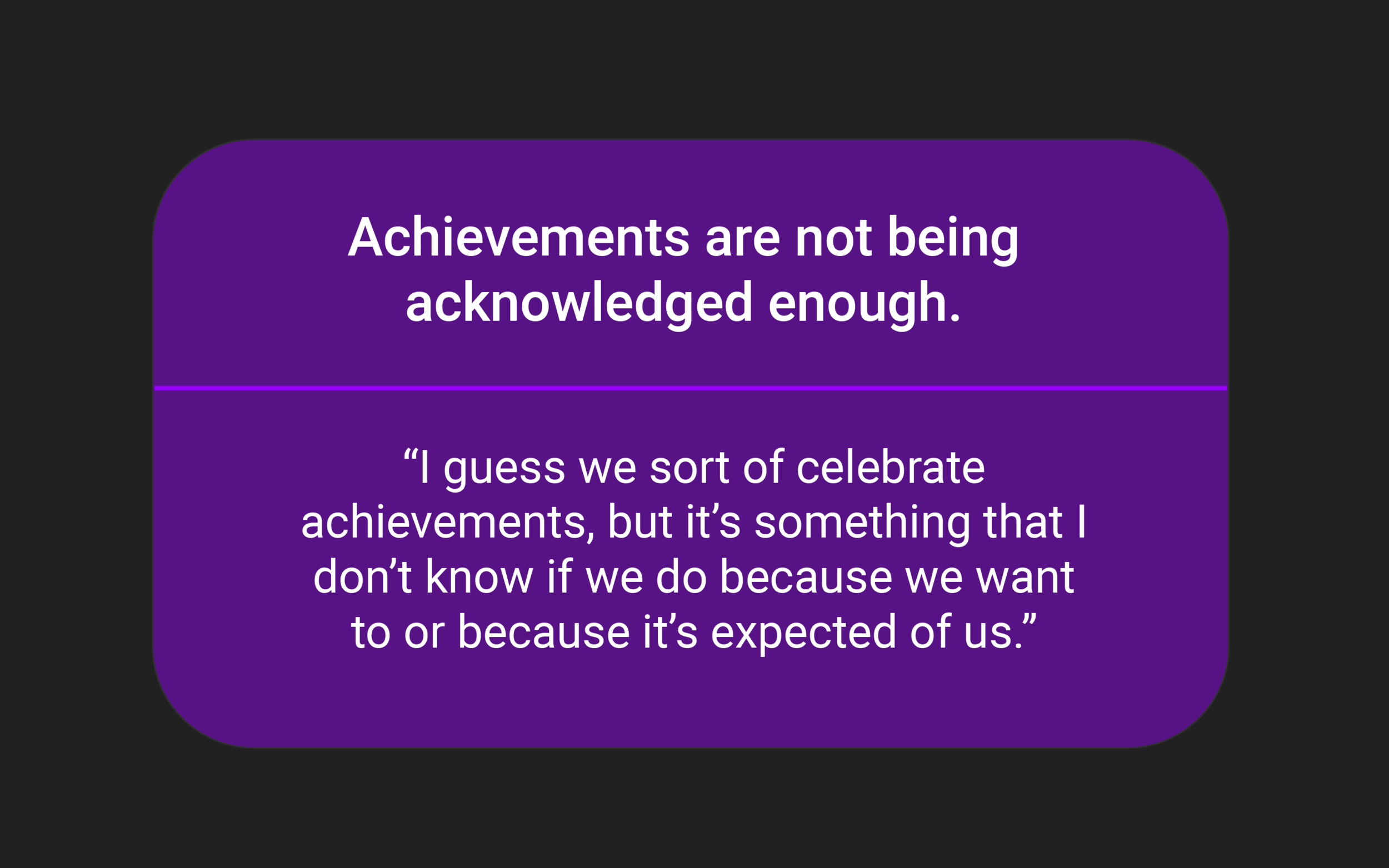
We noticed a general lack of positive feedback environments throughout those we interviewed
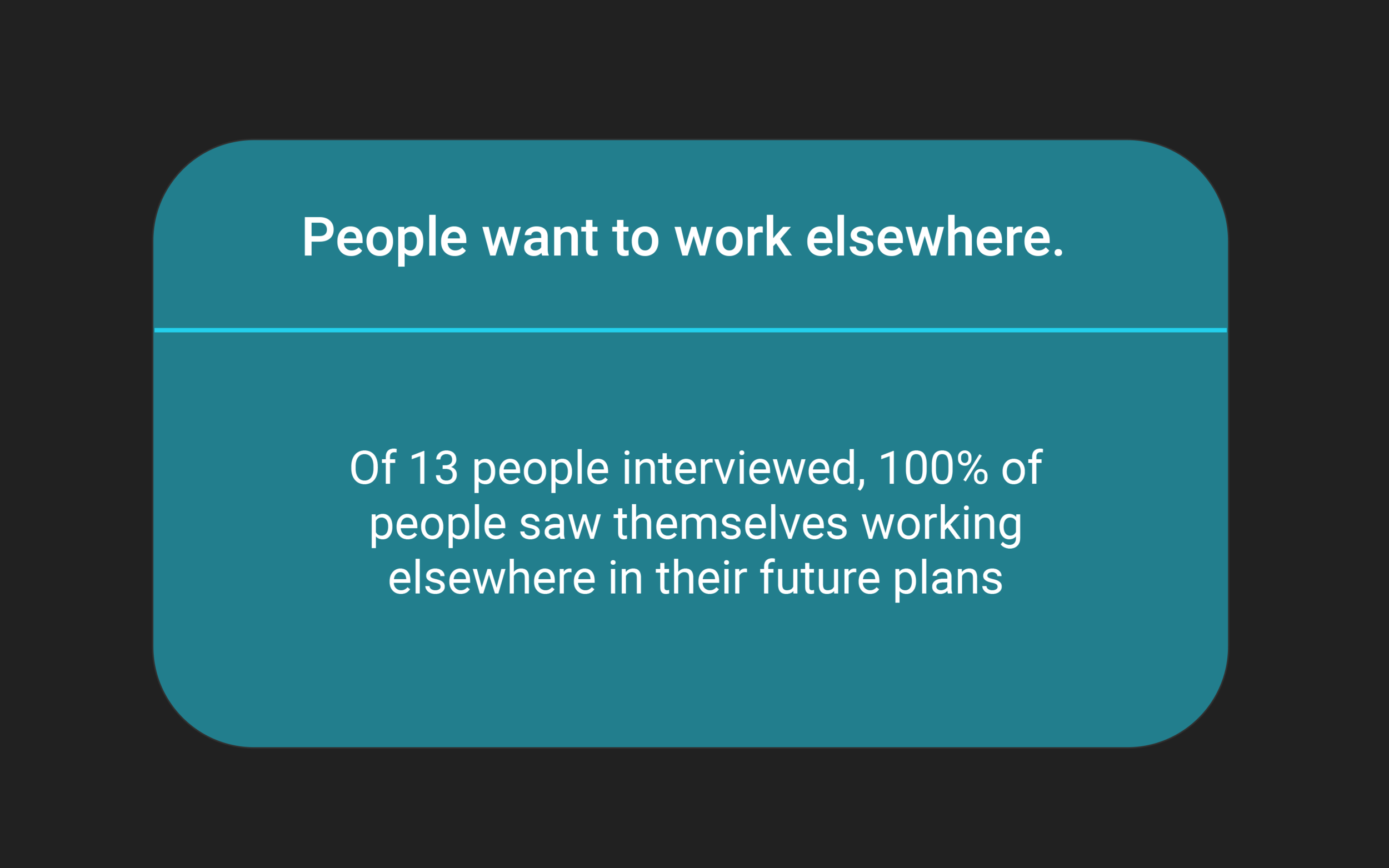
People want to work elsewhere, and some are looking forward to when they won’t have to work at all. Of the 13 interviewed…We thought this was important because it suggests that traditional career growth paths are shifting
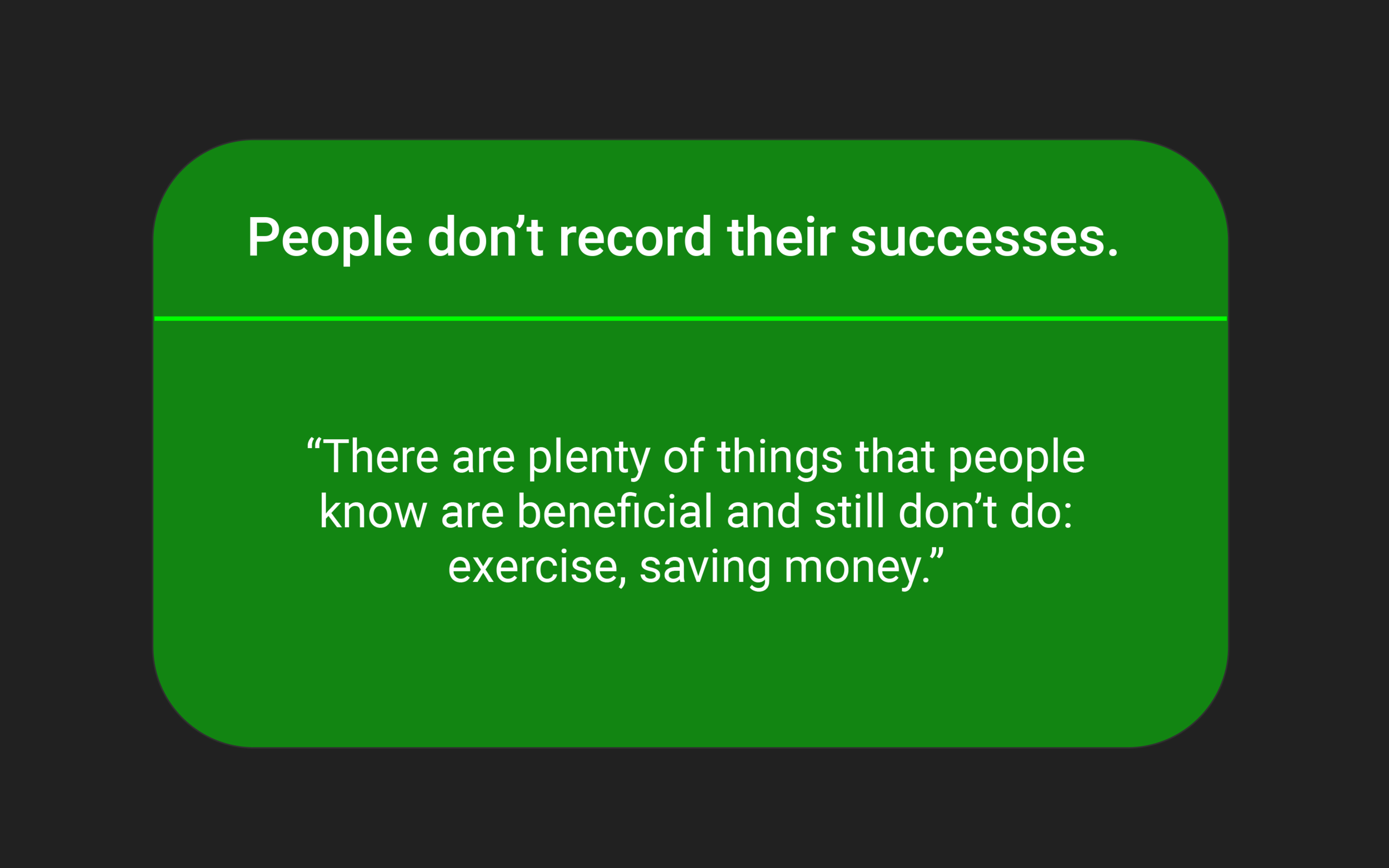
Finally: I think we can all associate with this concept. But it begs the question, from a behavioral perspective, how might we encourage people to engage in positive affirmation of their own achievements?
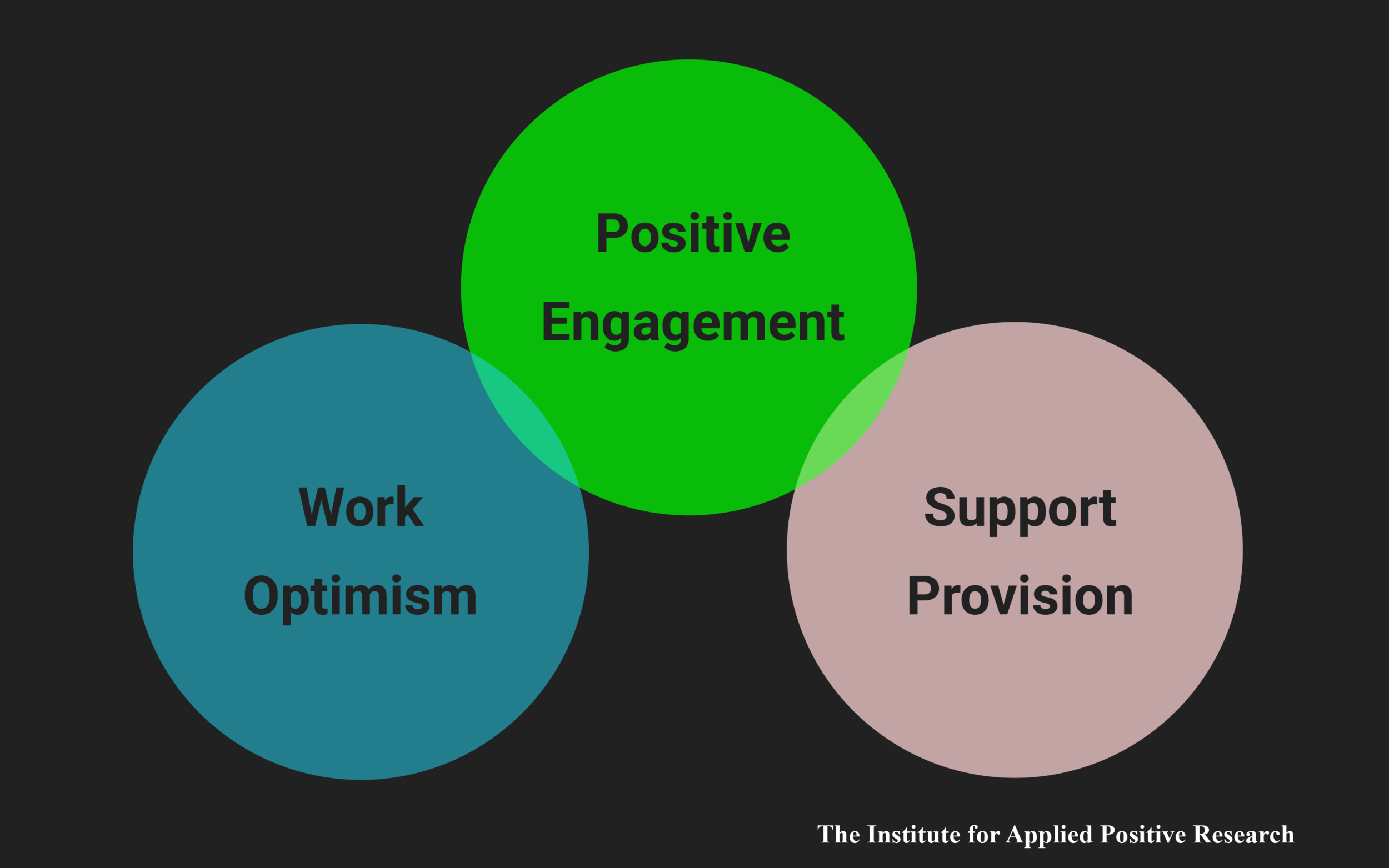
In addition to our primary research, we collected some supplemental materials to help us refine our approach. One study we looked at from The Institute for Applied Positive Psychology found that there are three main connections between personal behavior and positive growth at work. Work Optimism (which means you believe good things happen), Positive Engagement (confidence in your own success), And Support Provision (you actively seek out helping others). --- The central idea is that sharing positivity breeds more positivity and growth.
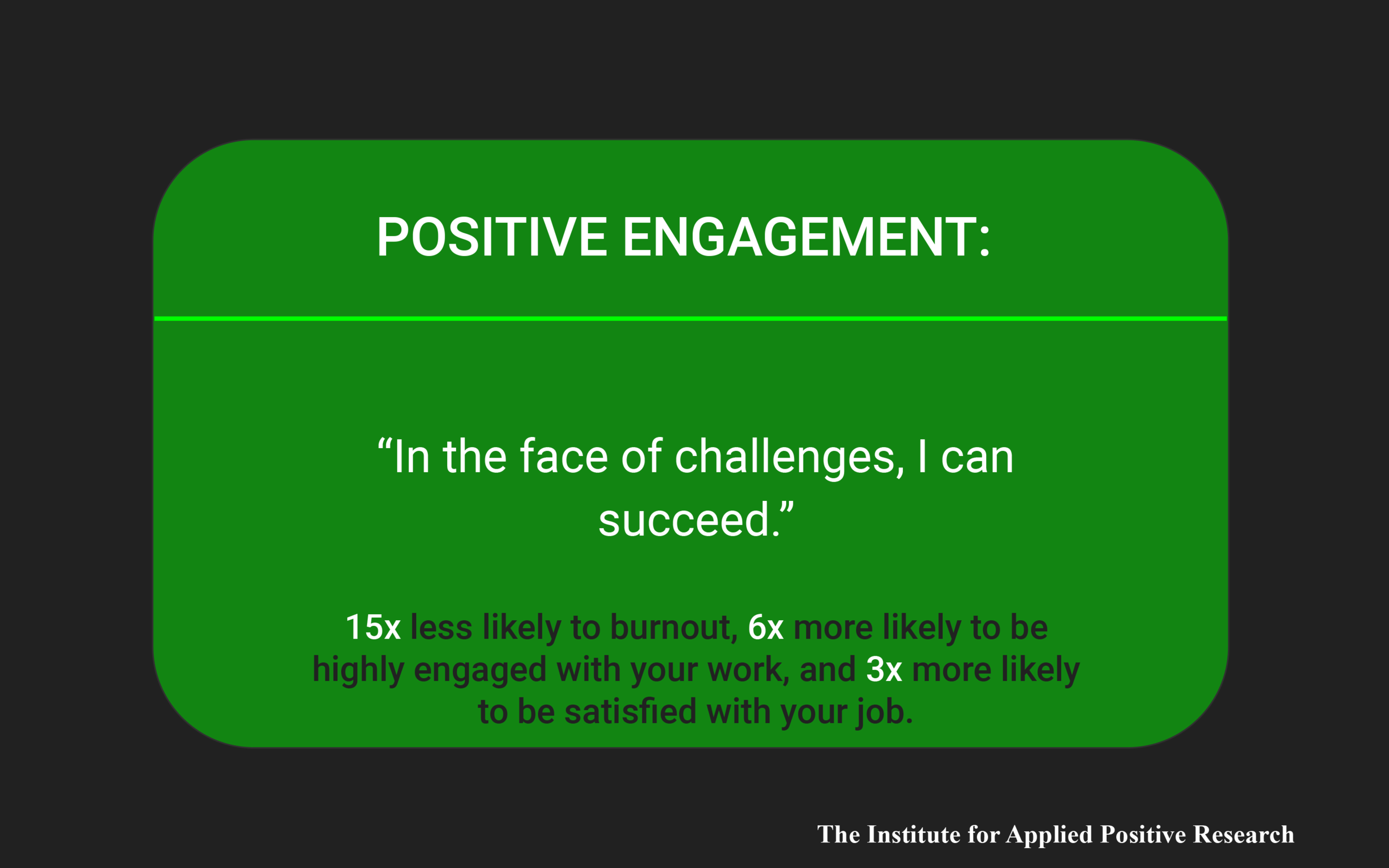
Looking at those three behaviors, we can see the potential benefit for the individual
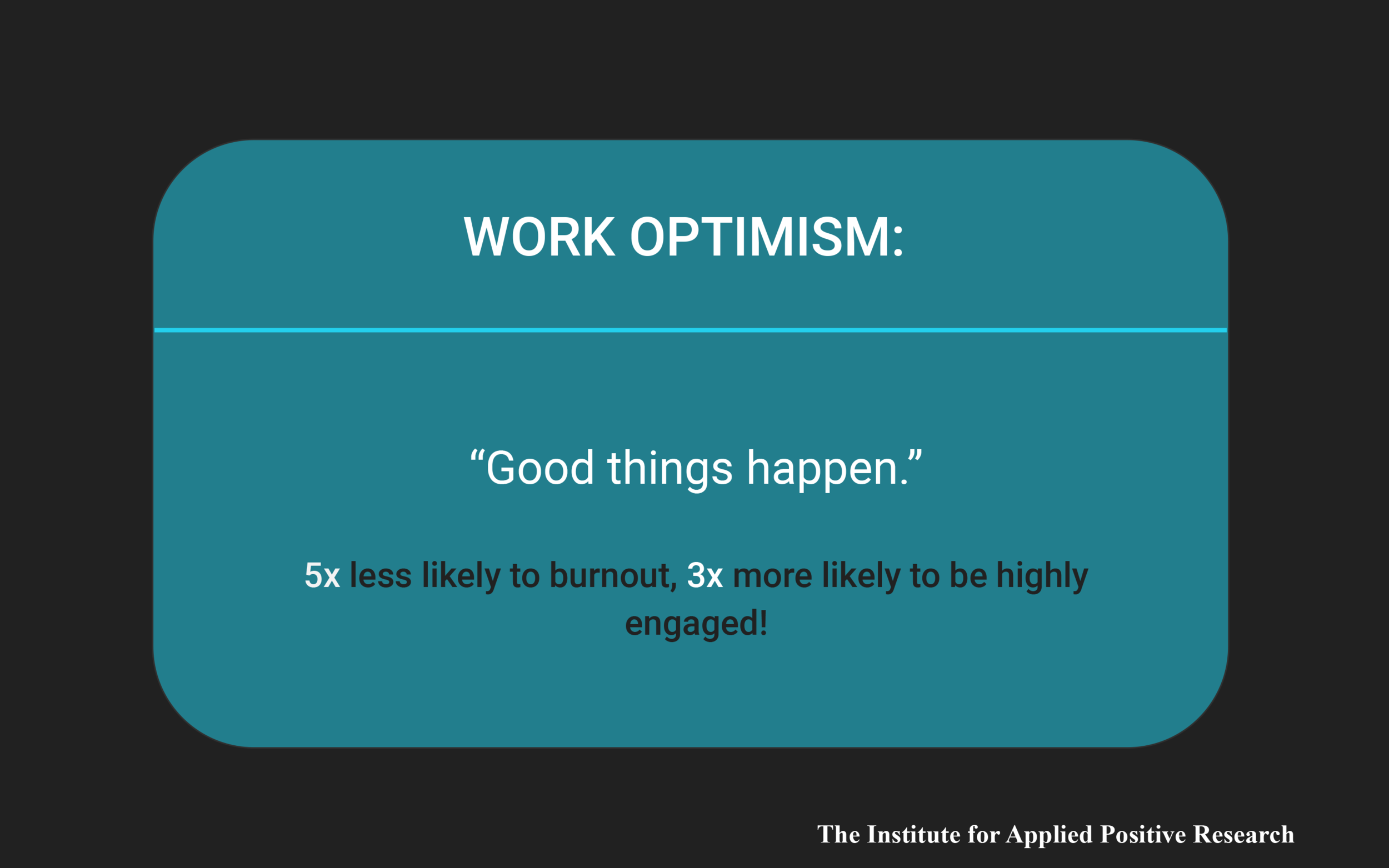
Work Optimism (good things happen)
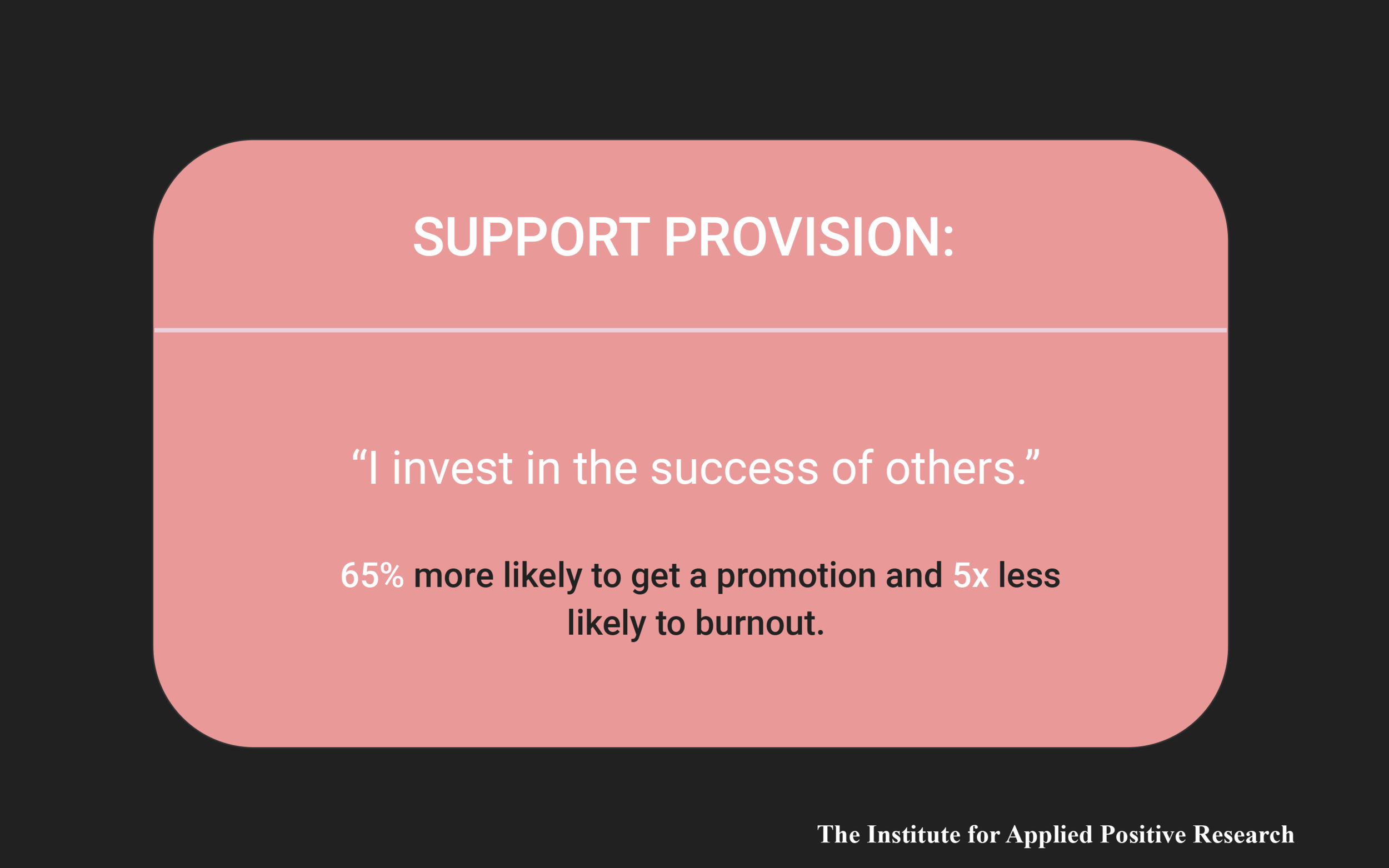
Support Provision (I help others)
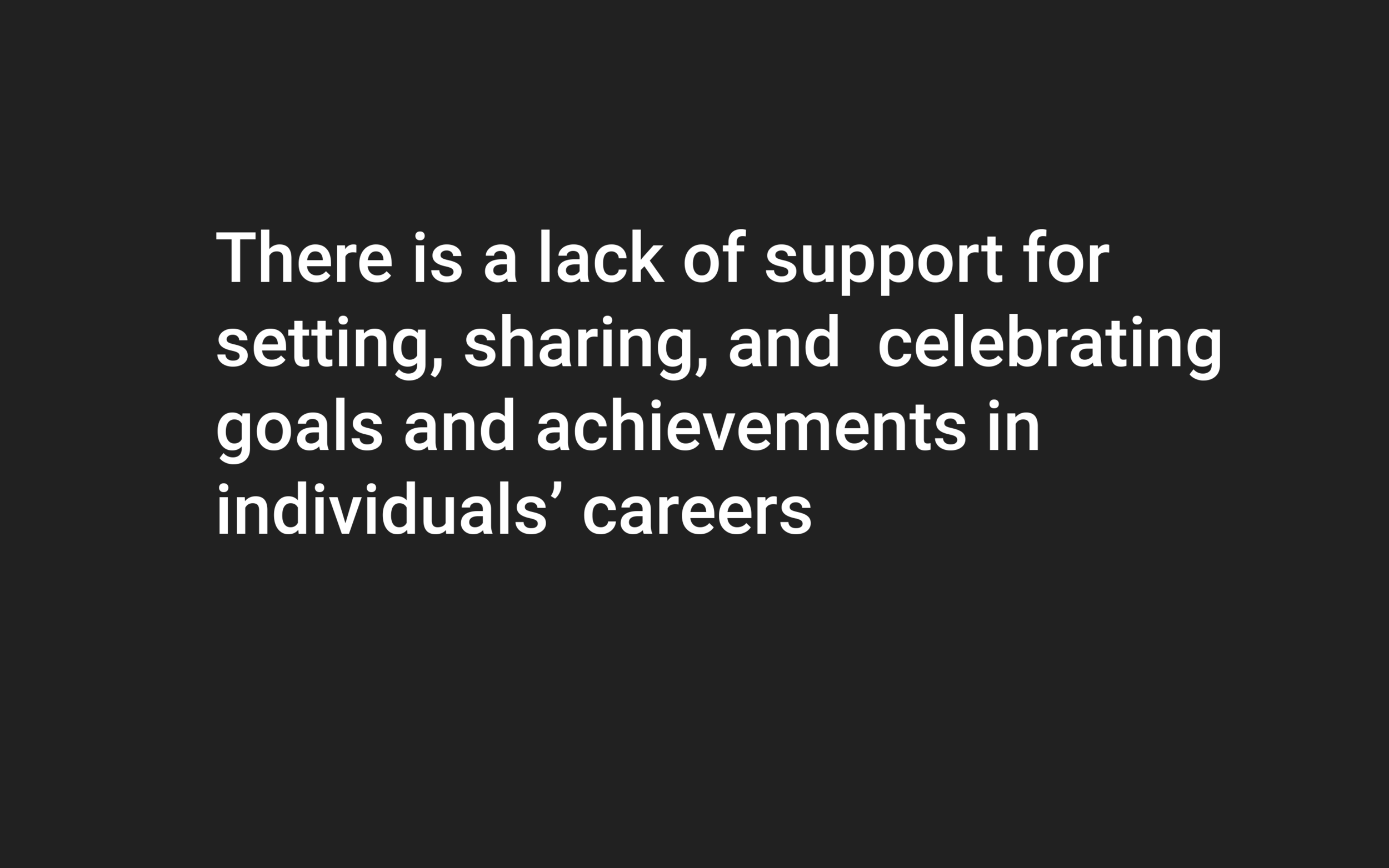
So, to summarize our research up to this point, it seems to us that:
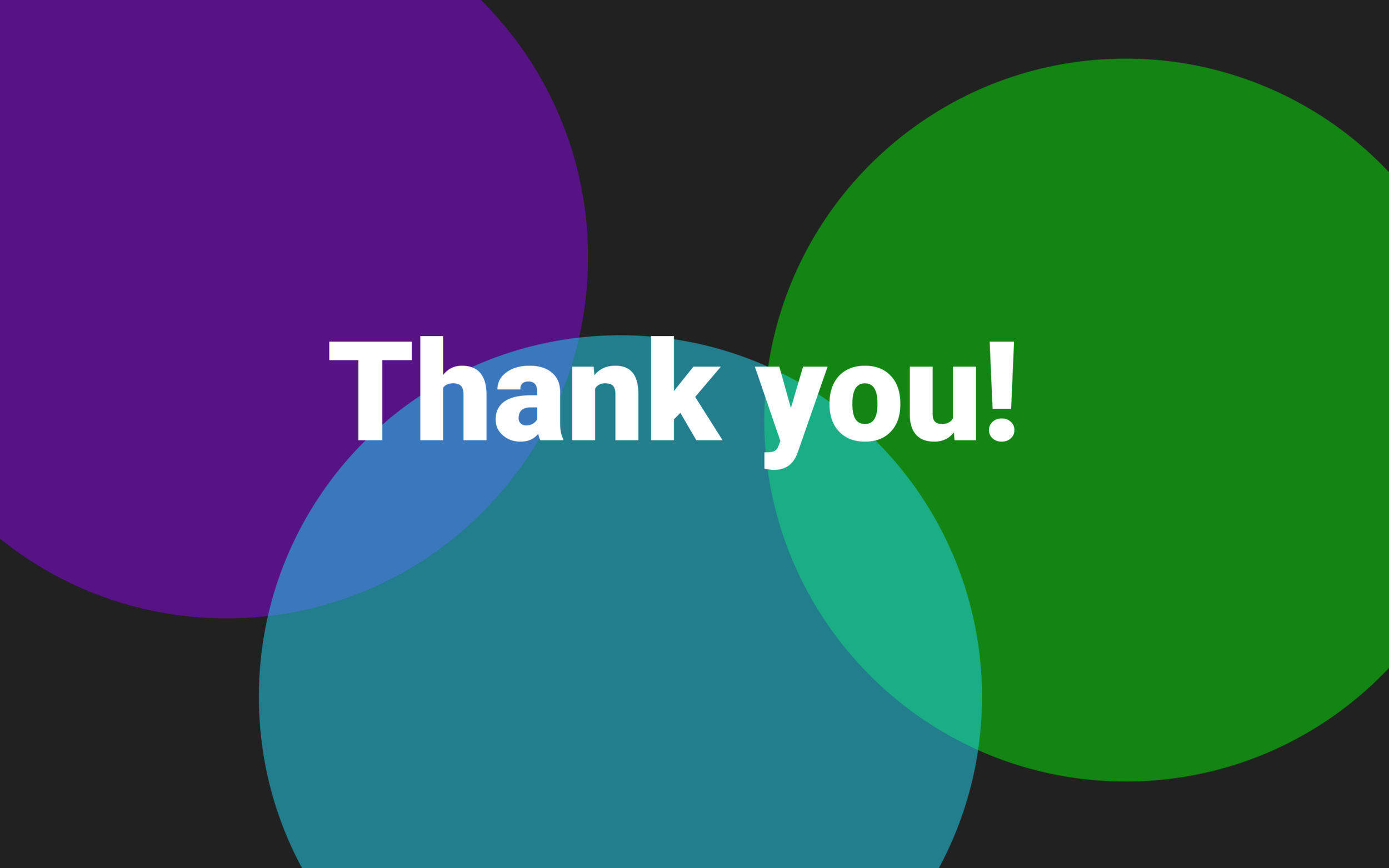

















We created an Interview Kit to keep our research consistent. Though all interviews were conducted in person, we also made a survey version that would allow us to passively collect more data. Add your answers to our survey database.
Created in Google Slides with the Noun Project
Definitions
Our first round of insights discovered from the initial research phase steered us toward facilitating positivity and support for individual goals.
Created in Google Slides with the Noun Project, presented here without script notes
Ideation
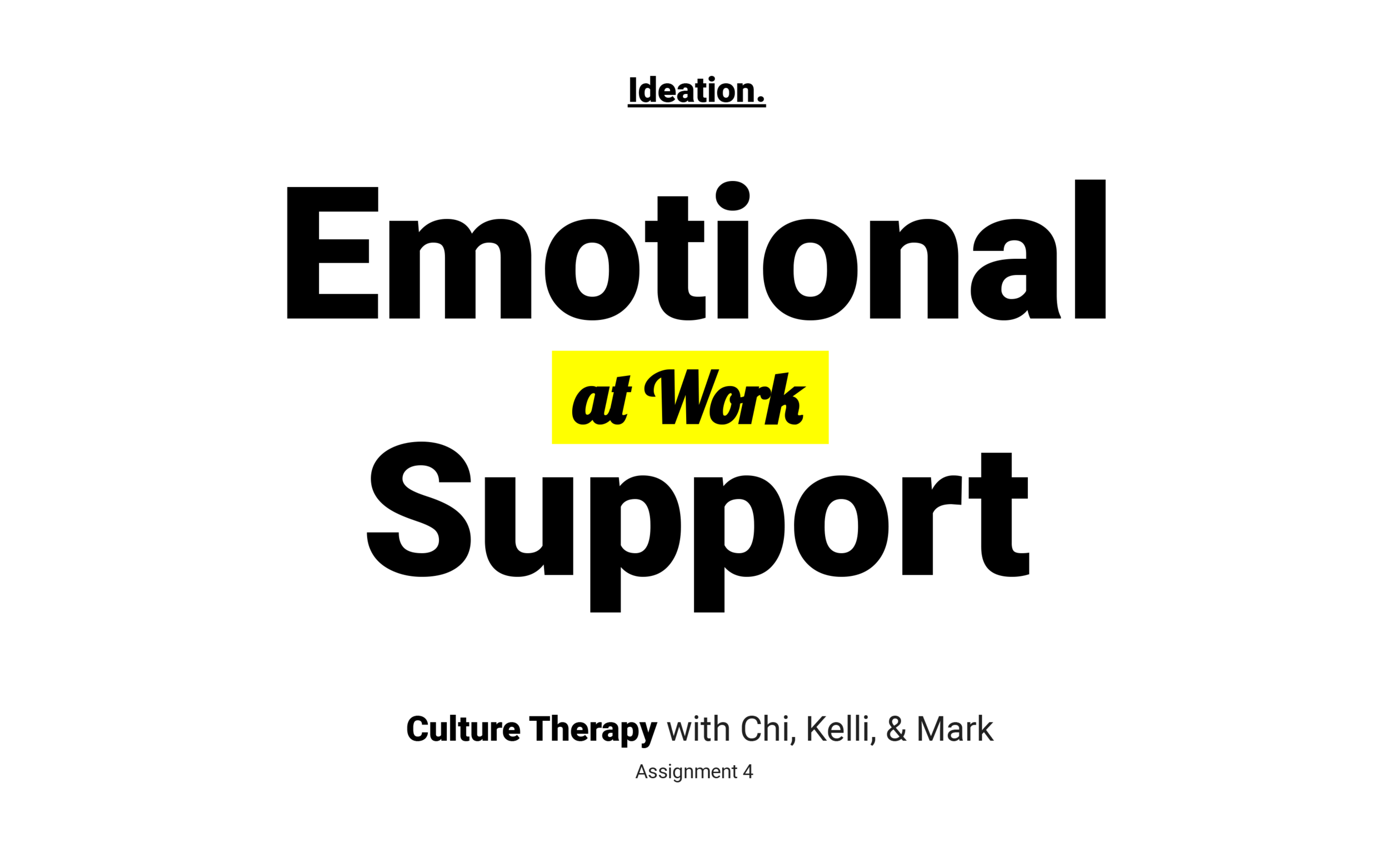
We are Culture Therapy with Chi, Kelli, and myself. Tonight we’d like to present three different solutions that address the theme of emotional support at work.
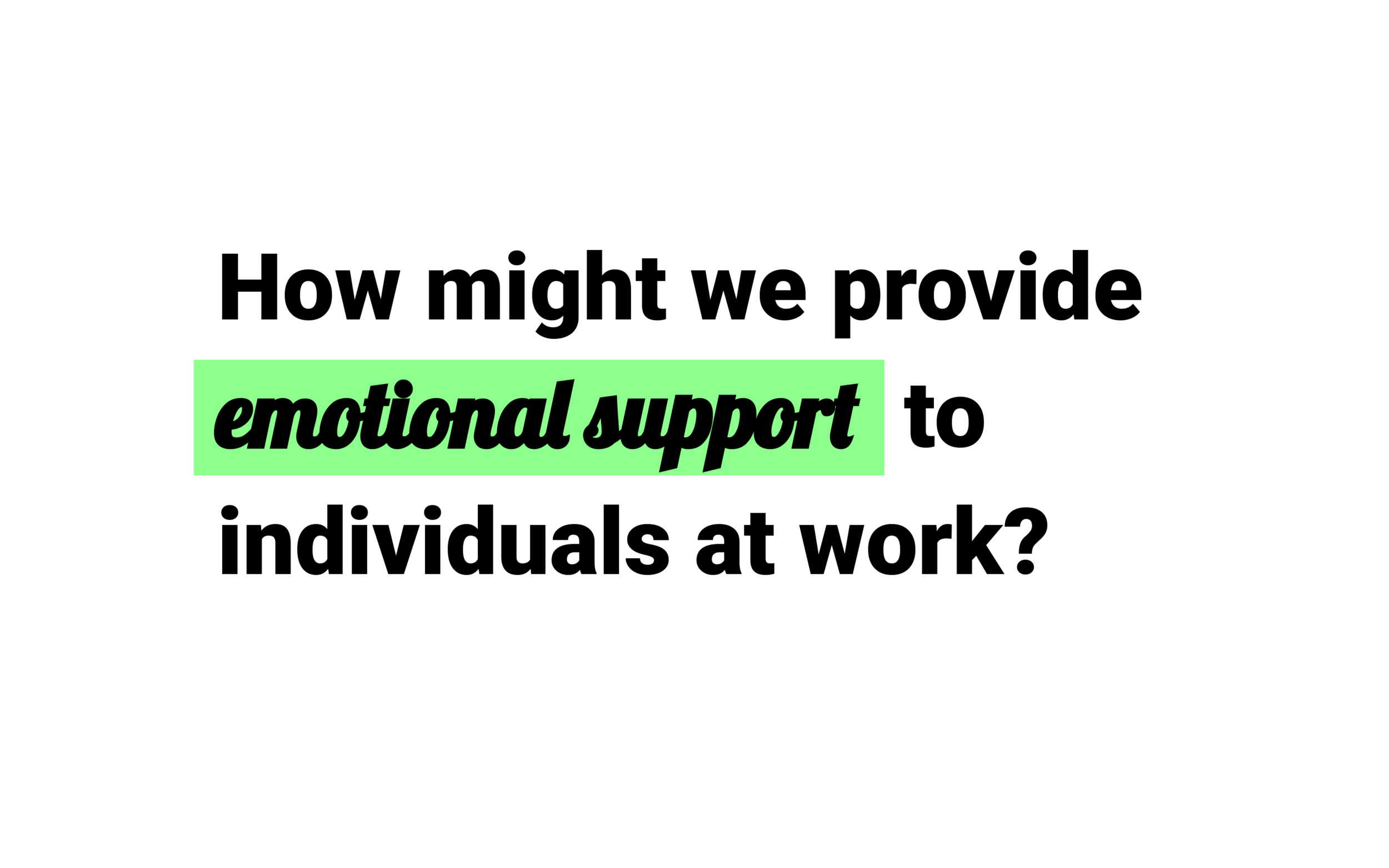
The workplace can be an emotionally charged environment, and often, those emotions tend to be negative. Our research this term always came back to this central idea: how can we provide emotional support to individuals at work? What kinds of tools, methods, or ideas can we introduce that help employees navigate and address those feelings?
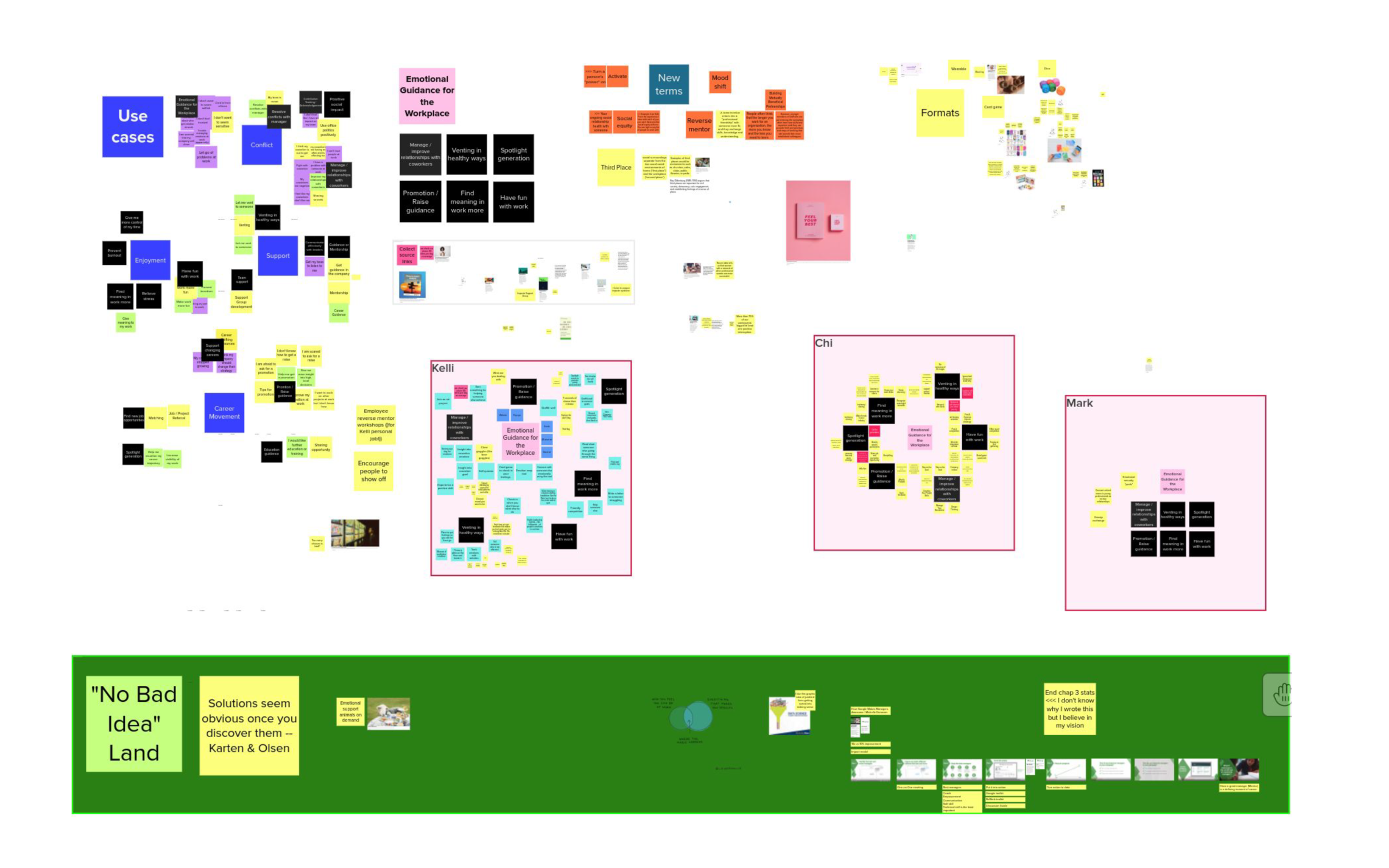
This is a bird’s eye view of our ideation canvas. We went through a number of generative exercises, and ultimately refined our brainstorming around 6 potential use cases:

The first was self promotion. How can I do a better job advocating for myself and my achievements?
Find meaning in your work. What kind of internal perspective shift might aid in this?
Getting guidance. Can we introduce additional support systems for employees?
Empathize. How do we improve the emotional intelligence of the workplace?
Recover. What relief might we be able to provide to workers?
And finally vent. Are there healthy channels we can provide employees to vent about their frustrations?
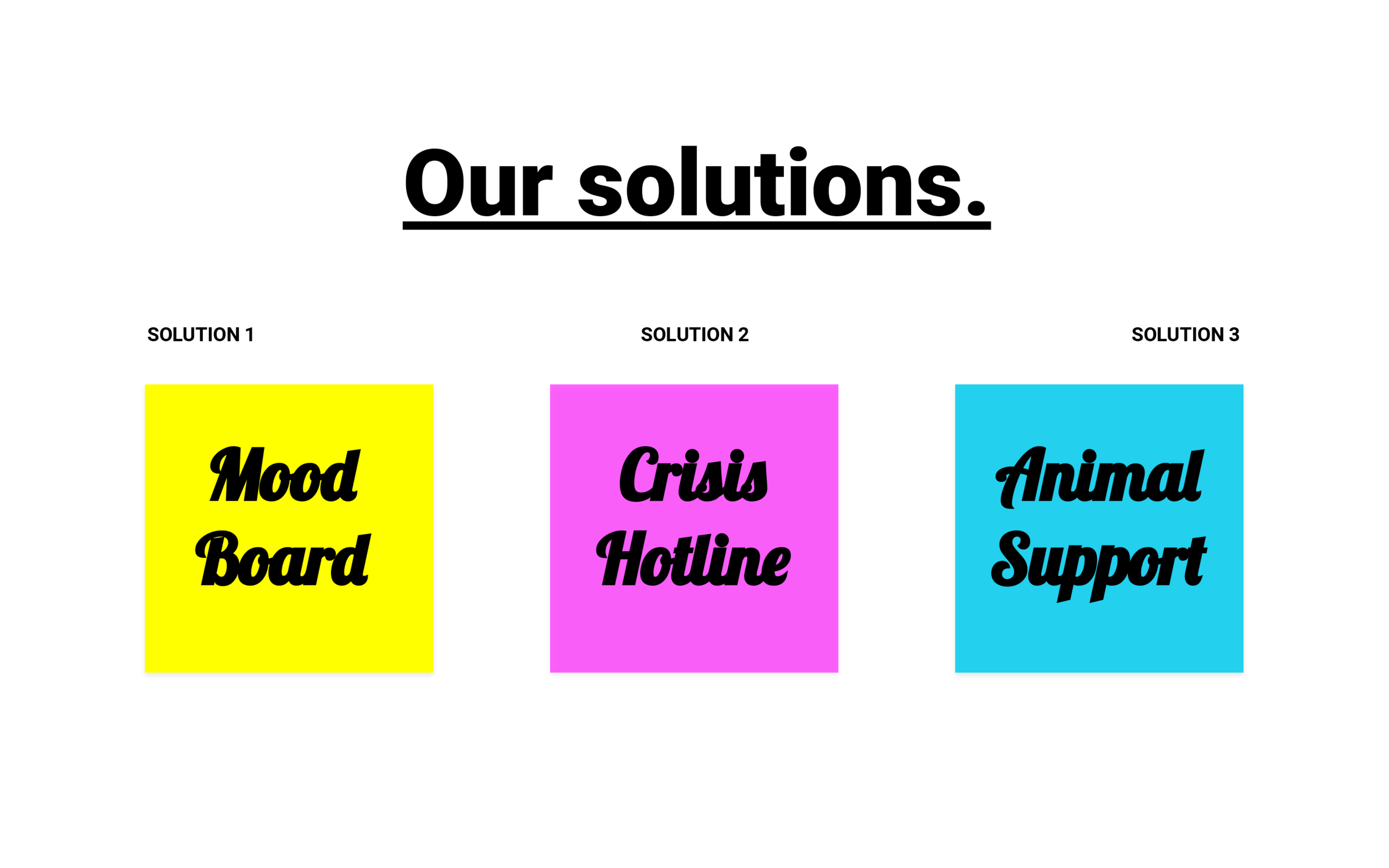
From those use cases, we generated three distinct solutions that each address emotional support in the workplace in a different way.
First, we have the Mood Board: a reactive, physical object (with digital UX) that displays real-time mood data from employees in an abstract, anonymous format.
Next, we have the Crisis Hotline: a digital platform that allows users to quickly match and chat with qualified counselors who can talk you through difficult work scenarios, or just be an ear to let you vent.
Third, we have Animal Support: a B2B service that partners with workplaces to host animal pet-and-play sessions designed to reduce stress and elevate employee mood.
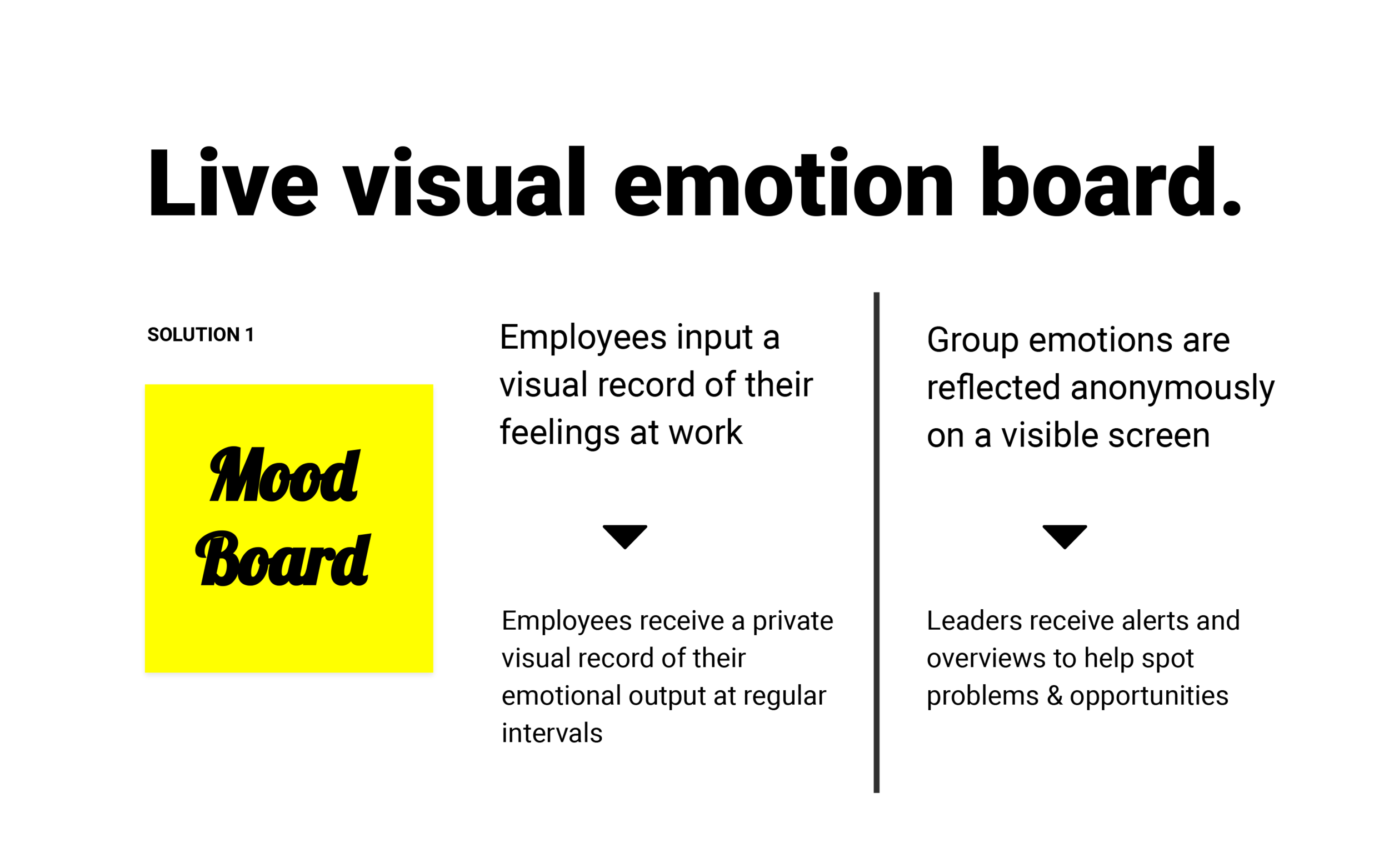
Let’s dig a bit deeper into each of these ideas: Emotion Board -- Mood Board.
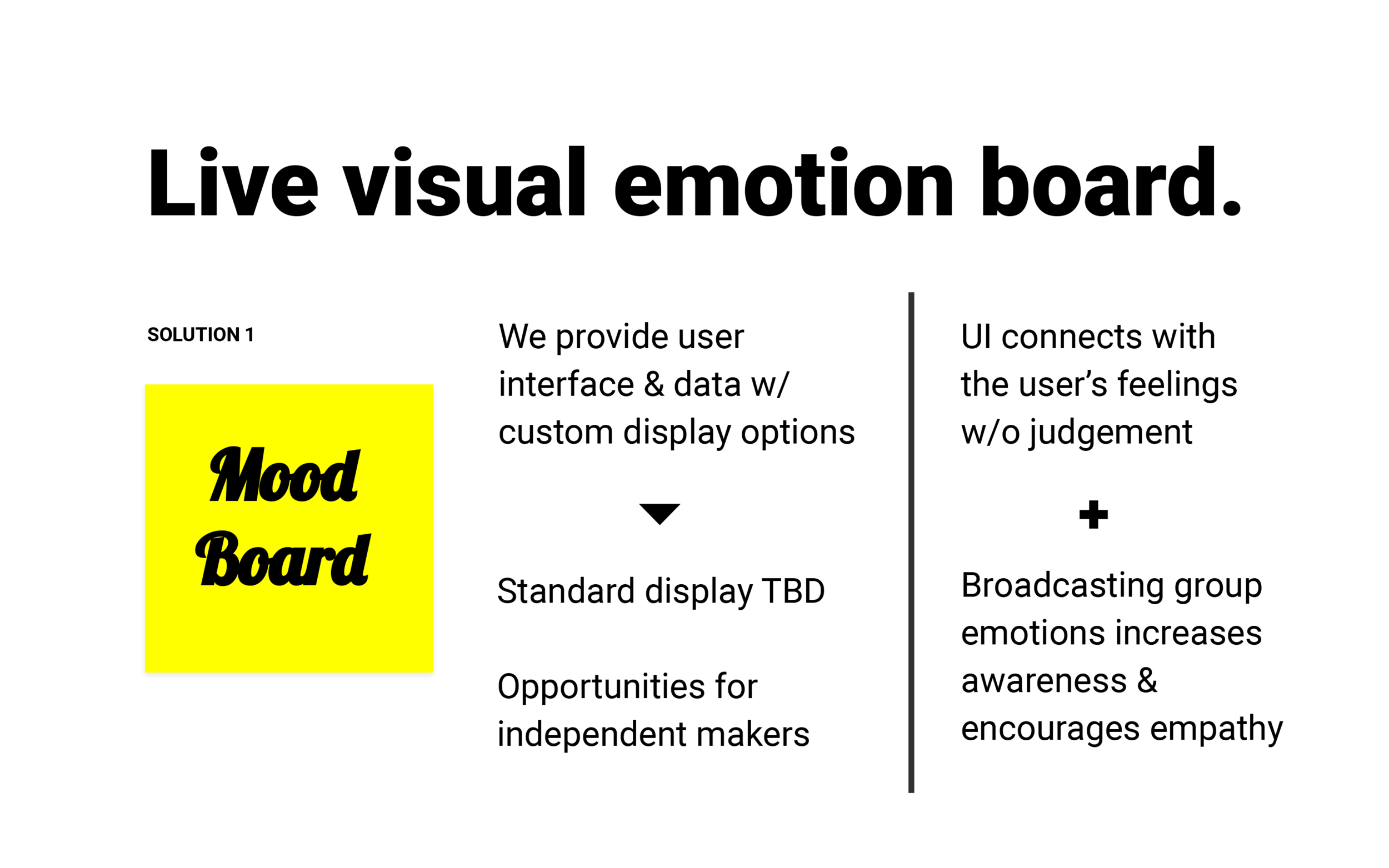
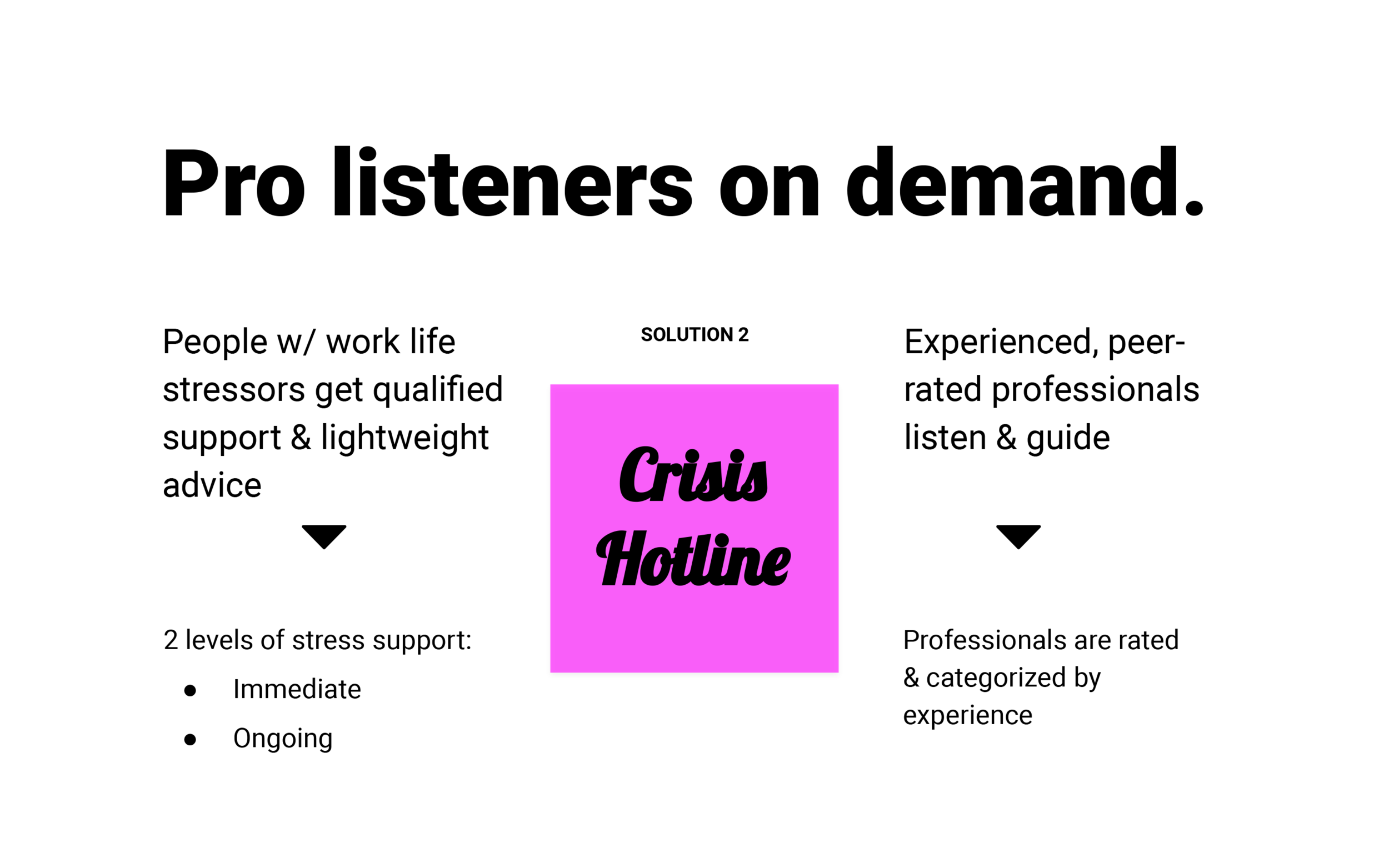
Peer to peer “hotline” - CHI
Short Term “Immediate” support -- Hotline. Peer to Peer. Certification of level of skill. Retired executives?
https://en.wikipedia.org/wiki/Crisis_hotline
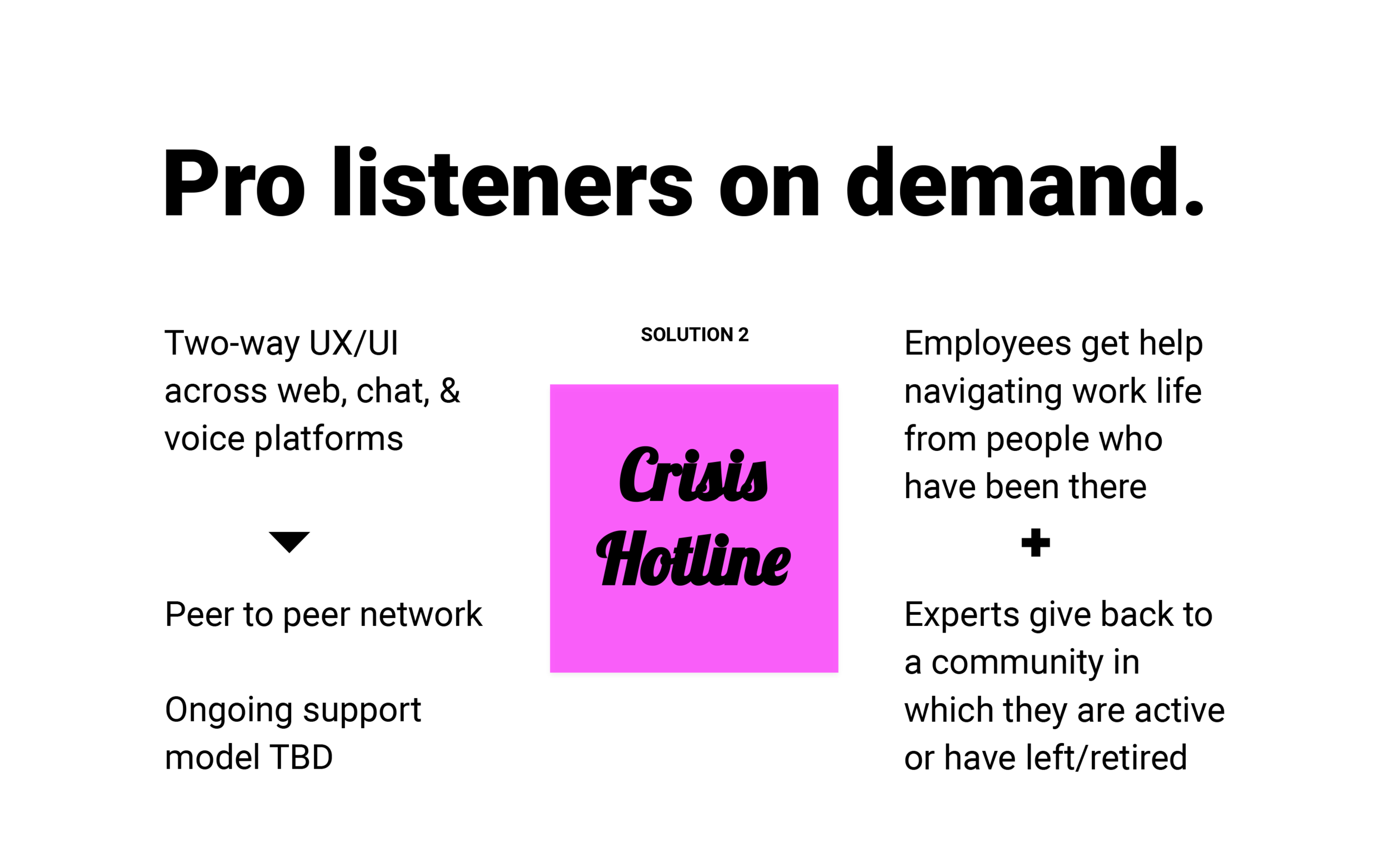
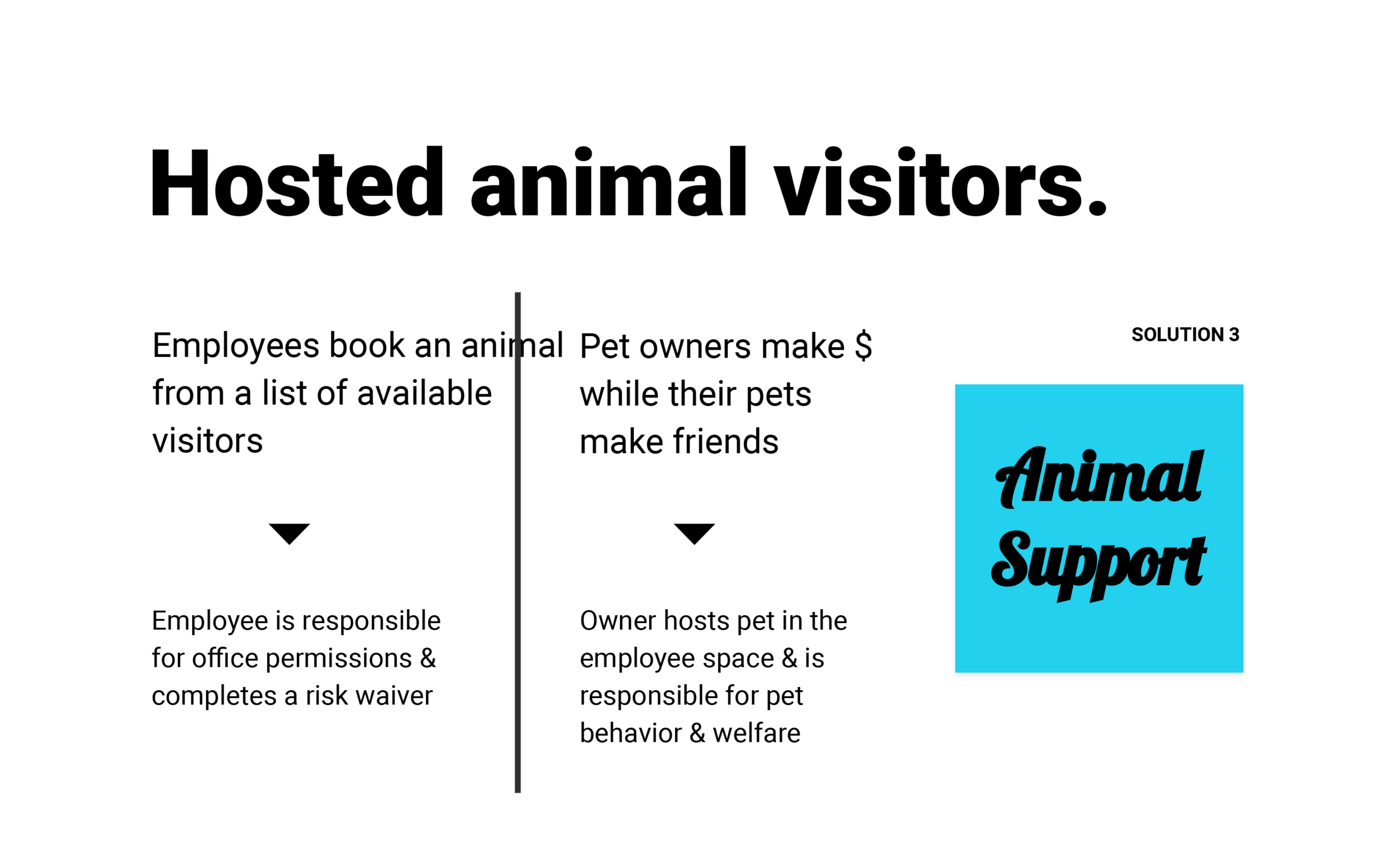
Emotional support dog network -- connect people with pets to offices that want animals. The people make money. The office gets a dog. Animals reduce stress.
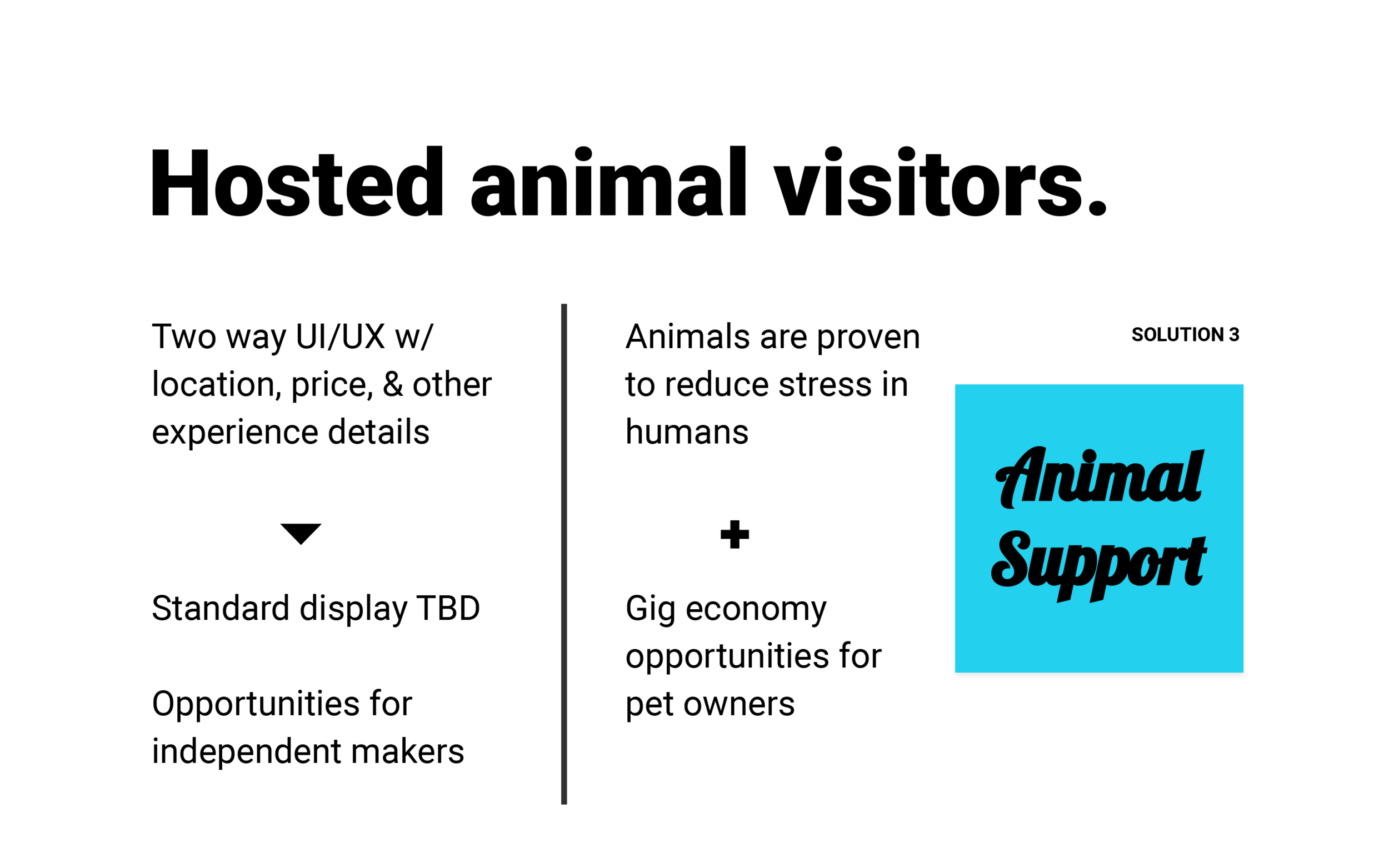
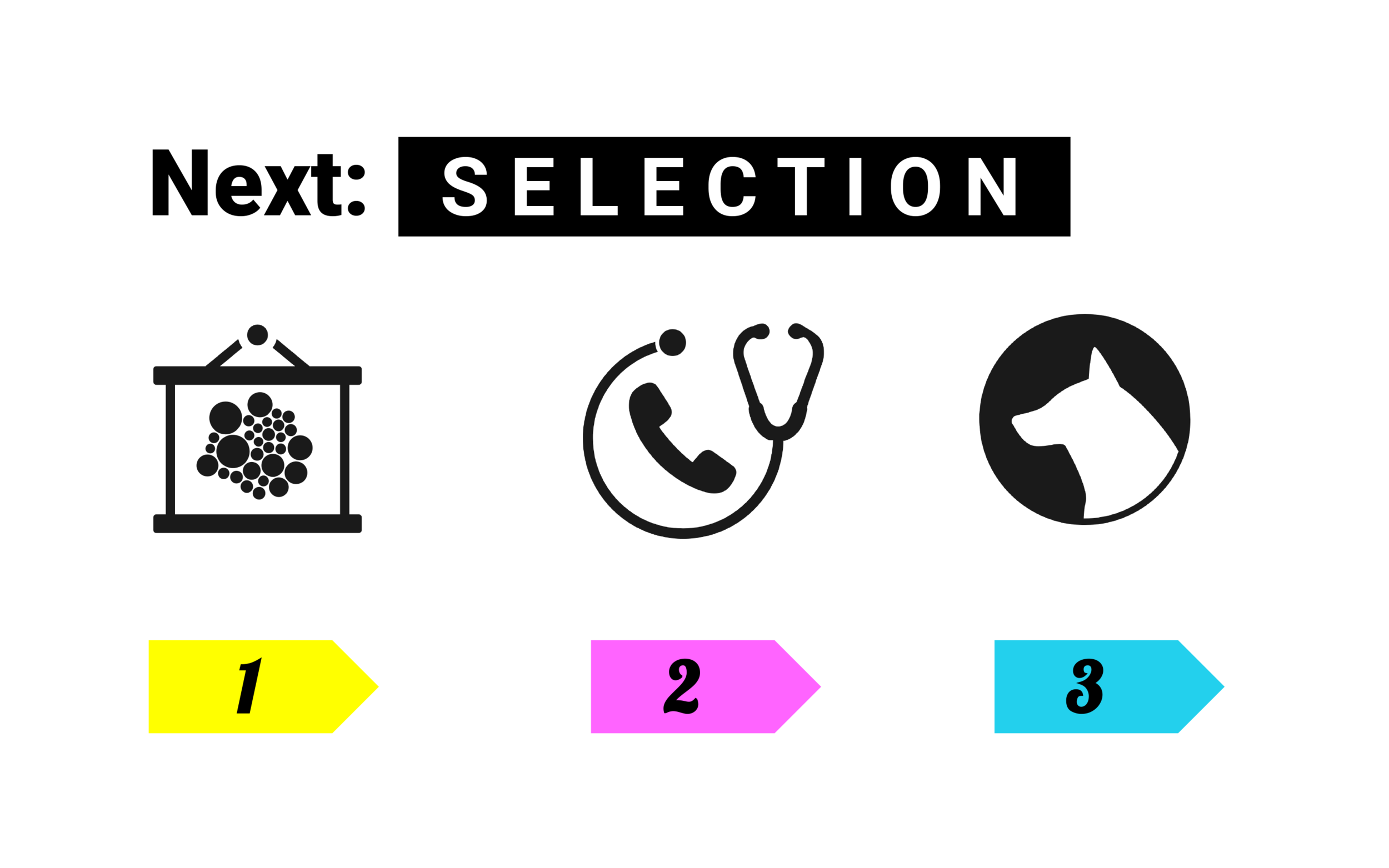
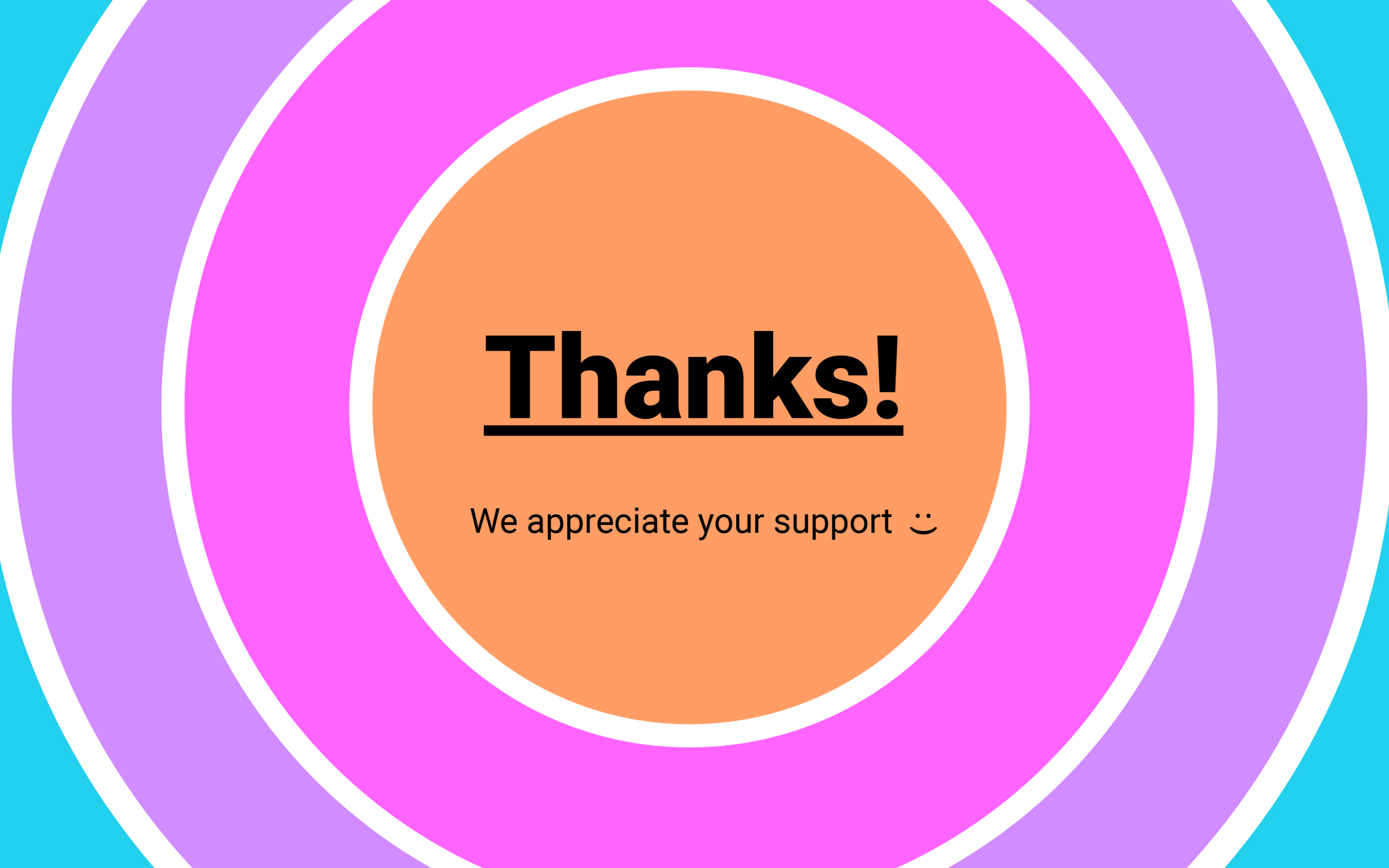













The ideation stage brought us to a point of pivot after we discovered people were secretly crying at work.
Created in Google Slides with the Noun Project, ideation in Mural

Selection
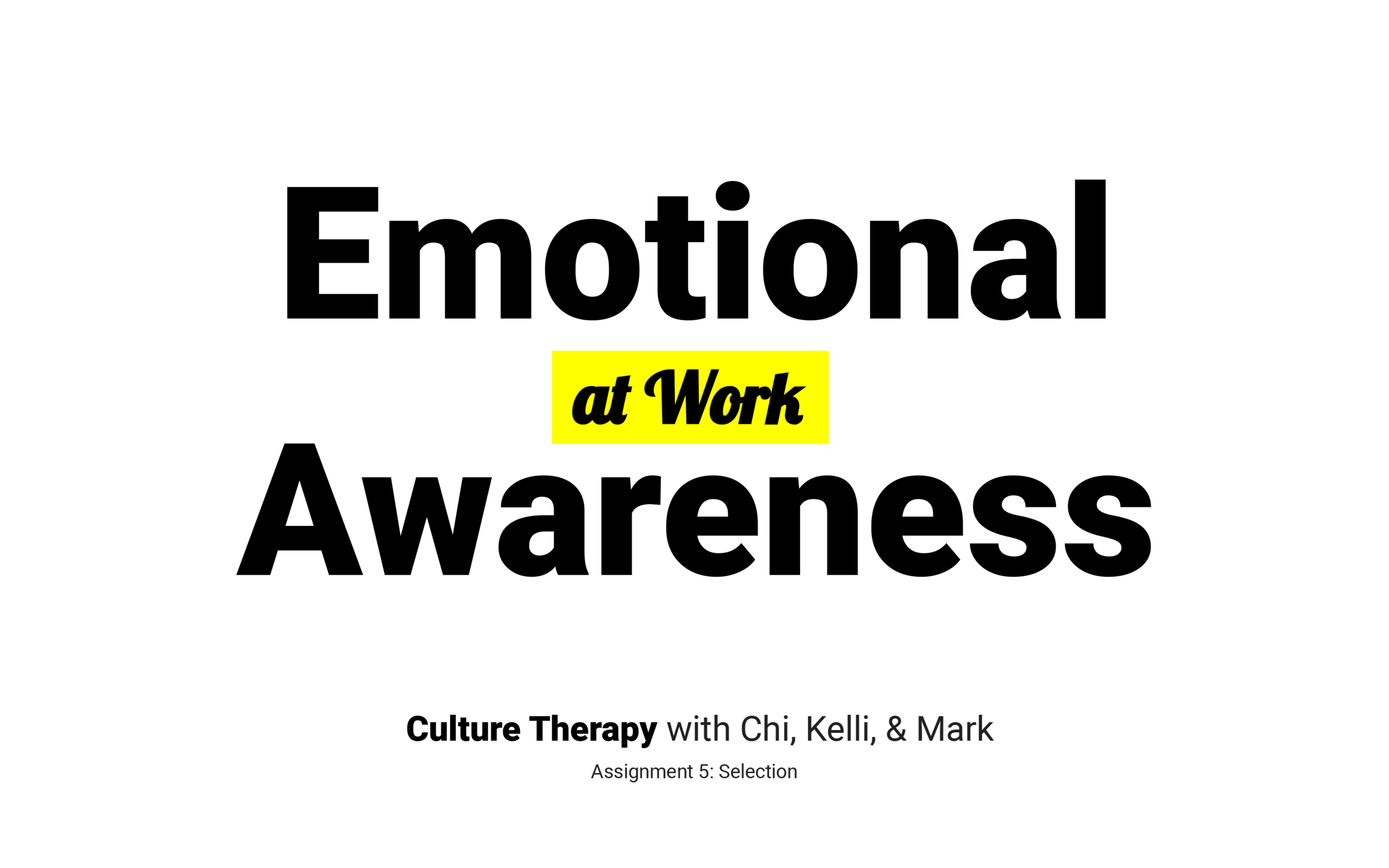
Hello, we are Culture Therapy, and tonight we’ll be presenting our idea selection for the rest of the term.
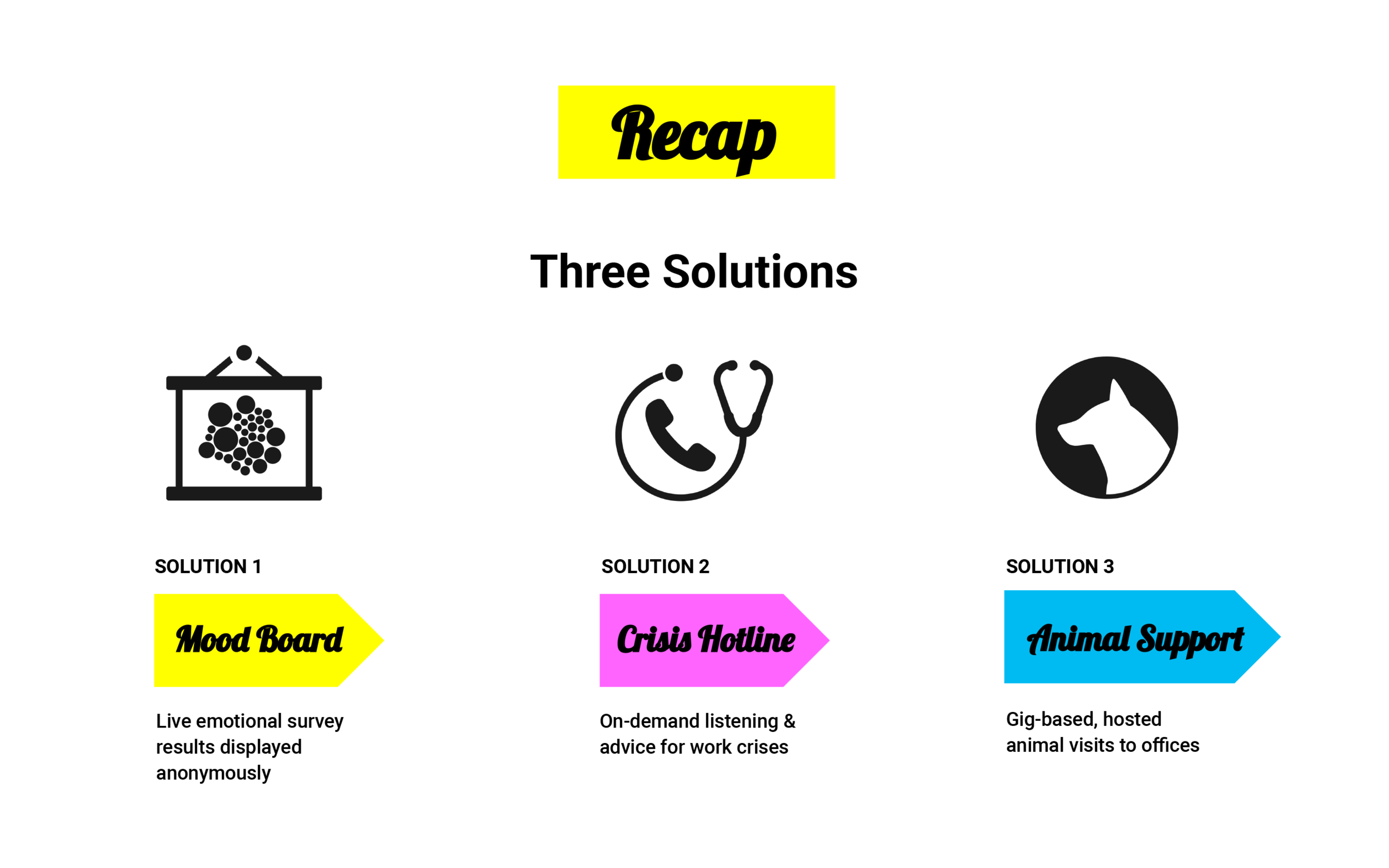
To recap from last week, we shared three potential solutions that we thought would address the problem of emotional support in the workplace.
We talked about a real-time, anonymous mood board
a crisis hotline for difficult work scenarios
And a gig-based animal support service for businesses

To reach those three solutions, we had originally focused on providing emotional support to individuals in the workplace.
But after regrouping and considering the feedback from last week, we realized that the problem we really wanted to solve for was actually upstream from this.
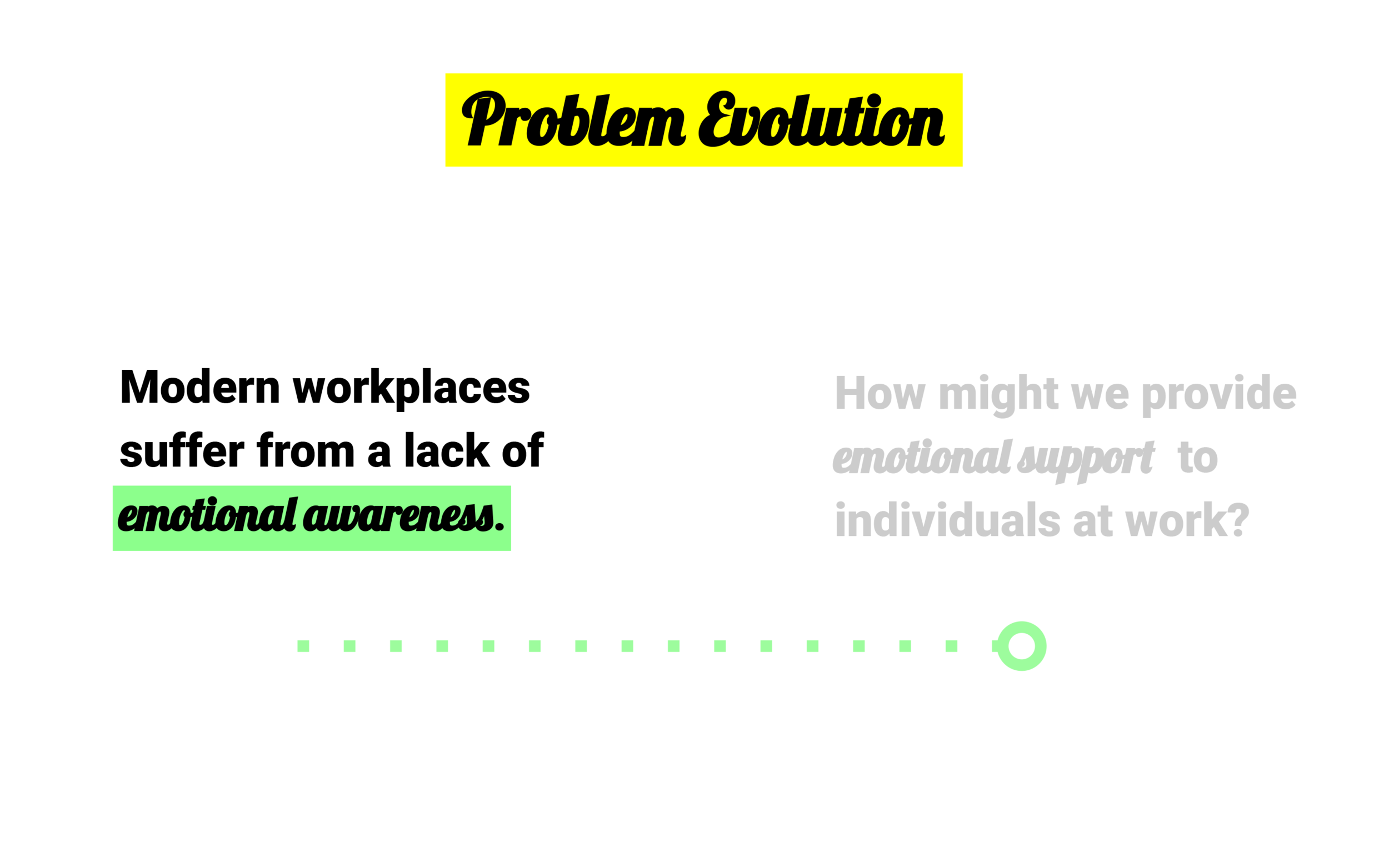
Rather than concentrating on how to deliver support, we felt that we were better poised to solve the problem of creating emotional awareness in the workplace.
Awareness is the key to proper support, and from our research we know that it is lacking in modern offices.
So how can we create this awareness?
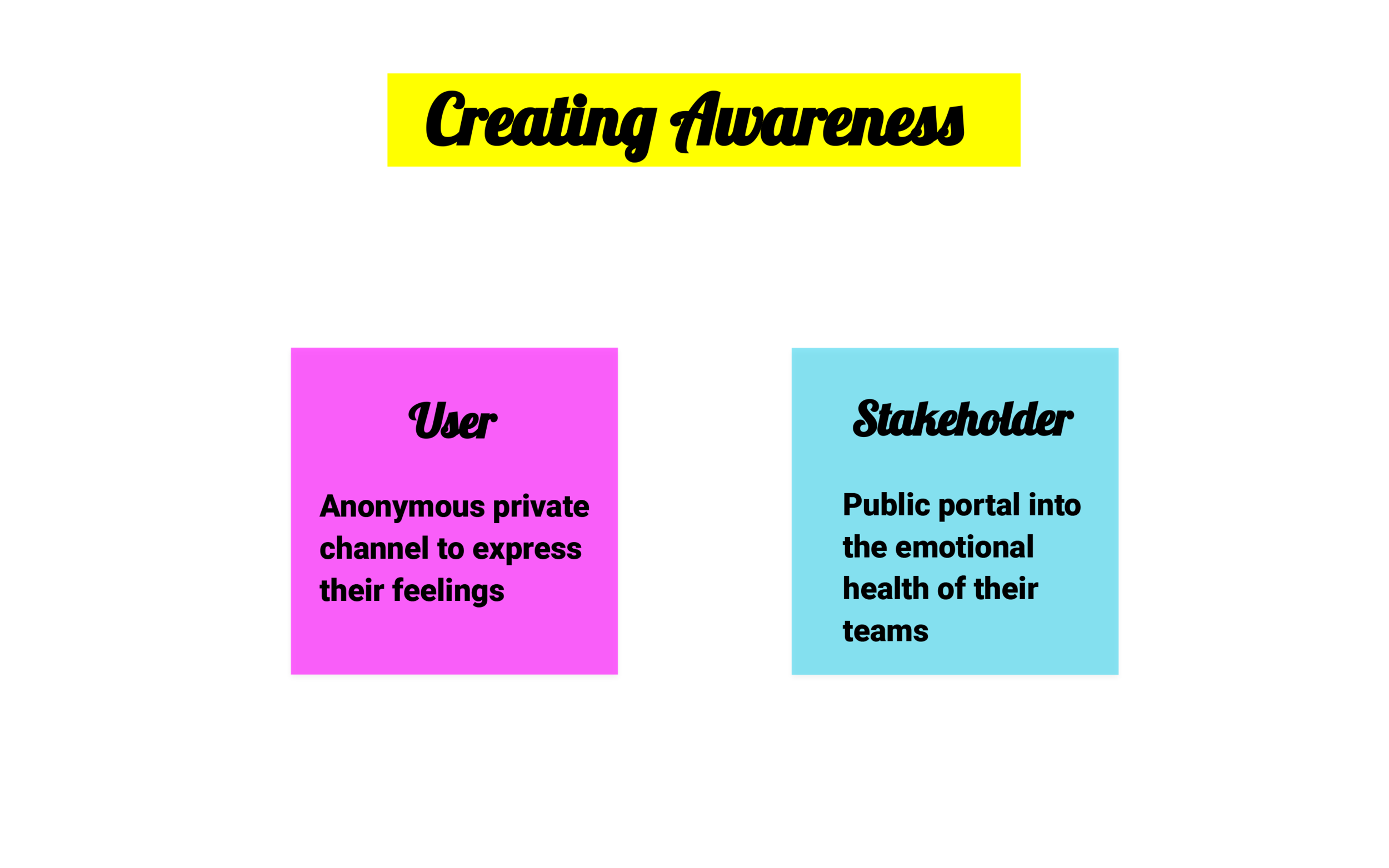
For the individual user, we give them access to an anonymous, private channel to express feelings and thoughts related to their job
And for the stakeholders (i.e. managers, team mates, and coworkers), we provide a public portal into the emotional health of the team
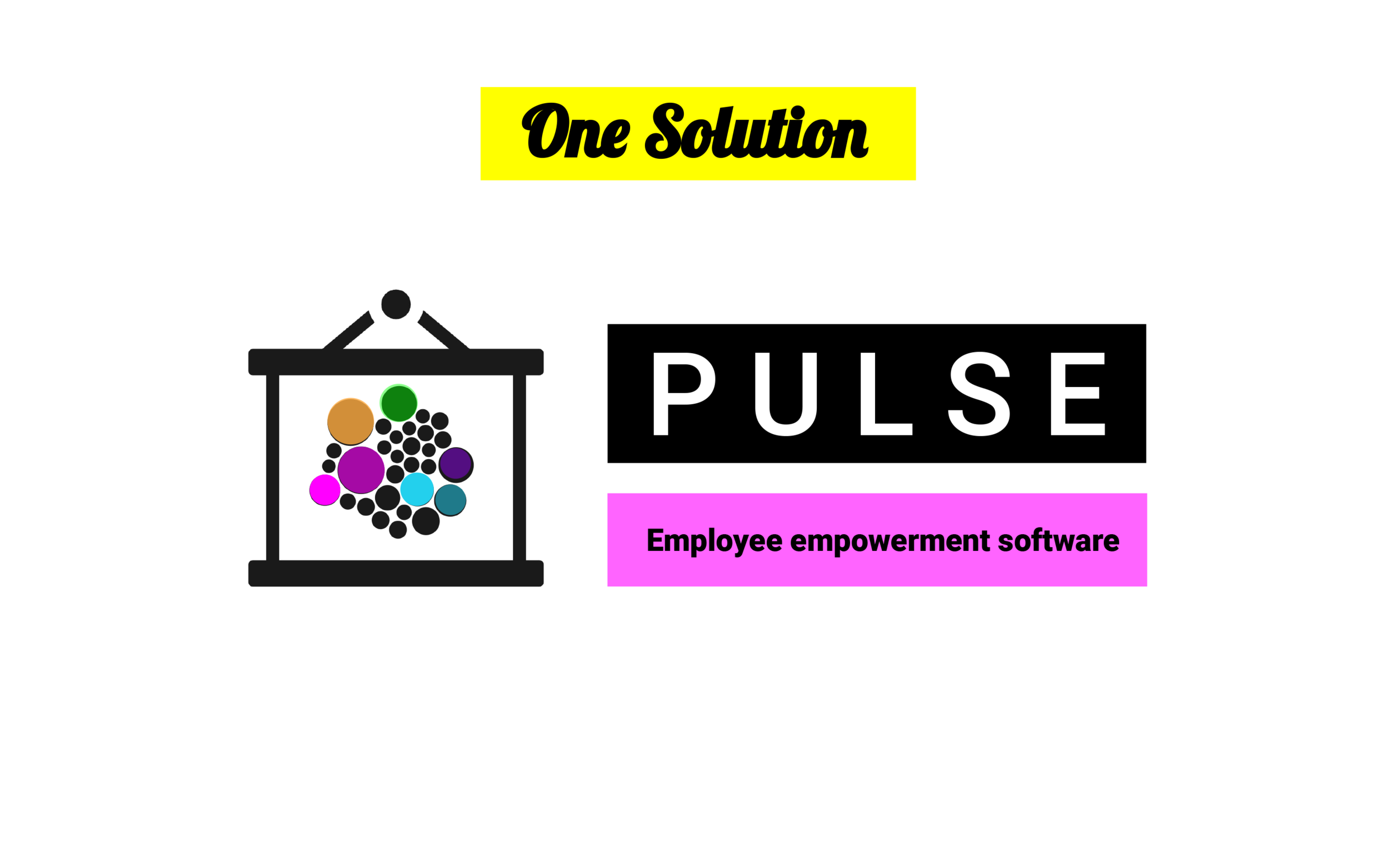
We’re calling our solution Pulse, the employee empowerment software.
Our platform provides users a direct and secure channel to express sensitive feelings related to their job, thereby broadcasting to stakeholders the real-time “Pulse” of the team or organization.
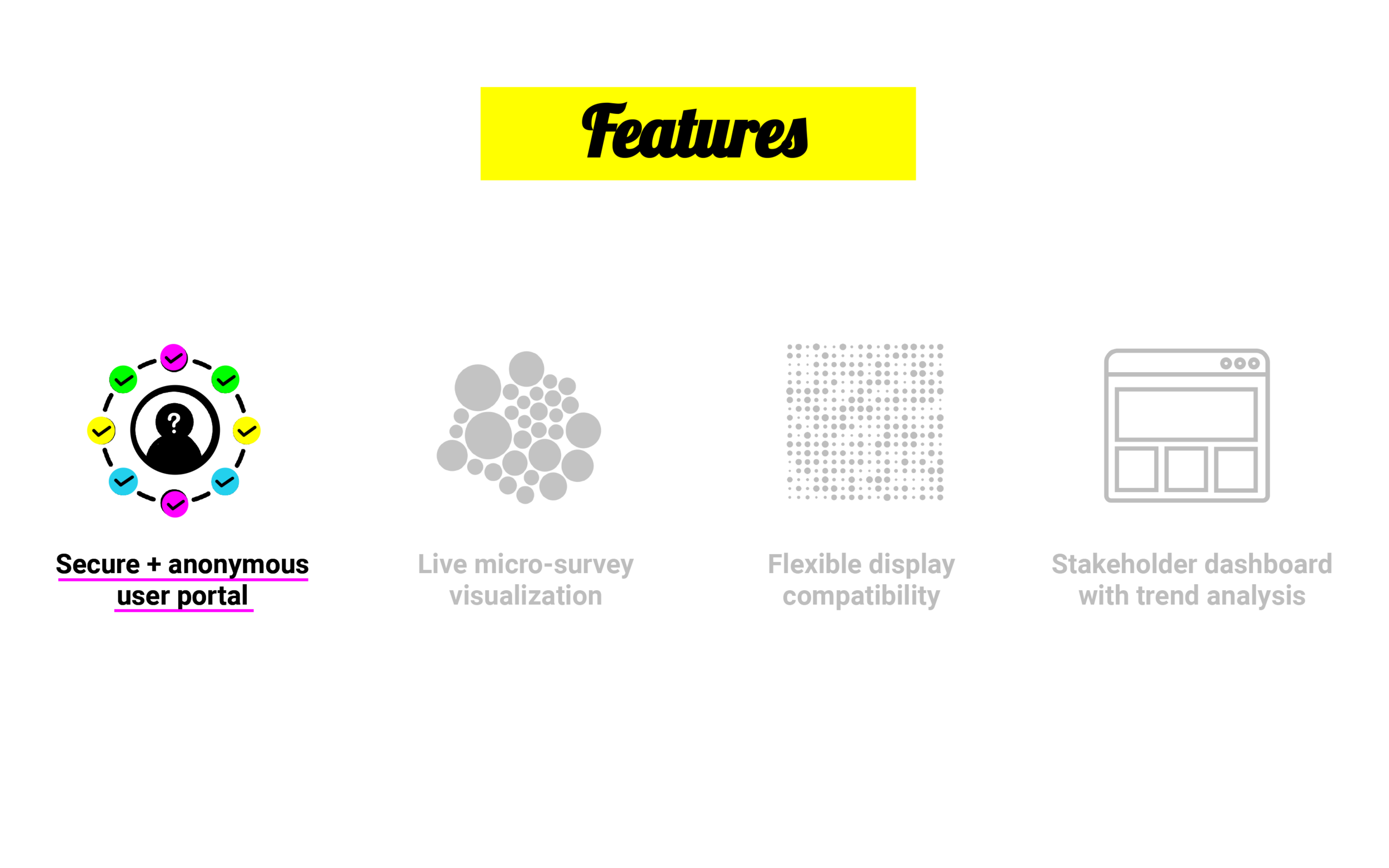
Pulse puts the privacy of its users at the forefront, by providing a secure and anonymous input portal
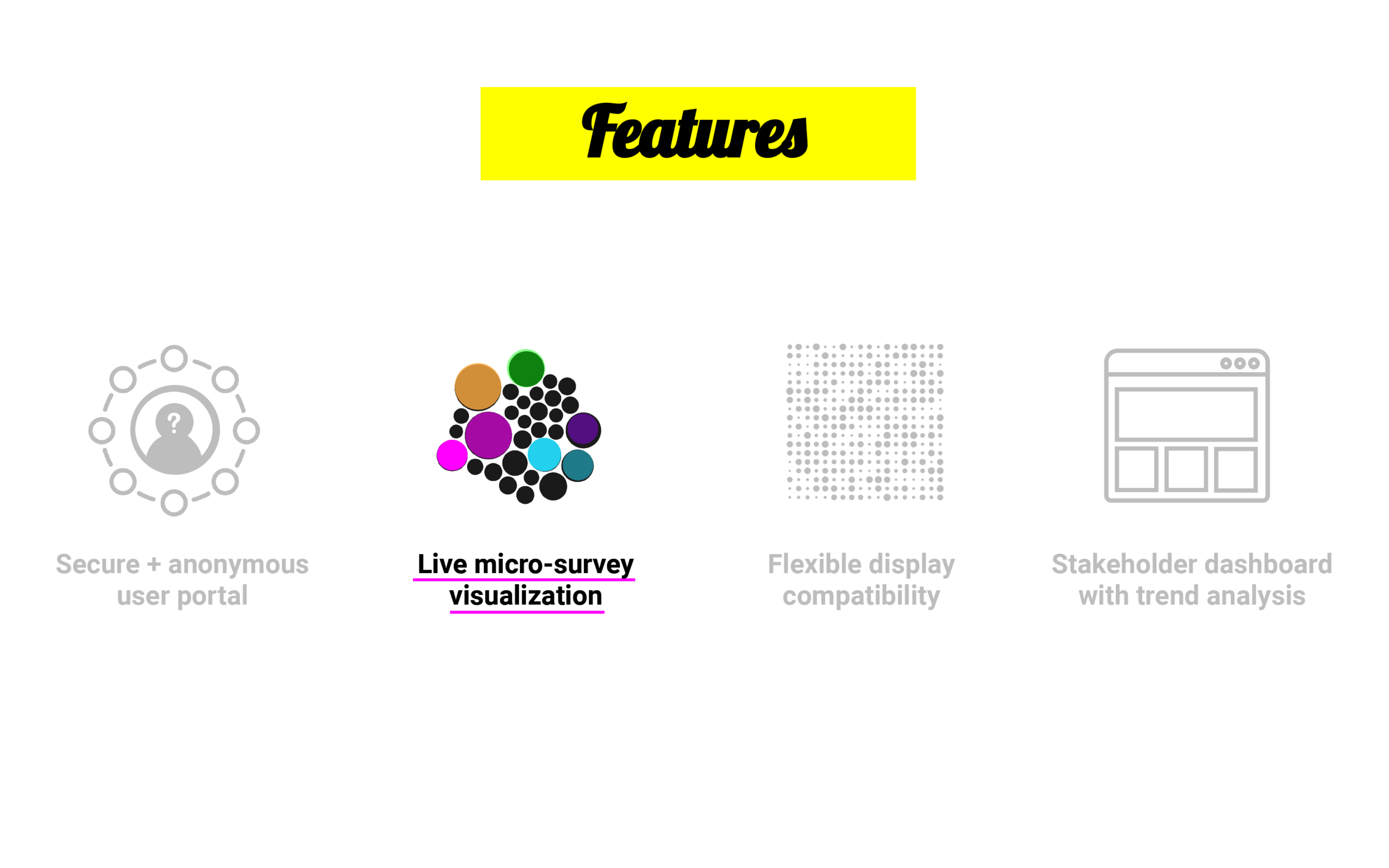
With real-time micro survey visualizations, teams can always have a handle on group sentiment
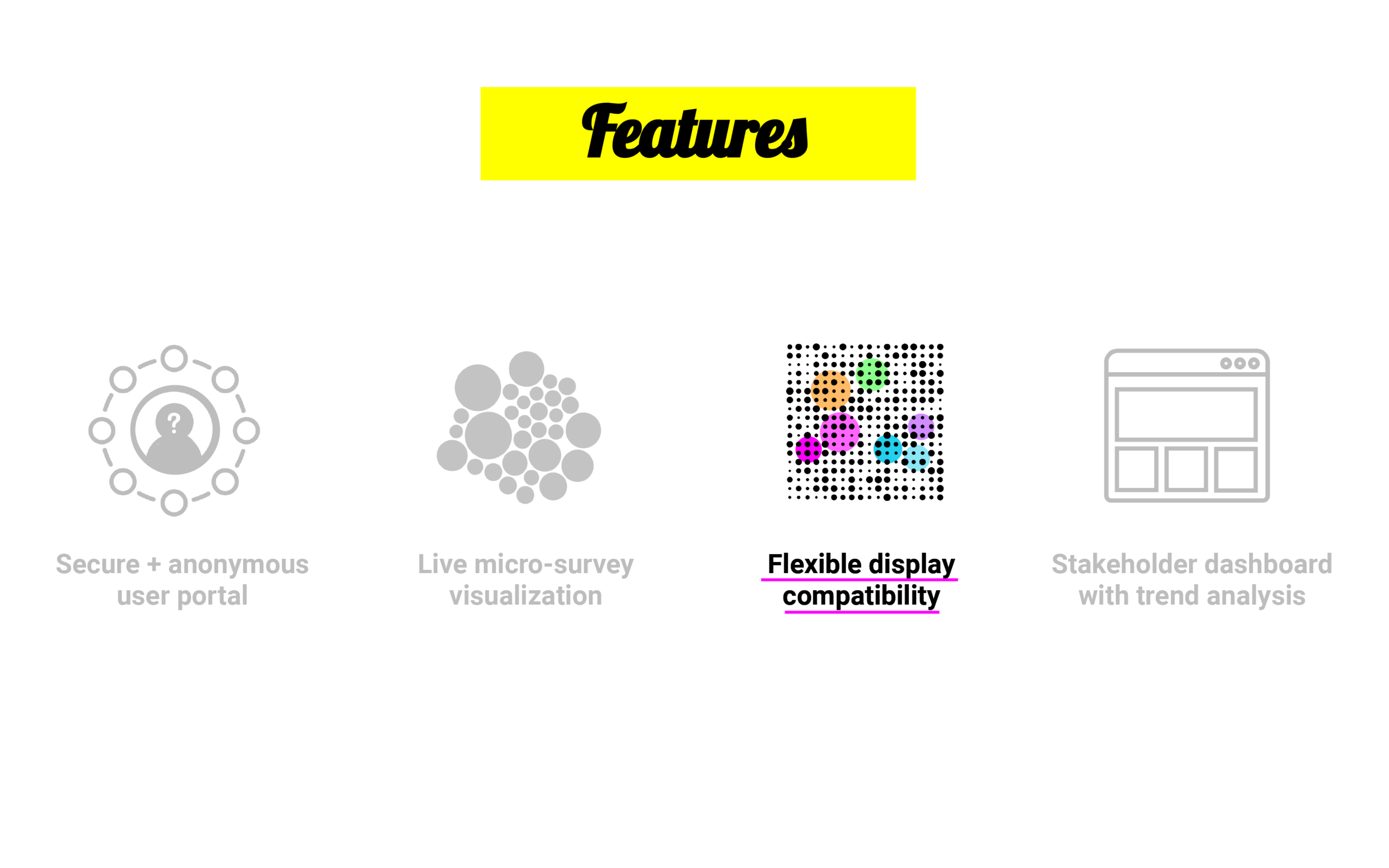
The Visualizations can be customized to fit a wide range of available displays within the workplace, including ipads and tablets, TVs, and even custom display solutions.
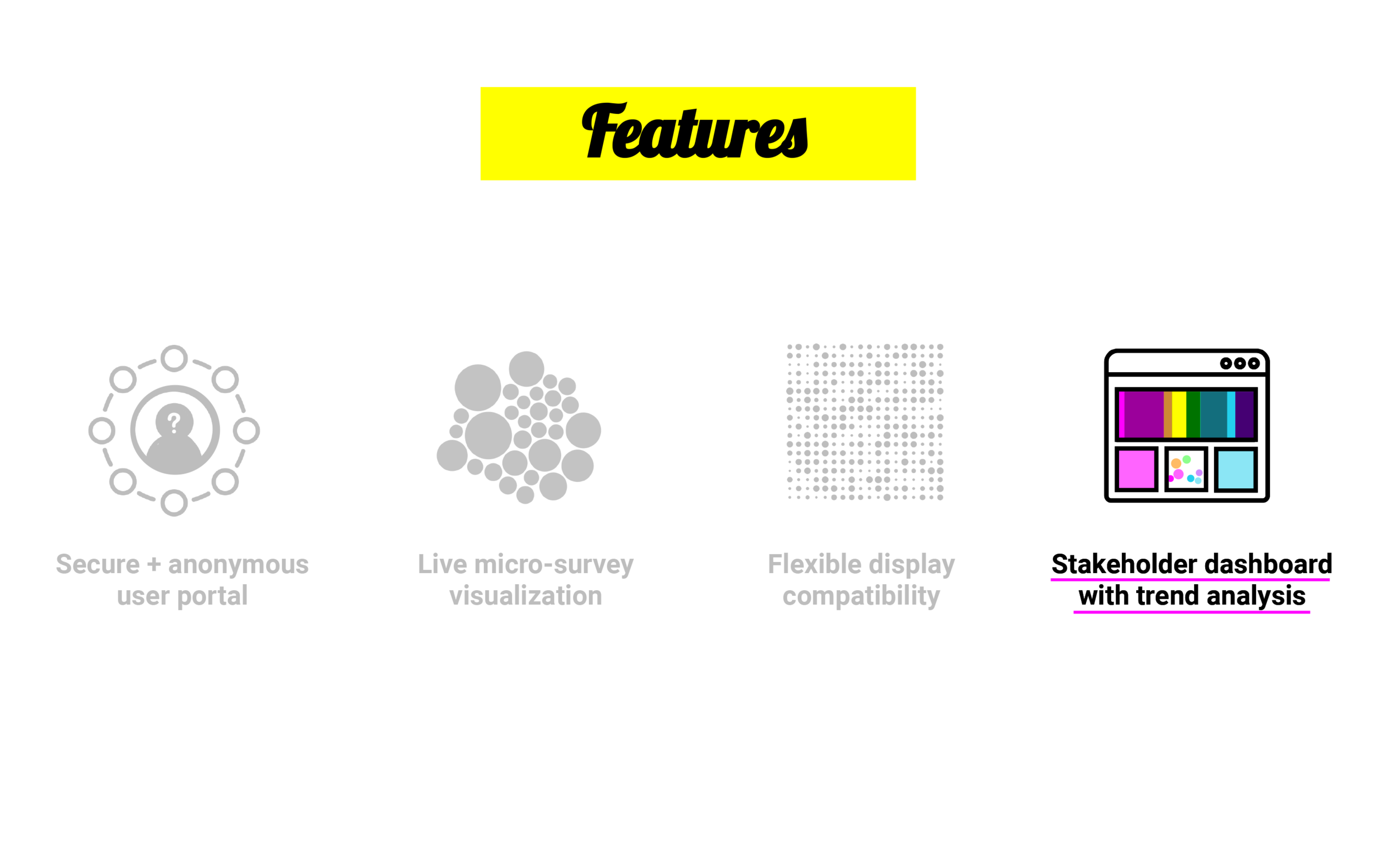
And for the stakeholders, all parties have access to the team’s digital dashboard, which shows active visualizations as well as longitudinal trend analysis.
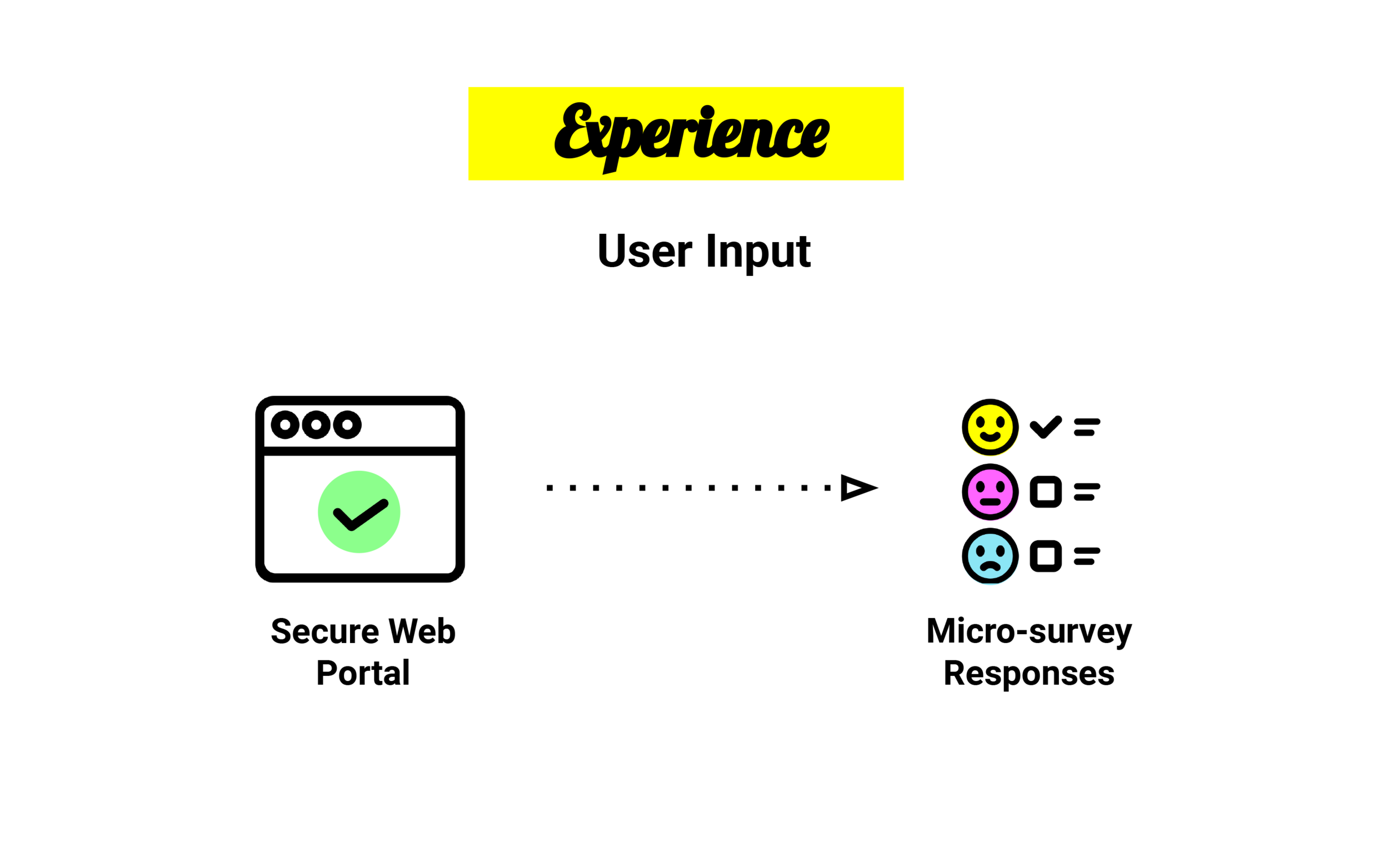
For the user, the experience is quick and simple:
Within the secure web portal, users can be prompted with a variety of micro-survey questions. These can be set automatically, selected from popular templates, or the questions can be fully curated by admins. The responses to active questions are then sent and visualized in real-time on a central display within the workplace.
Users can also access a historical view of their own responses to help visualize their personal sentiment journey.
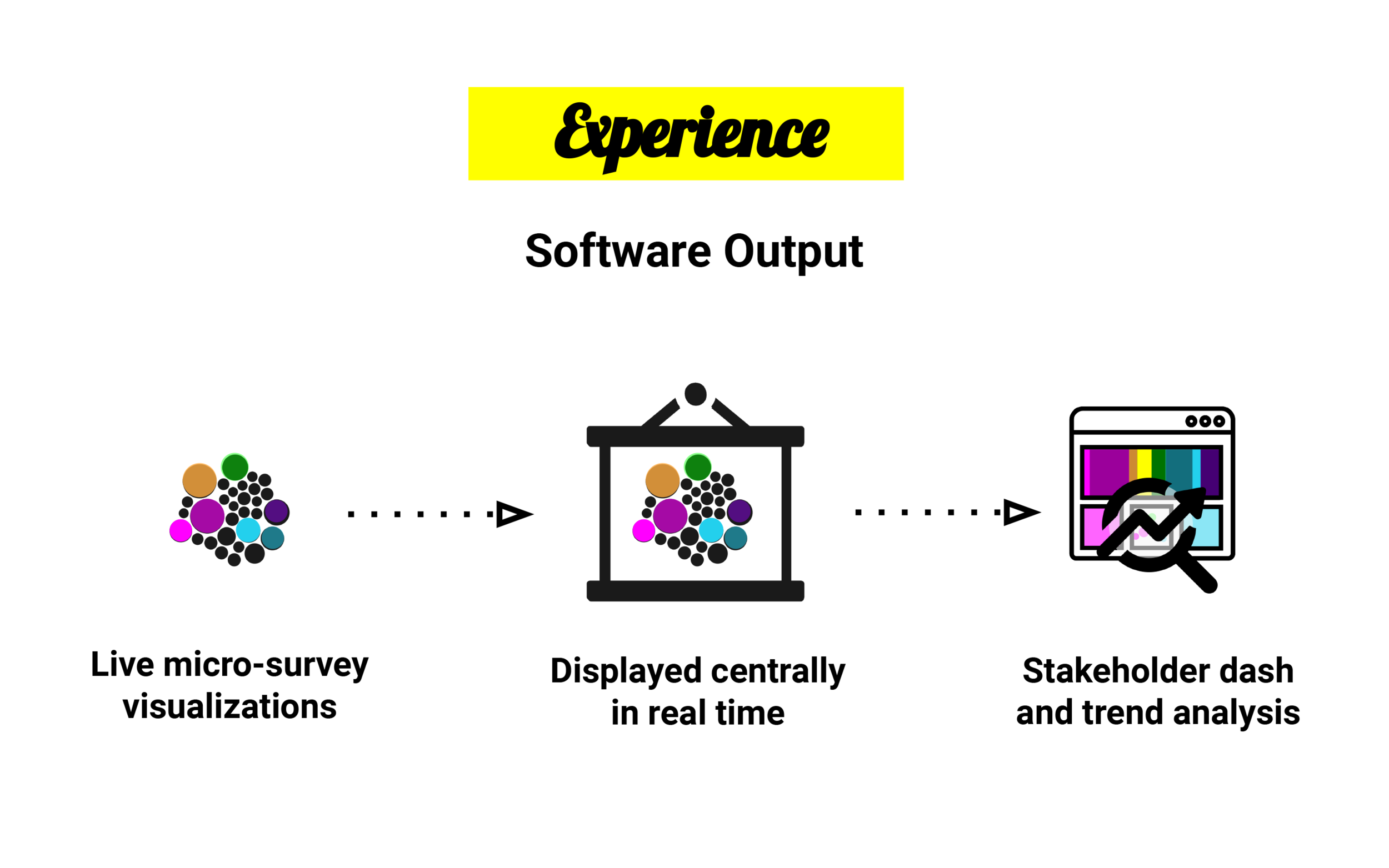
As for the output, those question responses are aggregated, analyzed, and then visualized in a multitude of different formats depending on the preferences of the team.
There can be ongoing visualizations that always appear, or the display can rotate through “active questions” over a given period of time.
In addition to the physical display, all stakeholders will have access to a dashboard that allows for additional exploration of trends and highlights key takeaways.
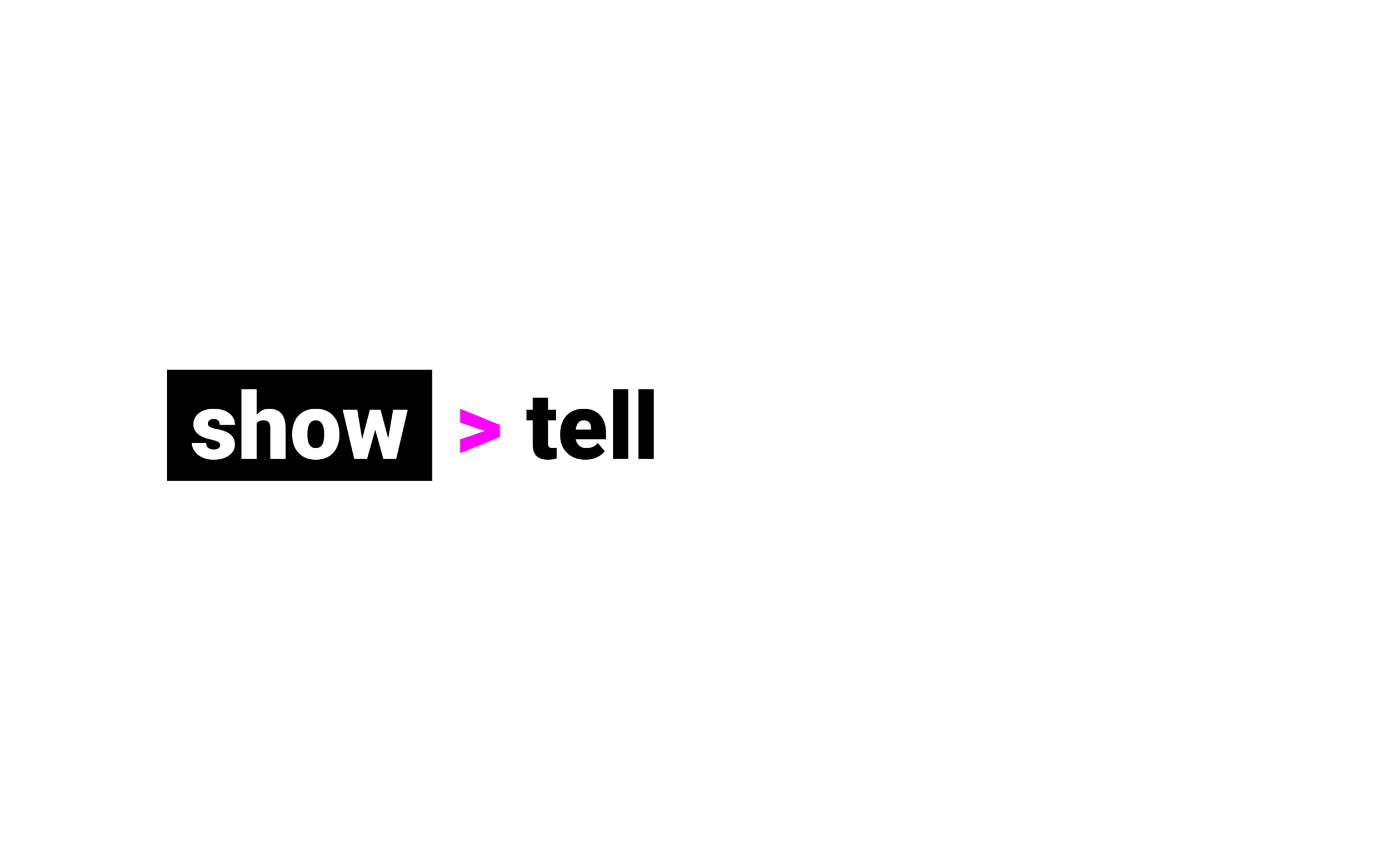
If you’ve ever taken a fiction writing course, one of the main concepts expressed is showing vs. telling.
When you create a picture for the reader, or in our case the stakeholder, you entrust them to impart their own understanding of the situation. By showing, instead of telling, we foster the kind of awareness that naturally prompts action.

With Pulse, we are empowering employees to share sentiments with privacy
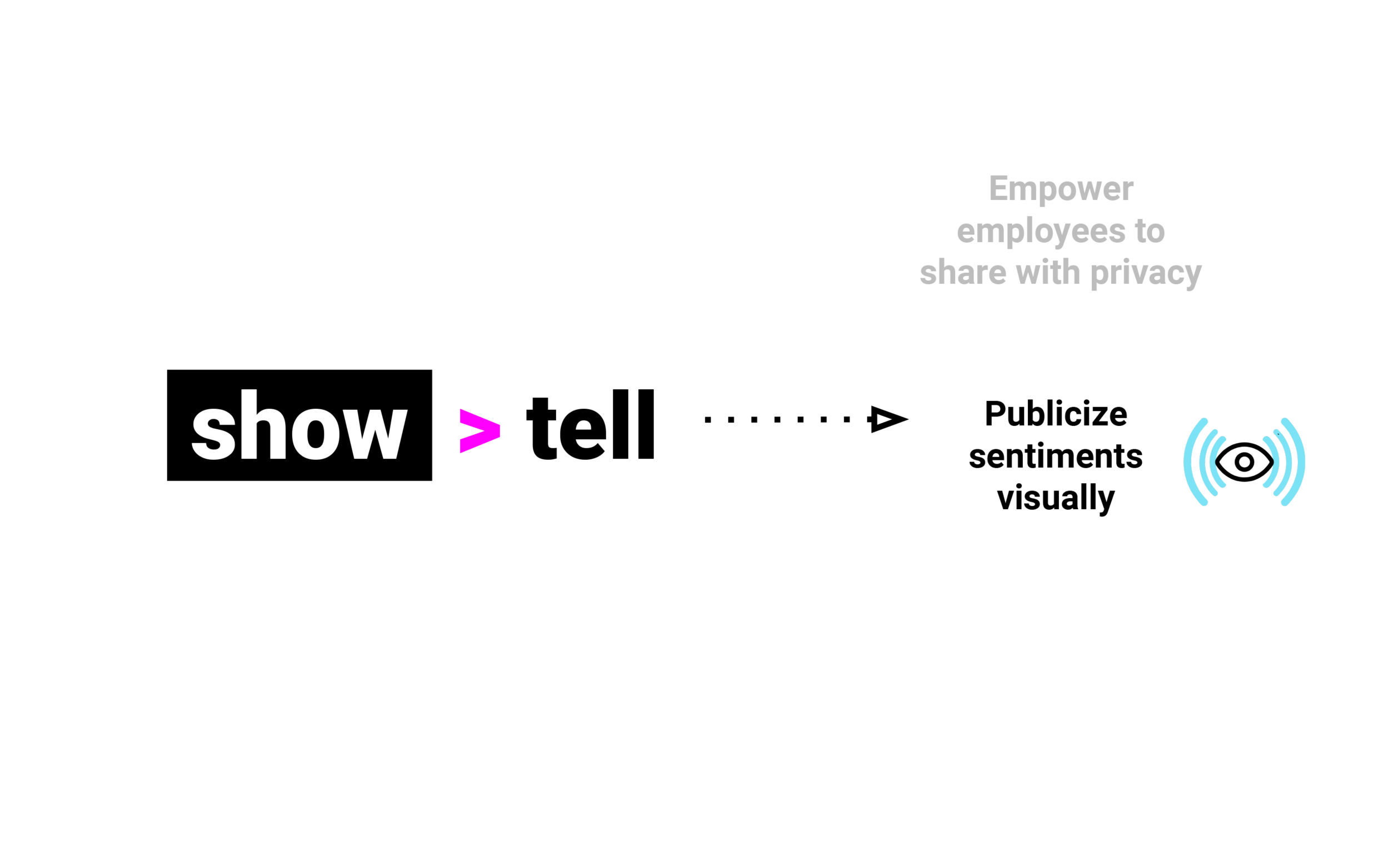
We’re ensuring that those sentiments are visualized publicly
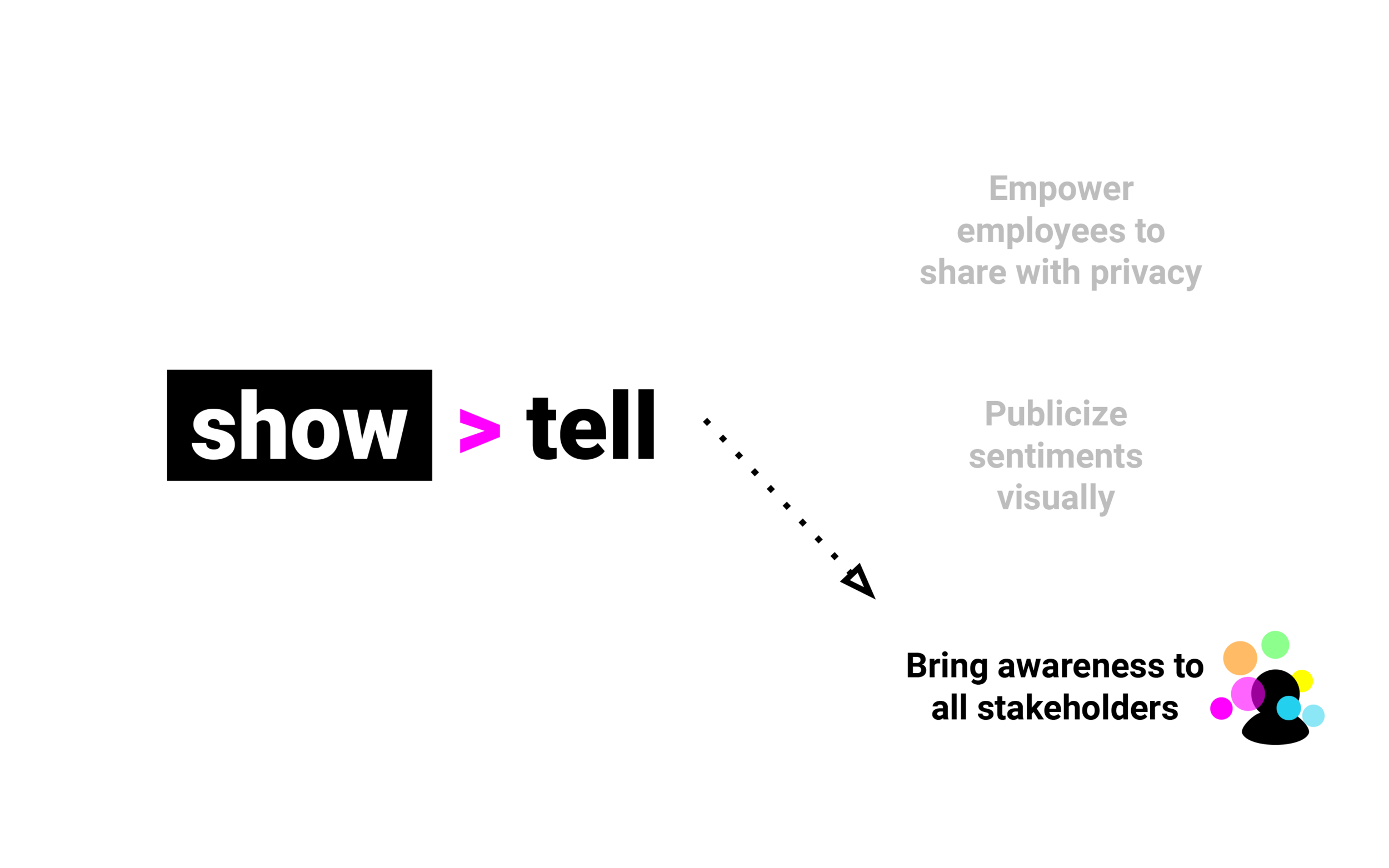
Which in return, brings awareness to all stakeholders, so that they are able to intelligently act on the situation.
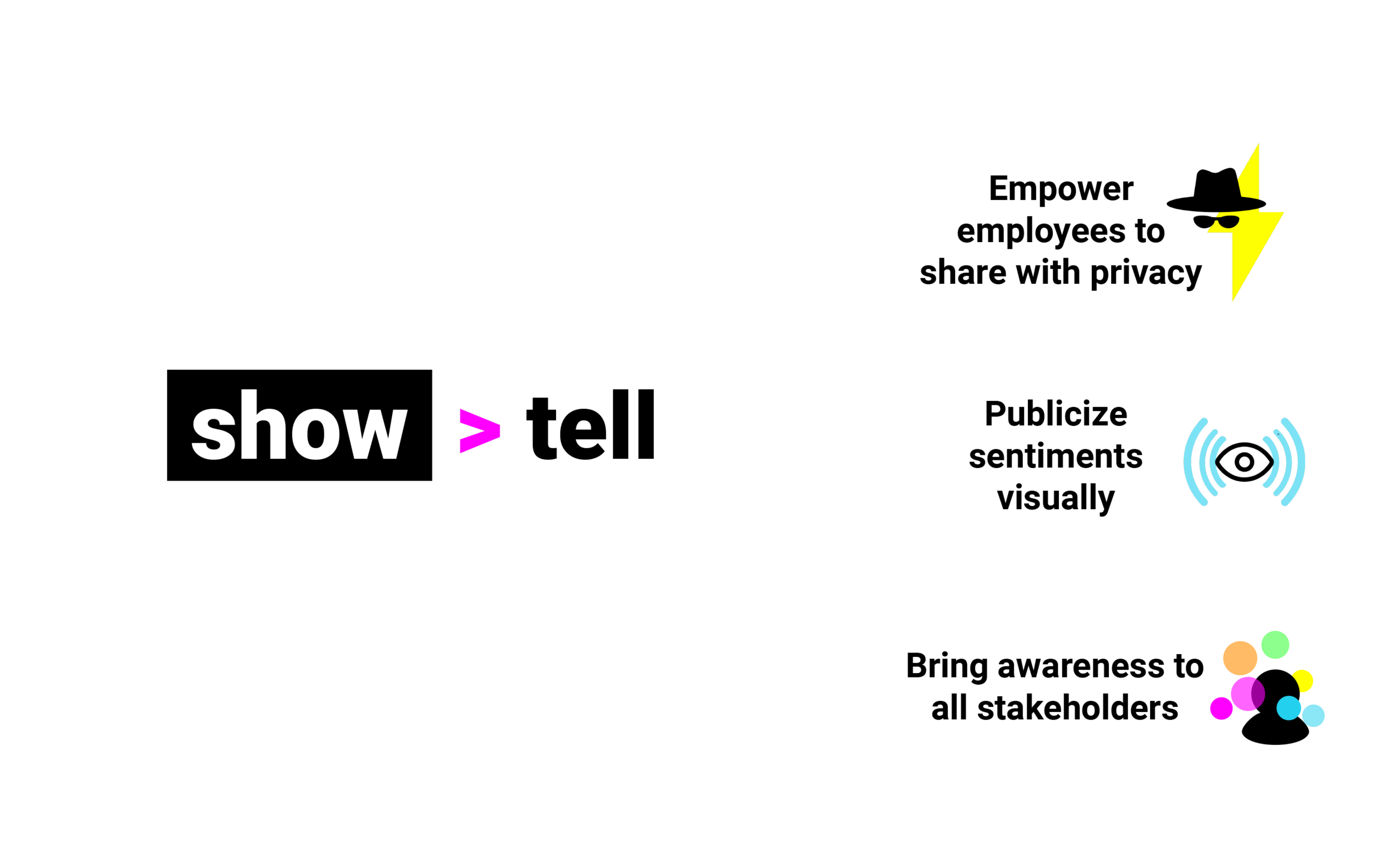
With that, we’ll conclude our presentation, and take any questions or comments from the audience.
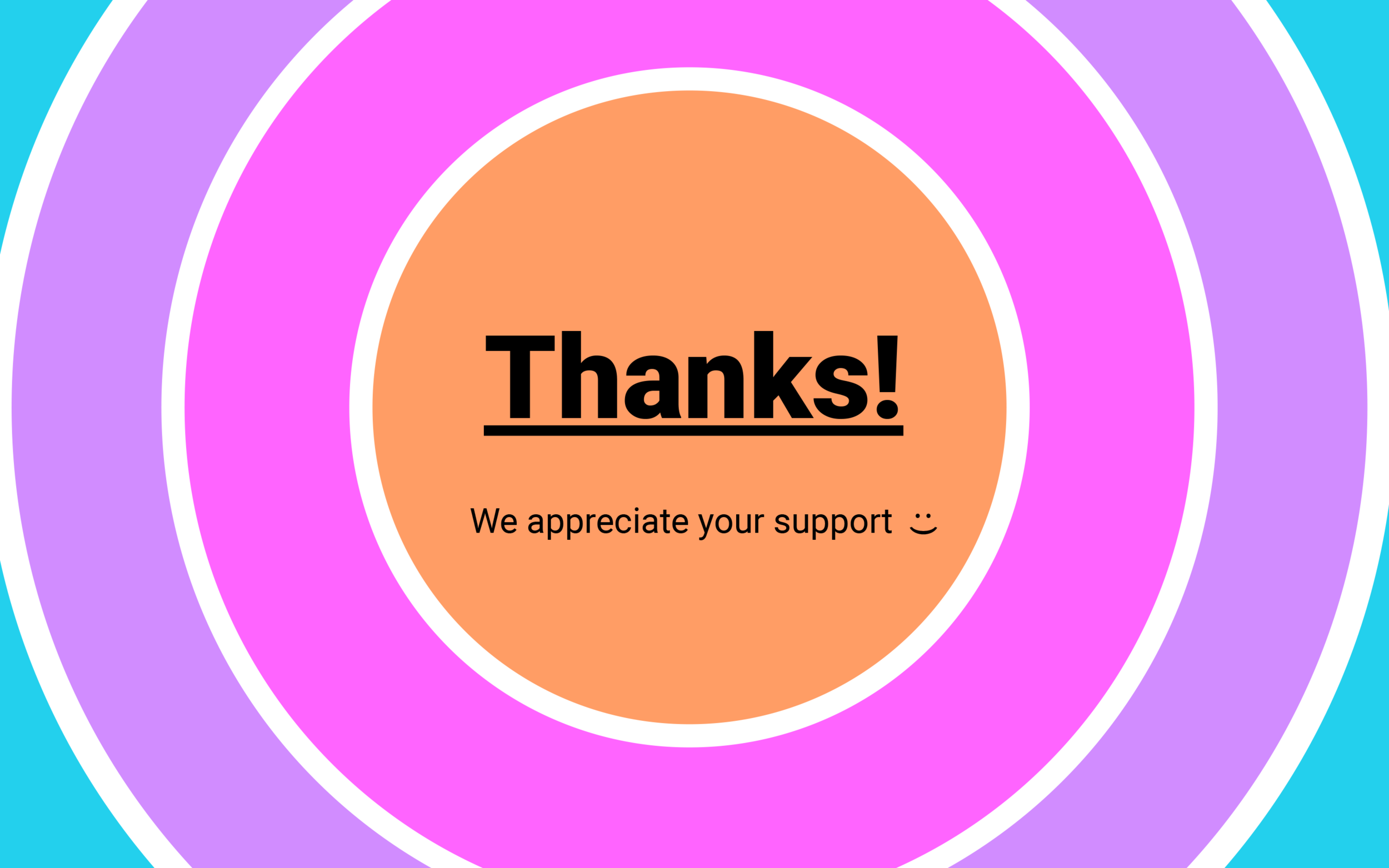


















In selecting our focus, we pivoted again with a slight step backward from our goals that began with helping people achieve their work goals, to helping them feel better at work, to creating empathy at work.
Created in Google Slides with the Noun Project
Implementation
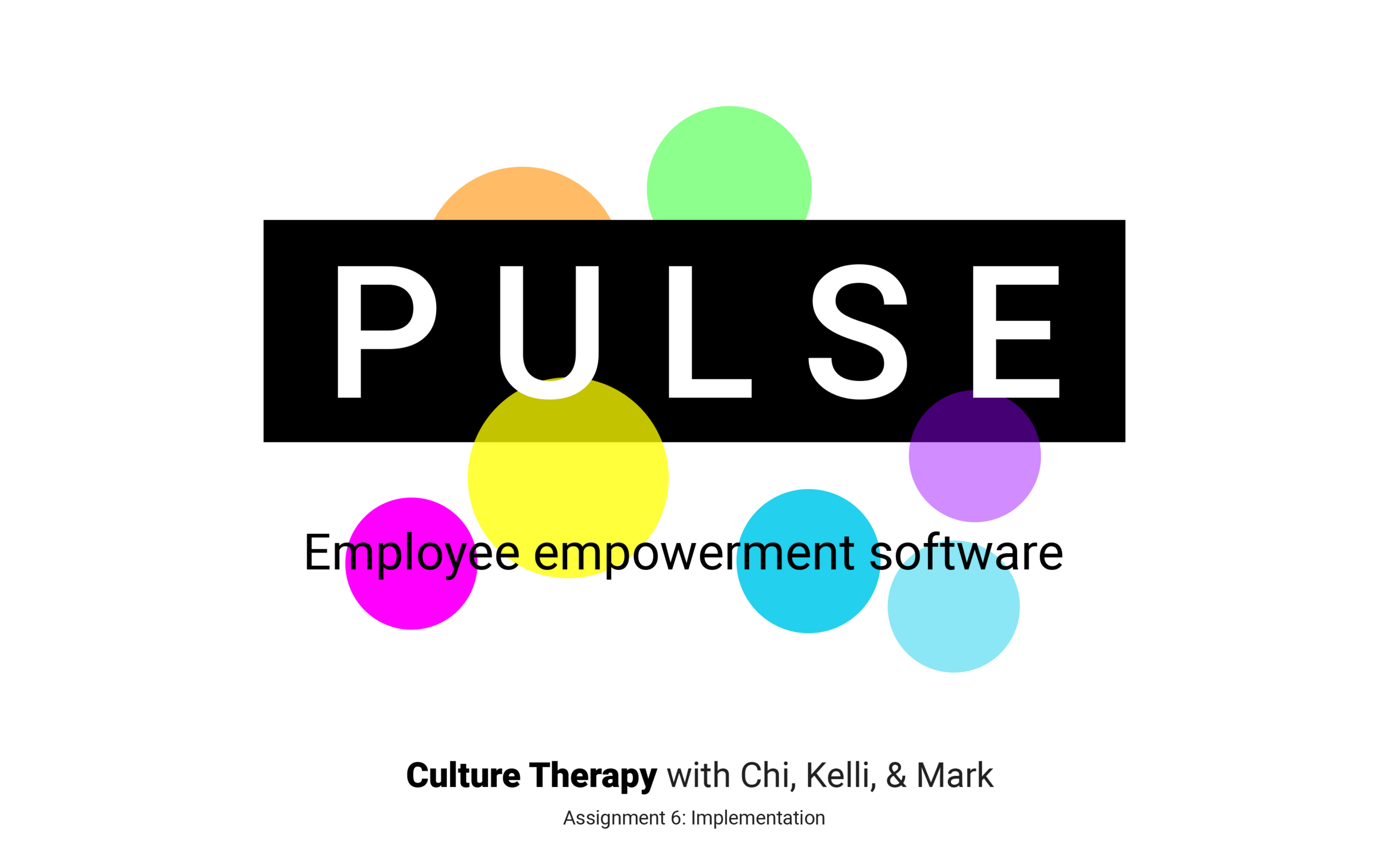
Hey everyone, we are Culture Therapy, and tonight we’ll be presenting the implementation for Pulse: employee empowerment software
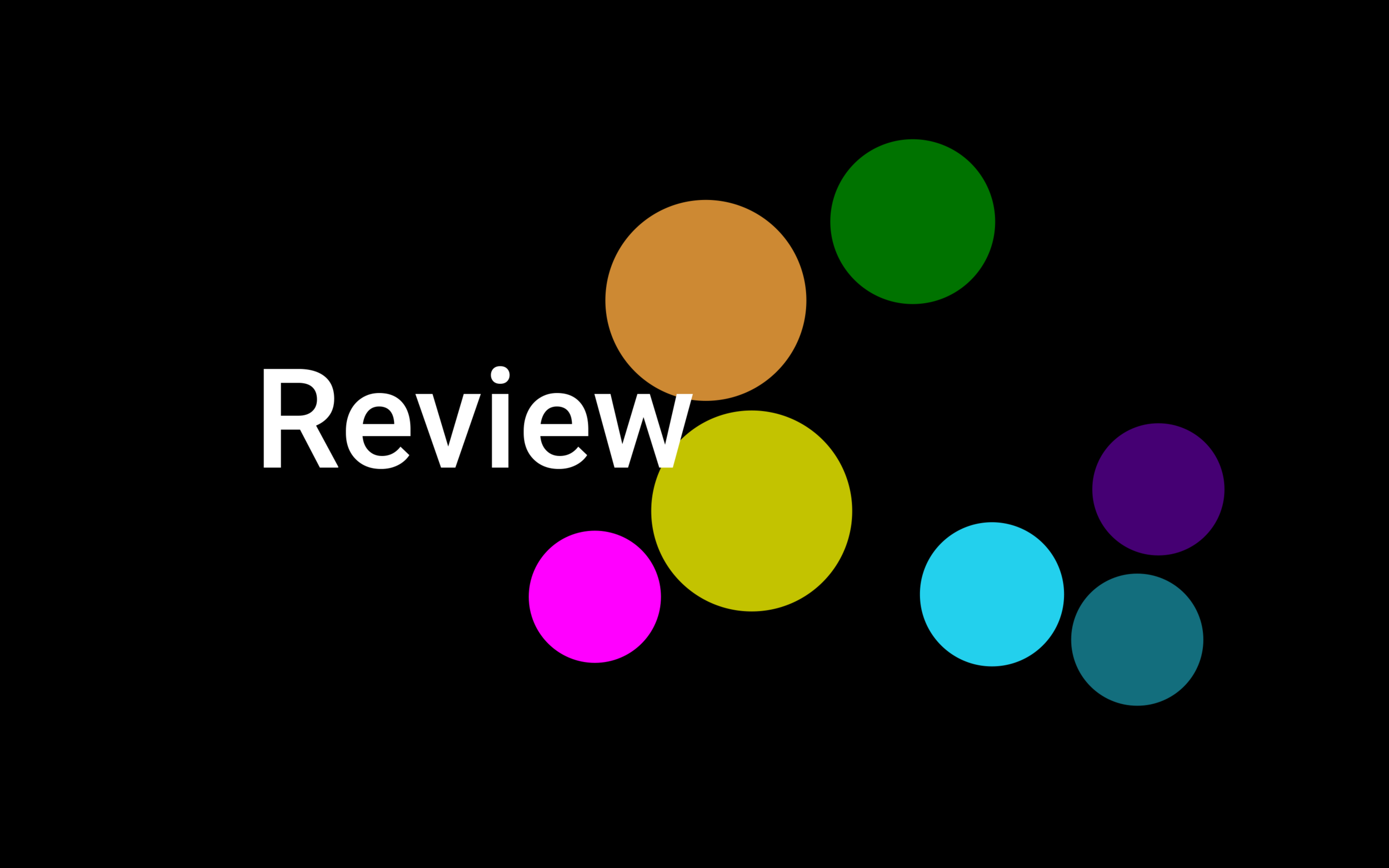
Before we get into the mockups, we’re gonna quickly review our problem and solution.
Emotions are intrinsically human, yet the typical office environment does not foster a safe place for employees to express what they’re feeling. As a result, we tend to suppress our emotions which can lead to built up frustration, unhappiness, and other negative outcomes.
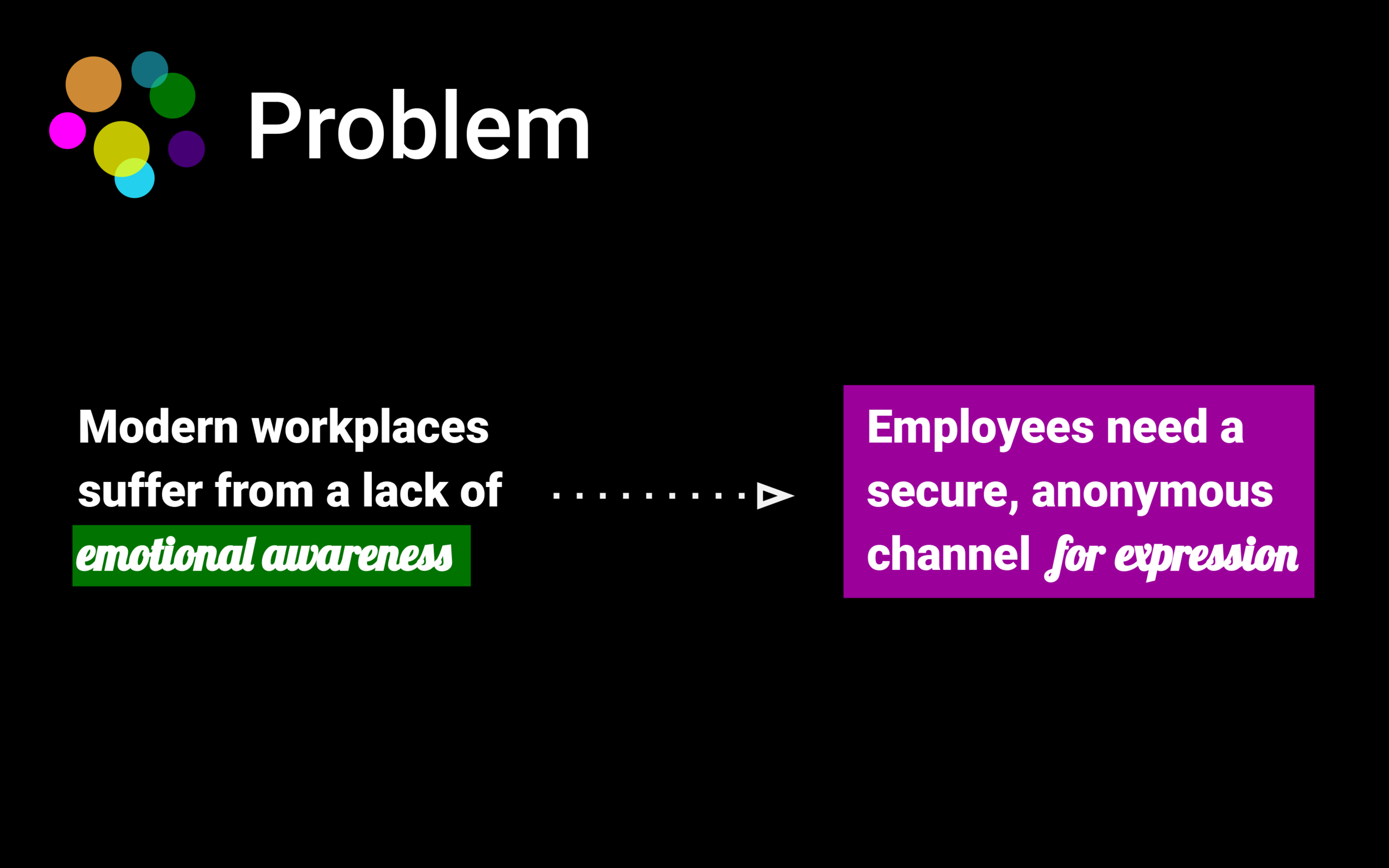
Through our research this term, we’ve made the determination that Modern workplaces suffer from a lack of emotional awareness. What employees need is a secure and anonymous channel for emotional expression.
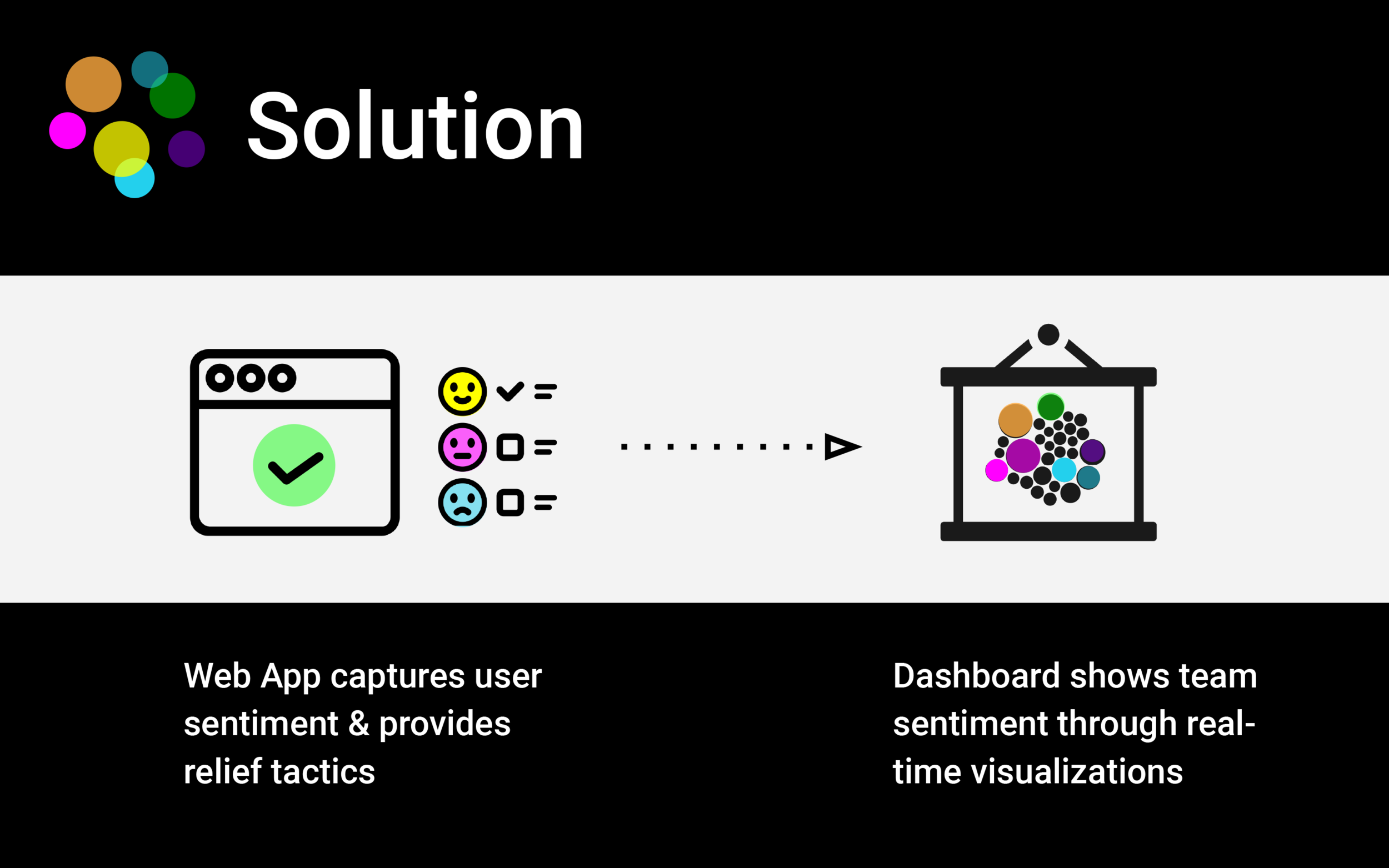
Our solution for this problem comes in two parts. The first is a web app for teams, which allows individuals to record their daily sentiments and view their personal trends and history.
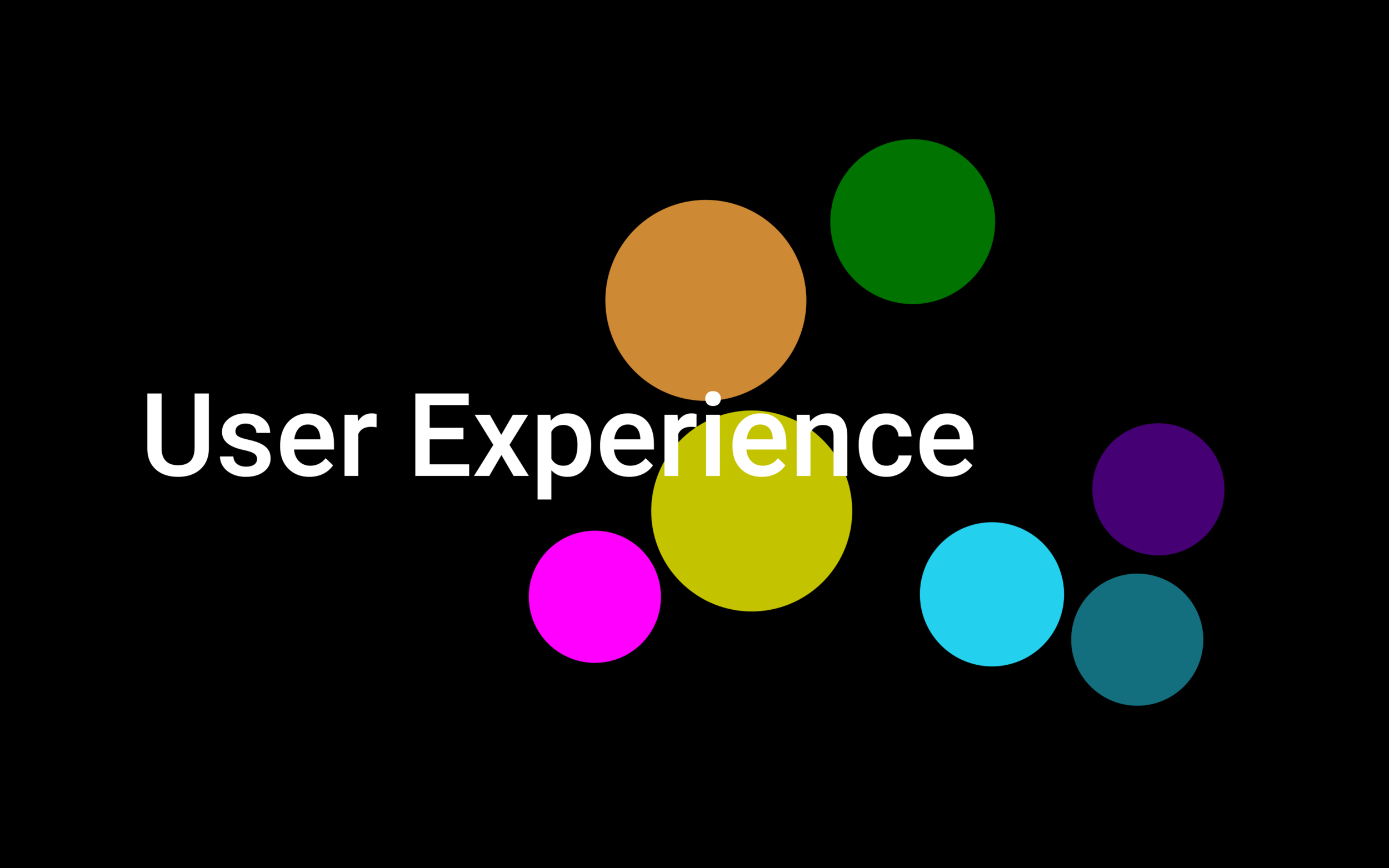
The second part is a living dashboard, accessible on any type of digital screen, which shows real-time visualizations of the team’s “pulse”, which consists of key mood indicators.
Now that we’ve reviewed the problem and how we’re attempting to solve it, we’d like to walk you through some mockups of the user experience.
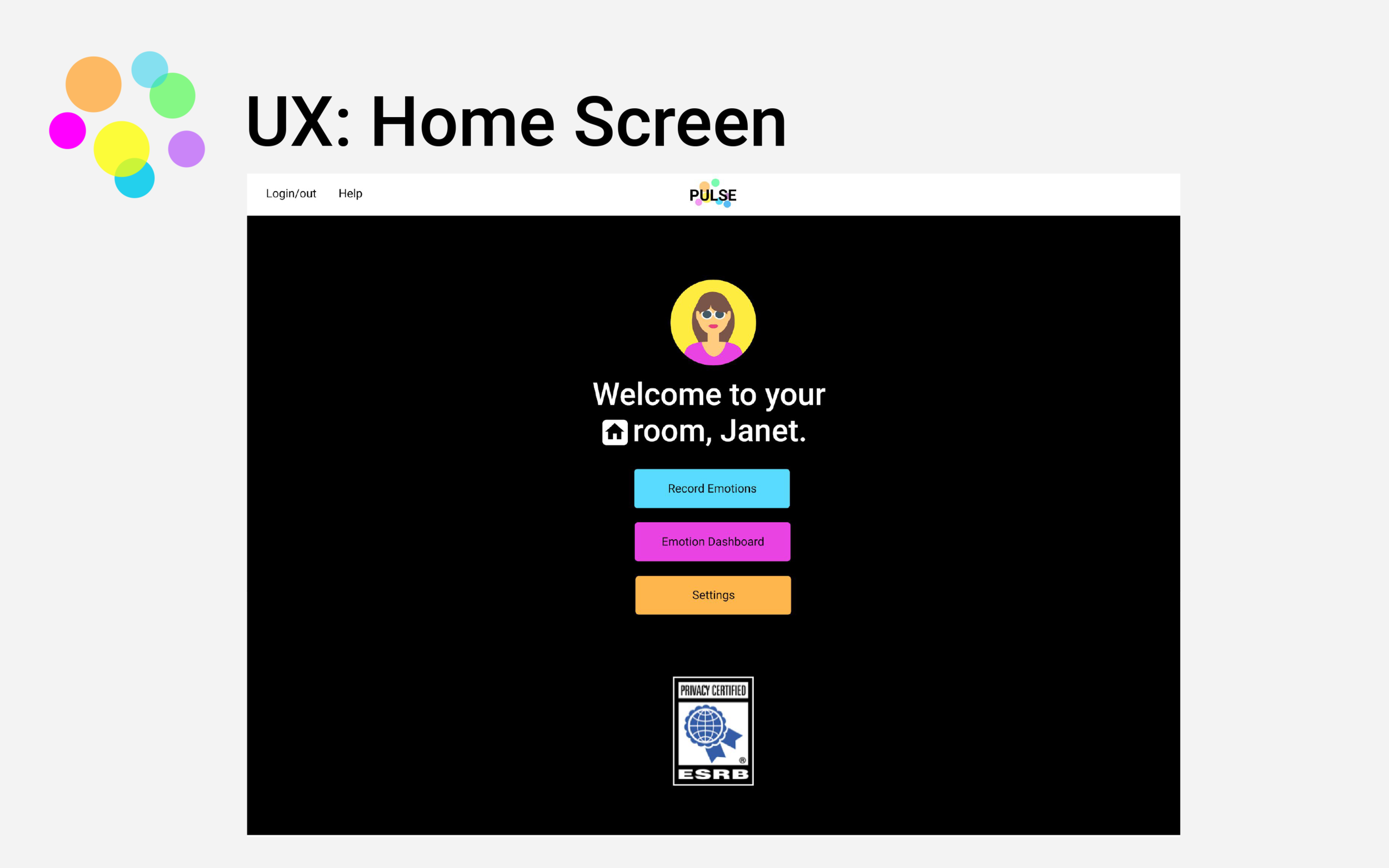
First we’ll show the web app, and how a user might engage with it. And then we’ll show how the output of the app translates to the living dashboard.
When the user logs in, she’ll be greeted with three options: record emotions, view the emotion dashboard, and adjust your account settings.
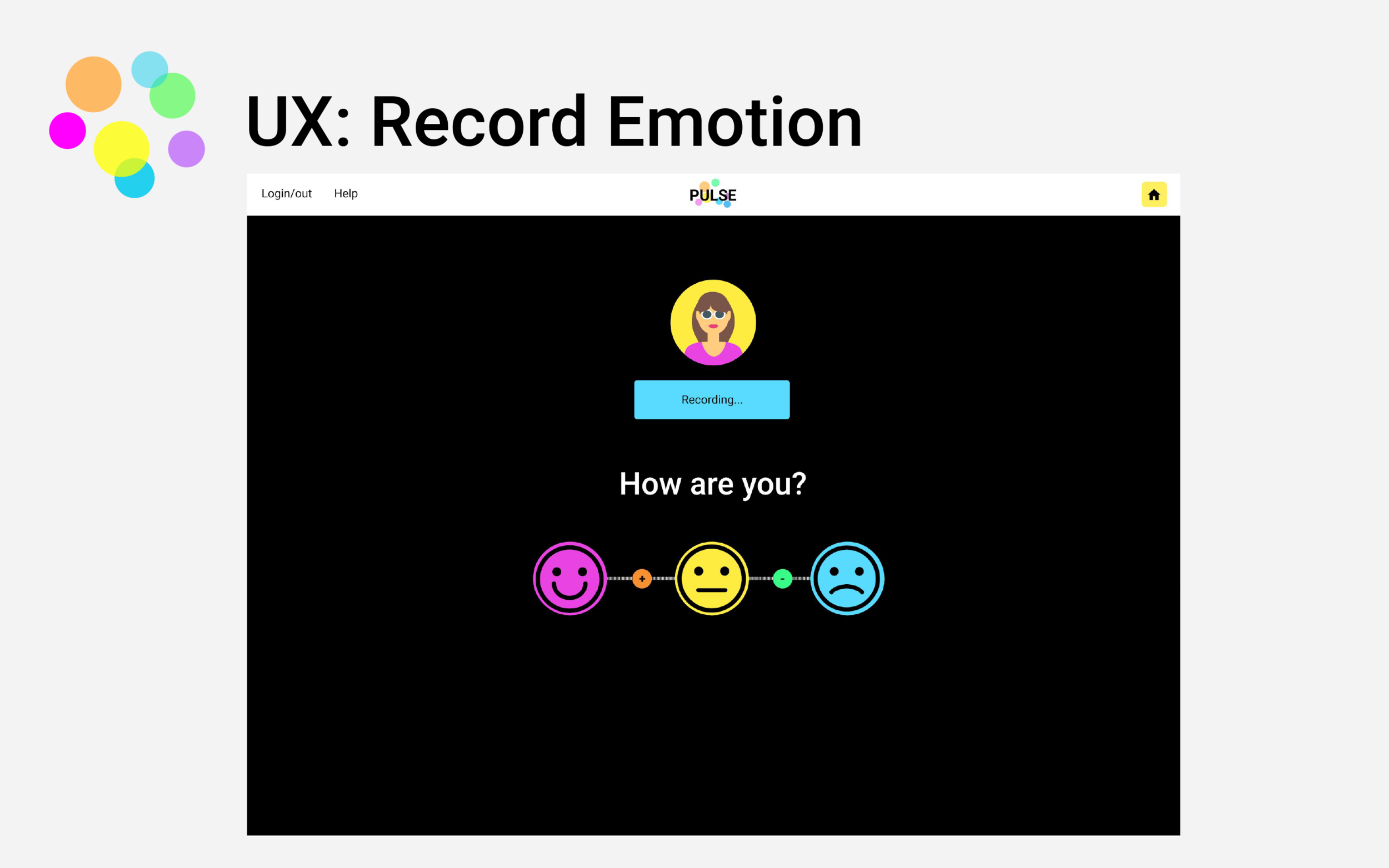
First, we’ll take a look at recording an emotion:
When recording an emotion, you’ll first be prompted to give a general indication of how you’re feeling.
In this example, Janet isn’t feeling so great today, so she went with the green face.
Once you select an emotion, you can fine-tune your levels for specific categories such as stress level and energy.
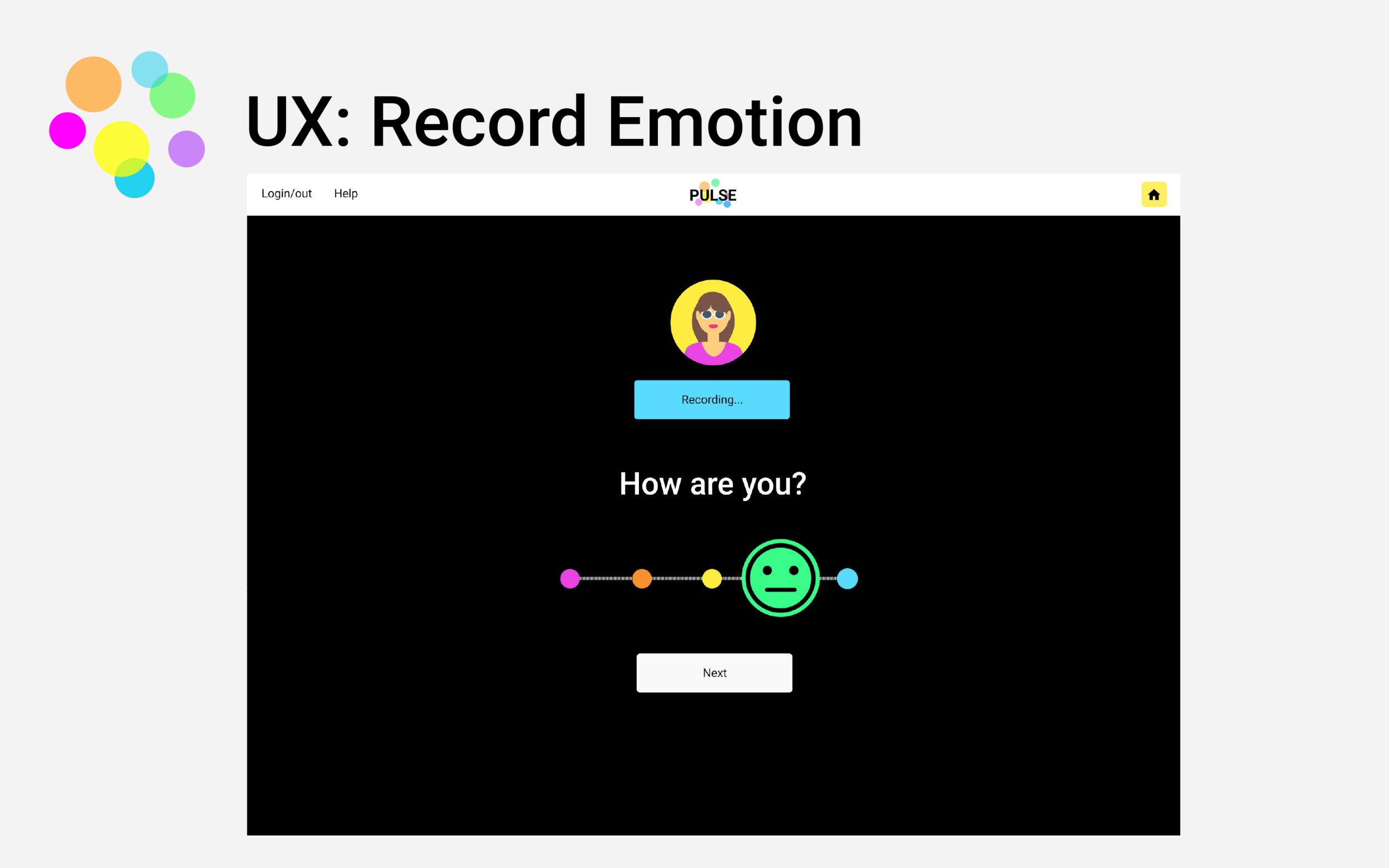
Janet isn’t too stressed but she’s in a bit of a sour mood, probably because her energy is so low.
Once you record an emotion, you’ll be taken back to your personal dashboard.
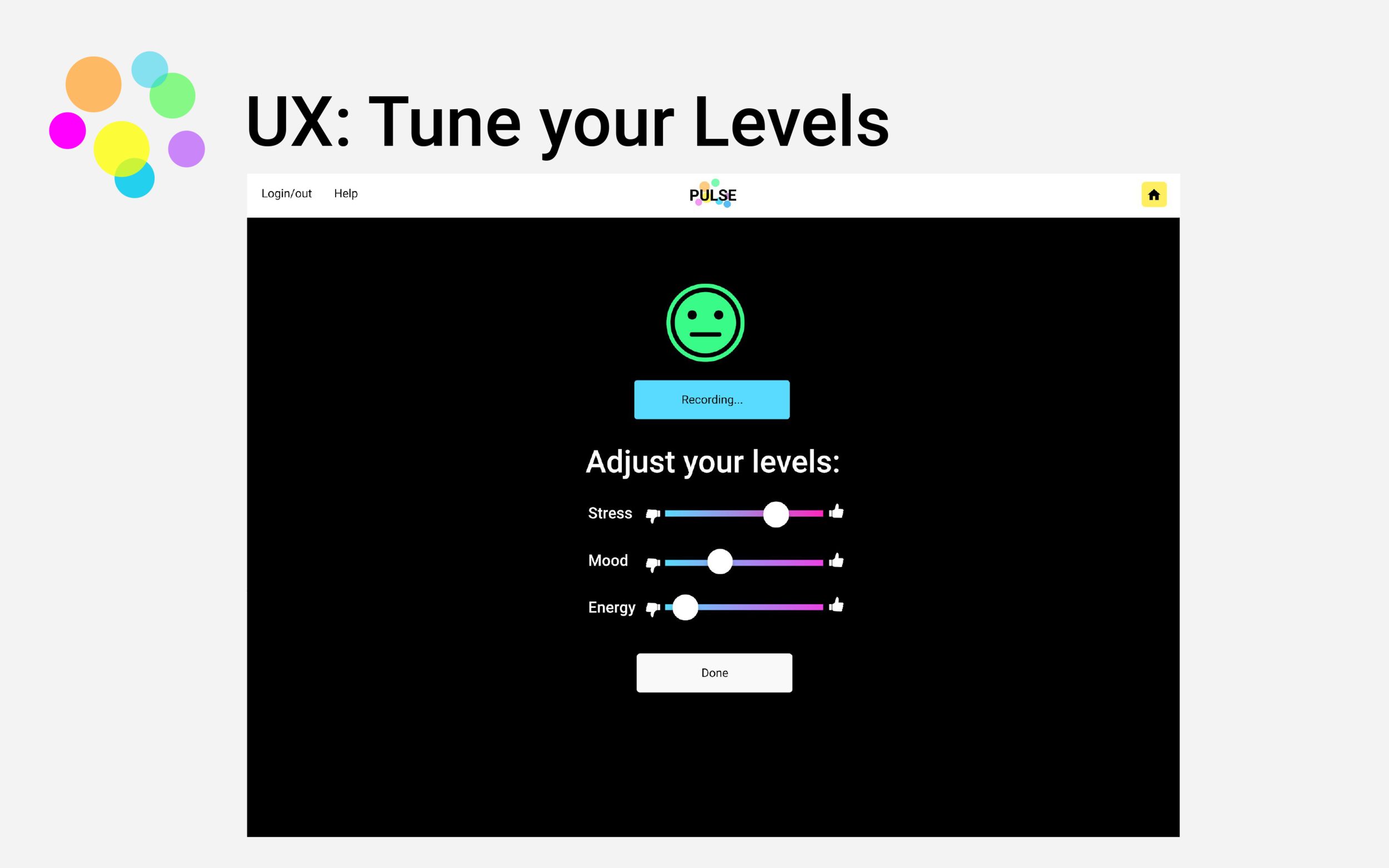
Janet isn’t too stressed but she’s in a bit of a sour mood, probably because her energy is so low.
Once you record an emotion, you’ll be taken back to your personal dashboard.
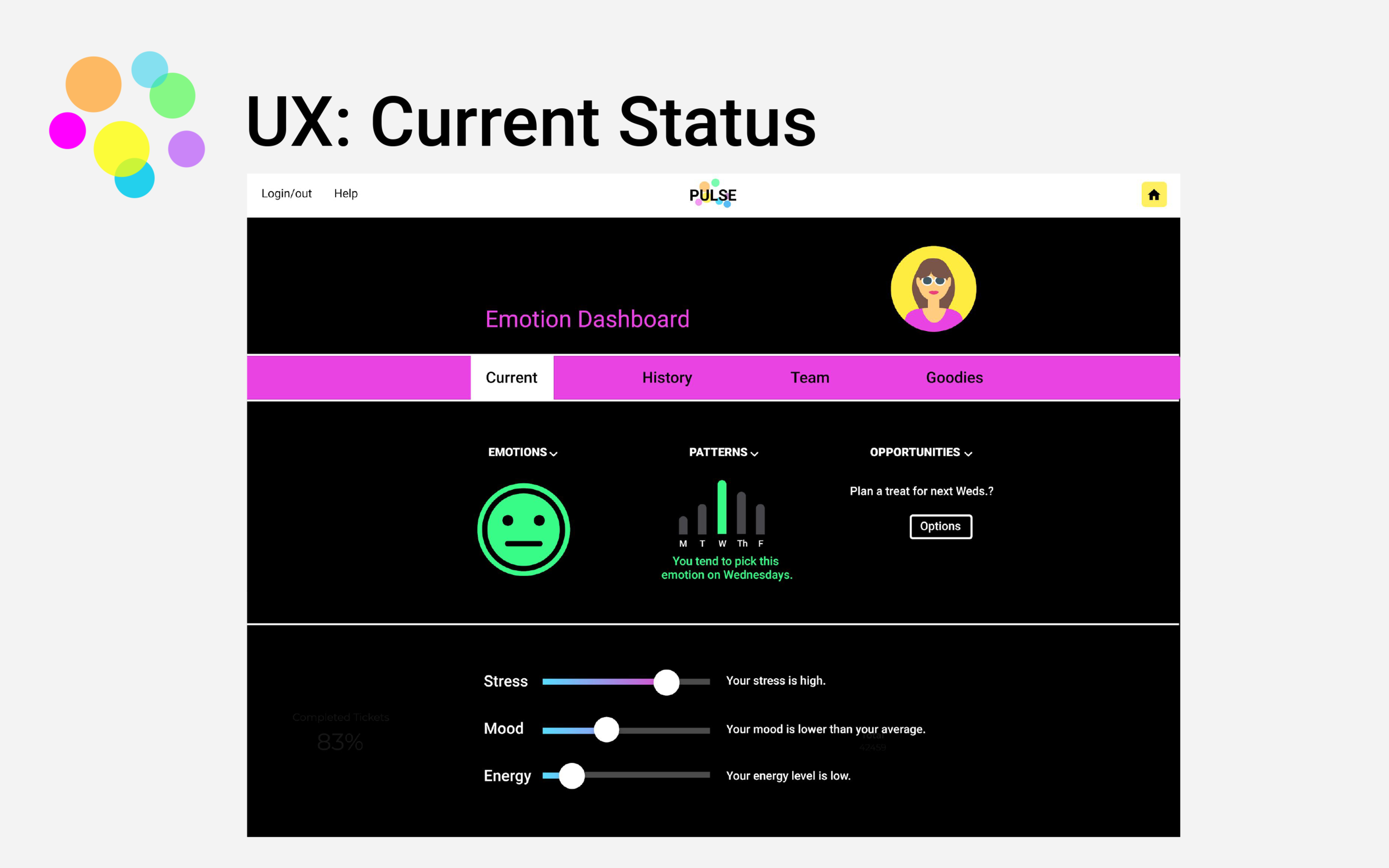
On this page, you can find a summary of recent emotions, trends in your feelings, and upcoming goodies that you’ve planned for yourself.
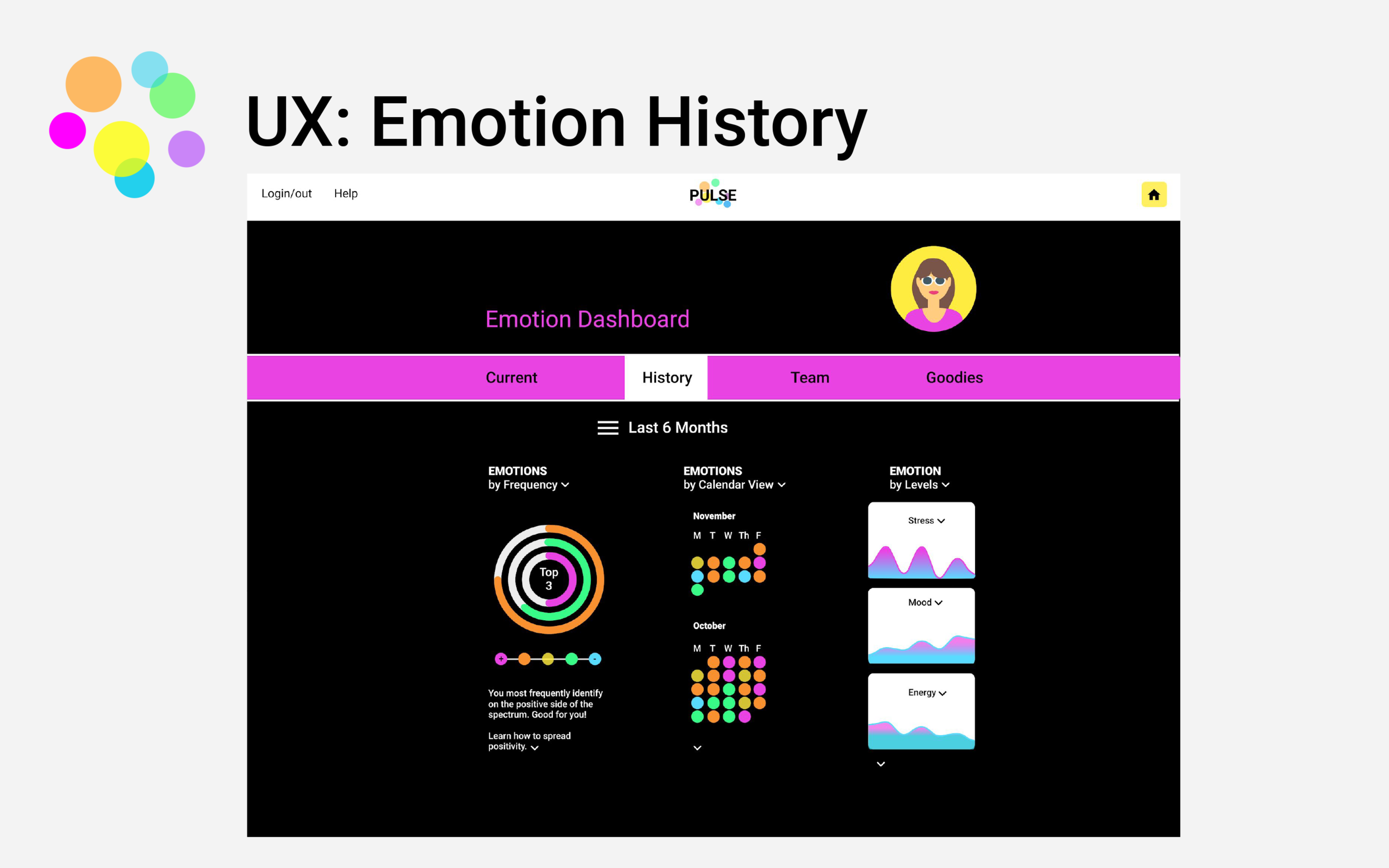
To see a more in-depth view of her personal activity, Janet can navigate to the History tab.
On this screen she’ll be able to find helpful information like her most frequent emotions, a day-by-day calendar view of how she’s been feeling, and graphs to help her visualize her own patterns.
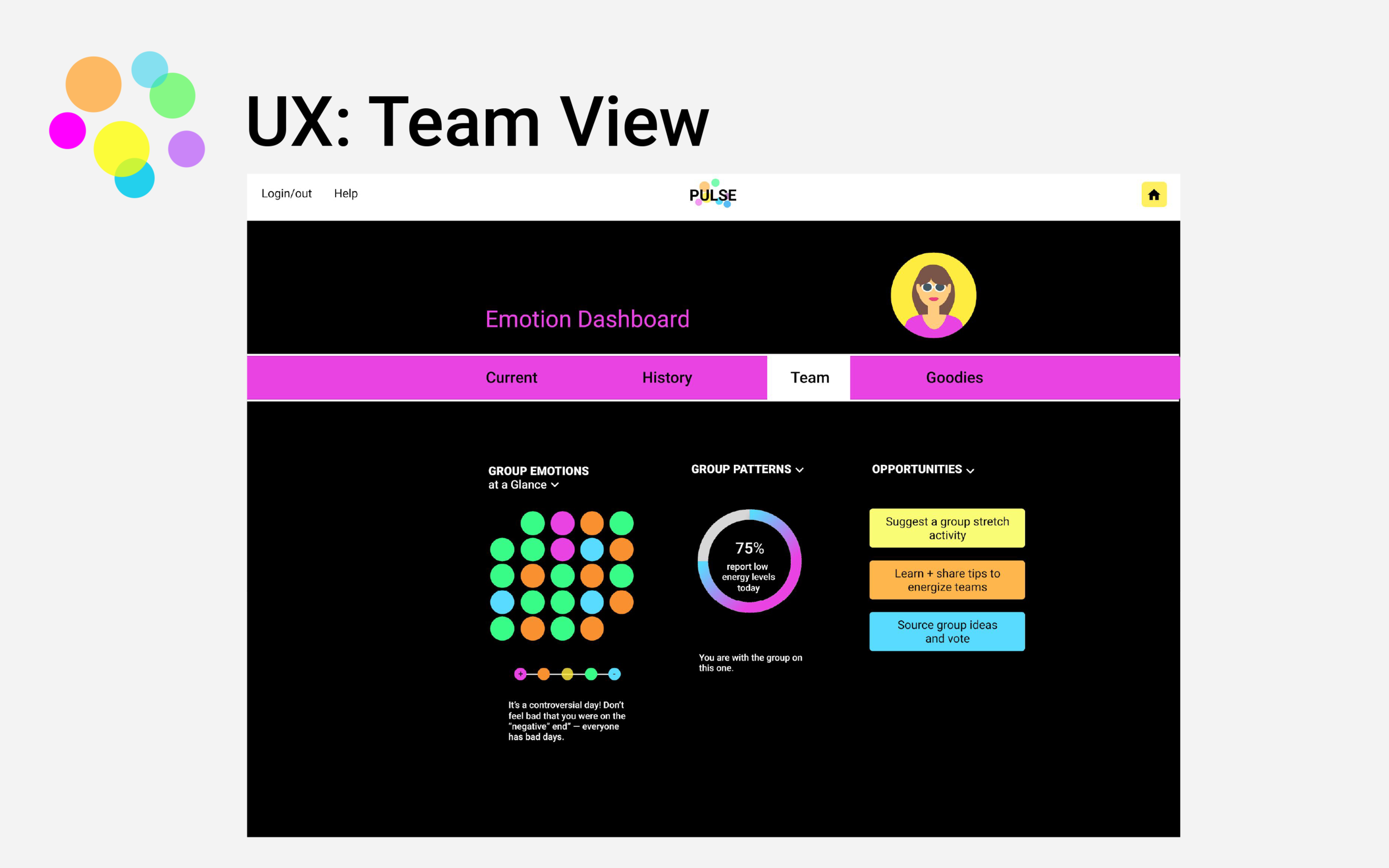
Janet can also access the Team Dashboard from her room. This helps her contextualize how she has been feeling with the rest of the team.
Is everyone tired today or is it just her, she wonders?
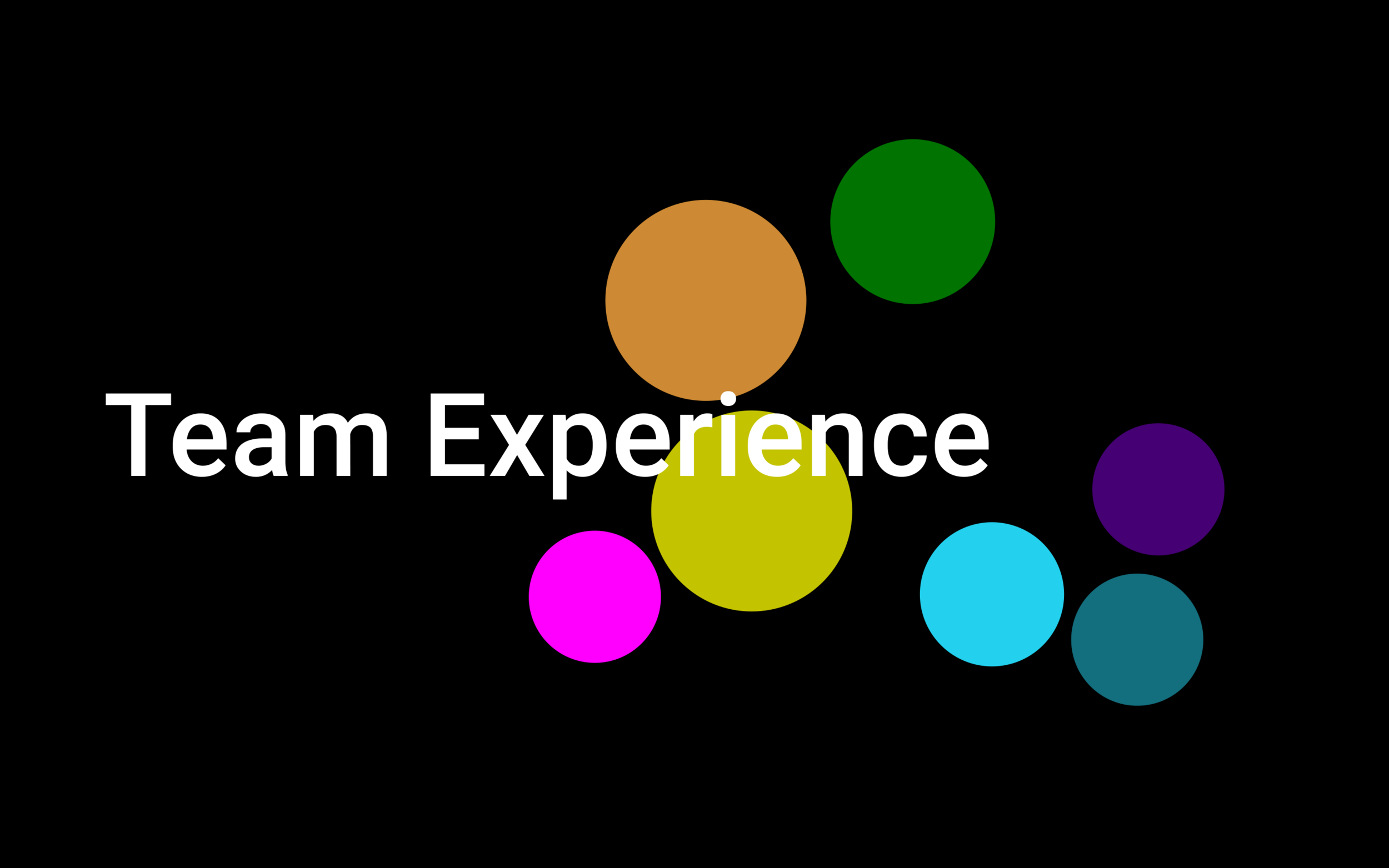
Now that we’ve seen how the individual user interacts with Pulse, let’s take a quick look at how a team might engage with the software.

This is called a Team Pulse. The dashboard is accessible by anyone on the team, but for maximum effect, it should be displayed in a central location within the workplace.
The Team Pulse shows aggregate emotions recorded by the team on a given day. Today, we can see that the team’s mood has been trending upward and is looking pretty good. It seems like energy has been declining, however, so perhaps the team is burning out a bit and looking forward to the weekend.
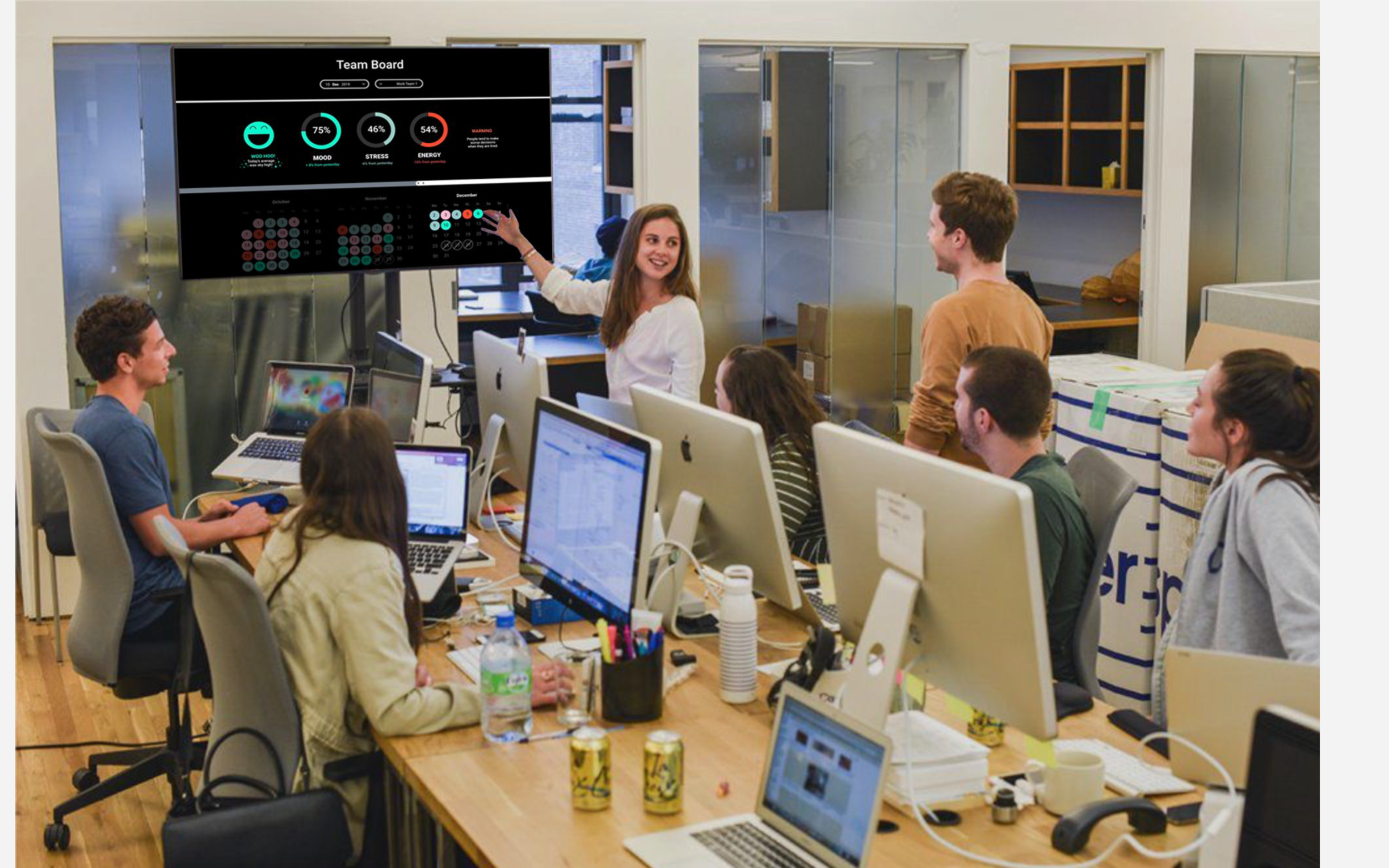
This render shows how the Team Pulse Dashboard can be used in an office environment. Using the Team Pulse, employees and management will always have congruent information about the emotional health of the team.
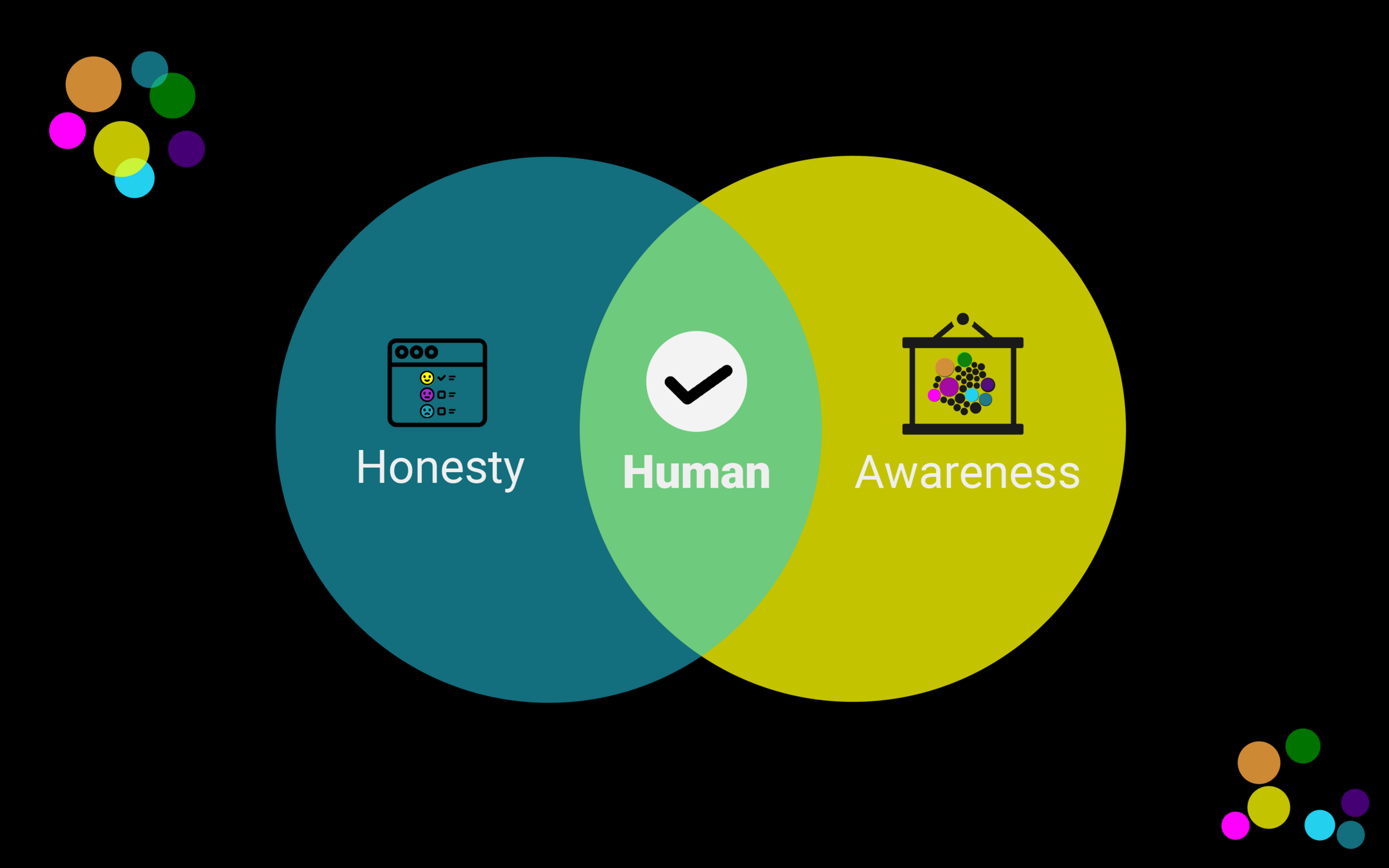
The true value of Pulse is that it combines honest, emotional assessment with team-wide awareness. A user can privately and anonymously report how they’re feeling to Pulse, without fearing how those emotions will be perceived.
When these two factors, honesty and awareness, come together, the result is human. Pulse empowers employees to be honest with their emotions, and in turn, it allows team members to react to that awareness as humans would, not as the modern workplace has conditioned us to.
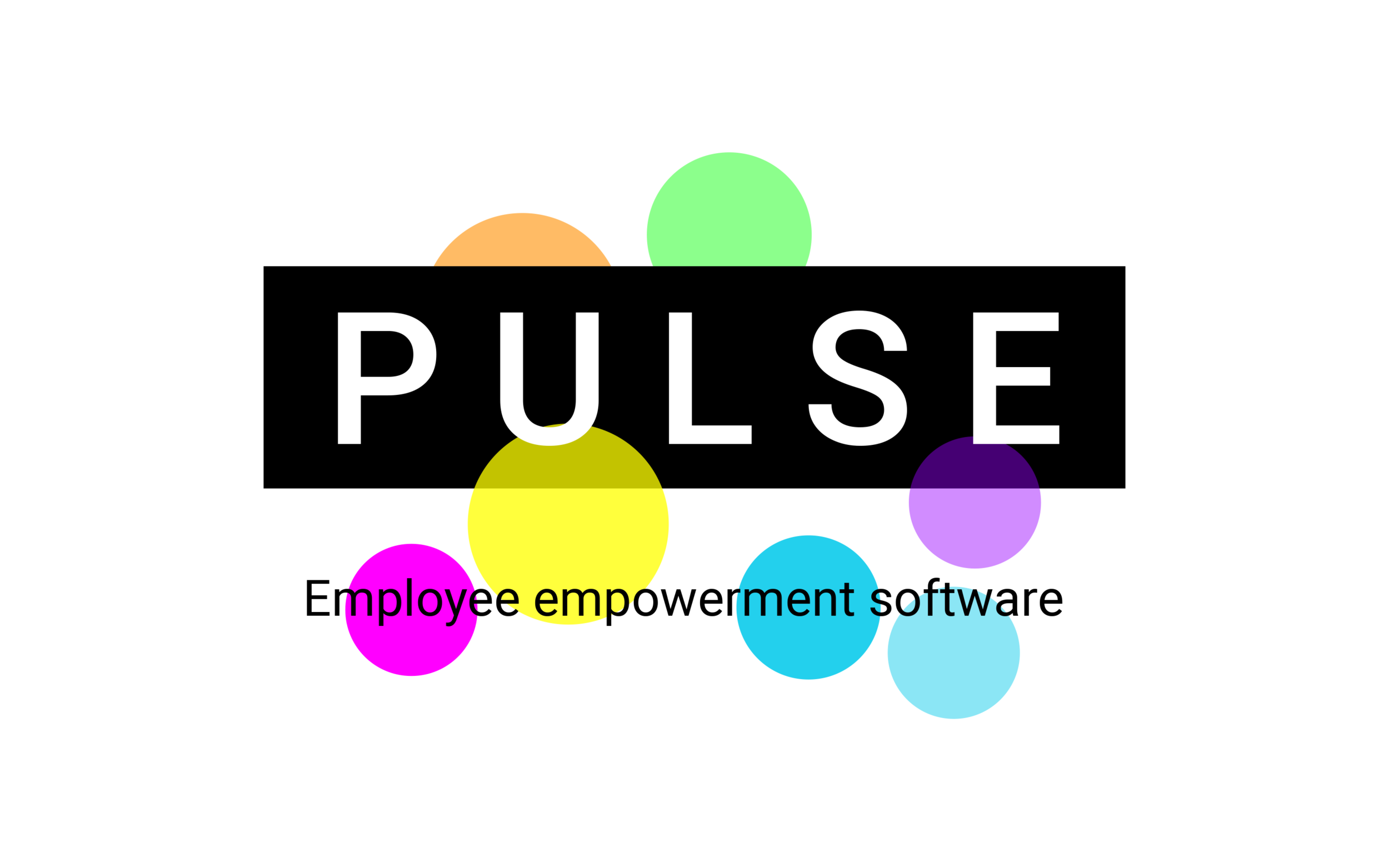
Thank you.

















Our first round of mockups centered around how one might safely record and broadcast their feelings at work.
Created in Google Slides with the Noun Project
Final Presentation
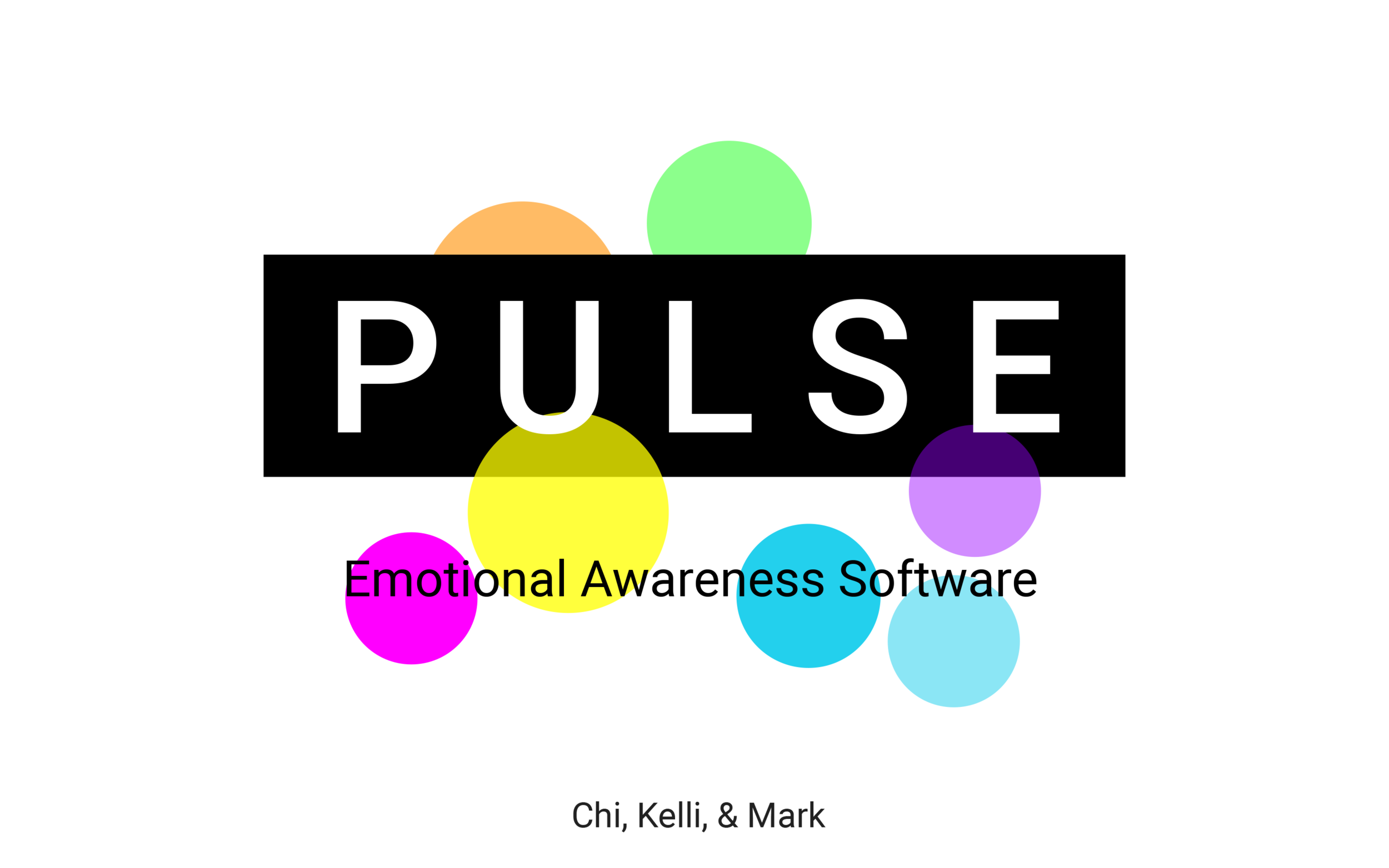
Hey everyone, my name is Mark, and I’m joined this evening by my incredible teammates Kelli and Chi. We’d like to present Pulse: the emotional awareness software
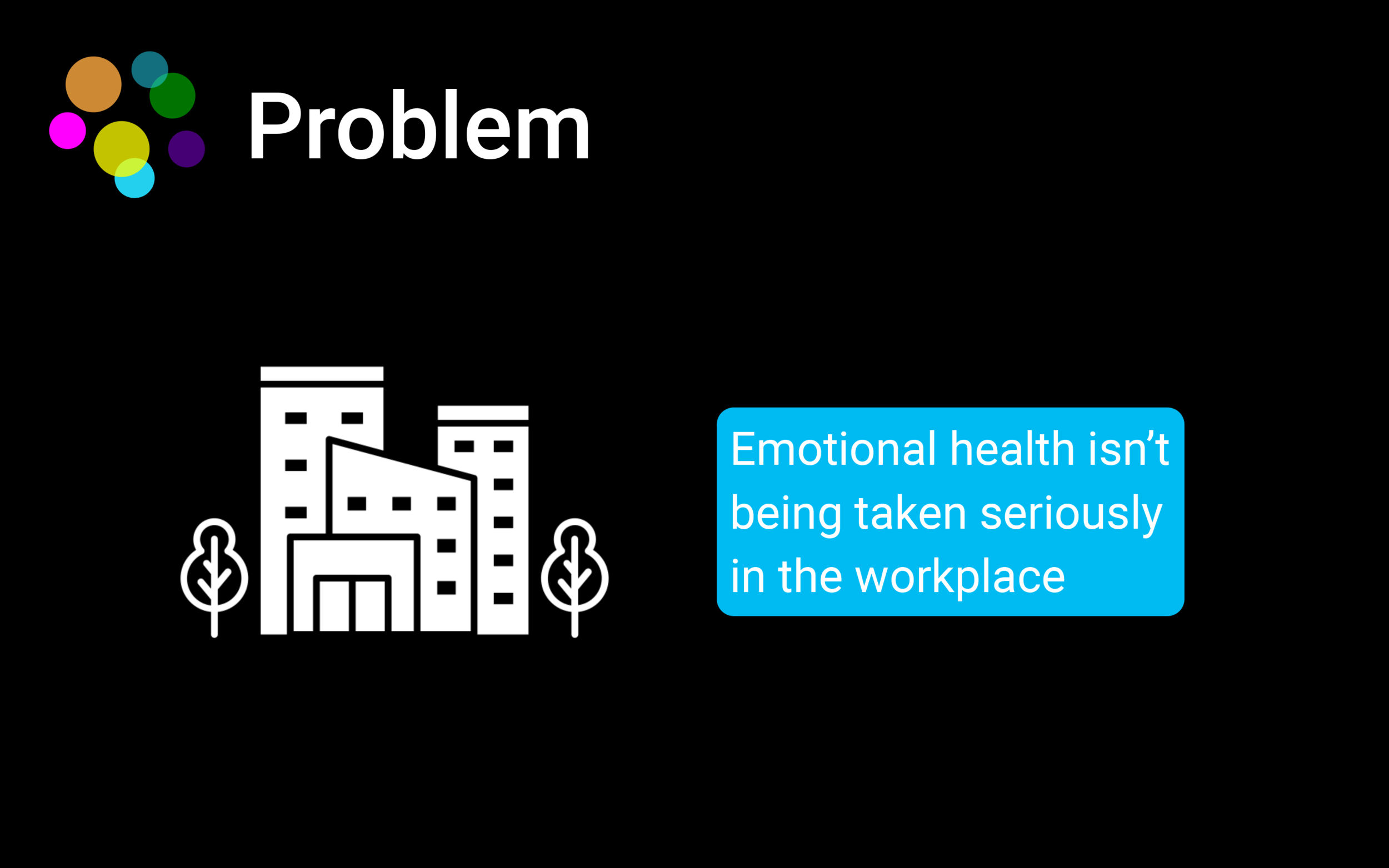
We started this project with an idea that emotional health wasn’t being taken seriously in the workplace. Despite how far the psychology has come, office environments haven’t yet evolved to accommodate the emotional needs of their inhabitants.
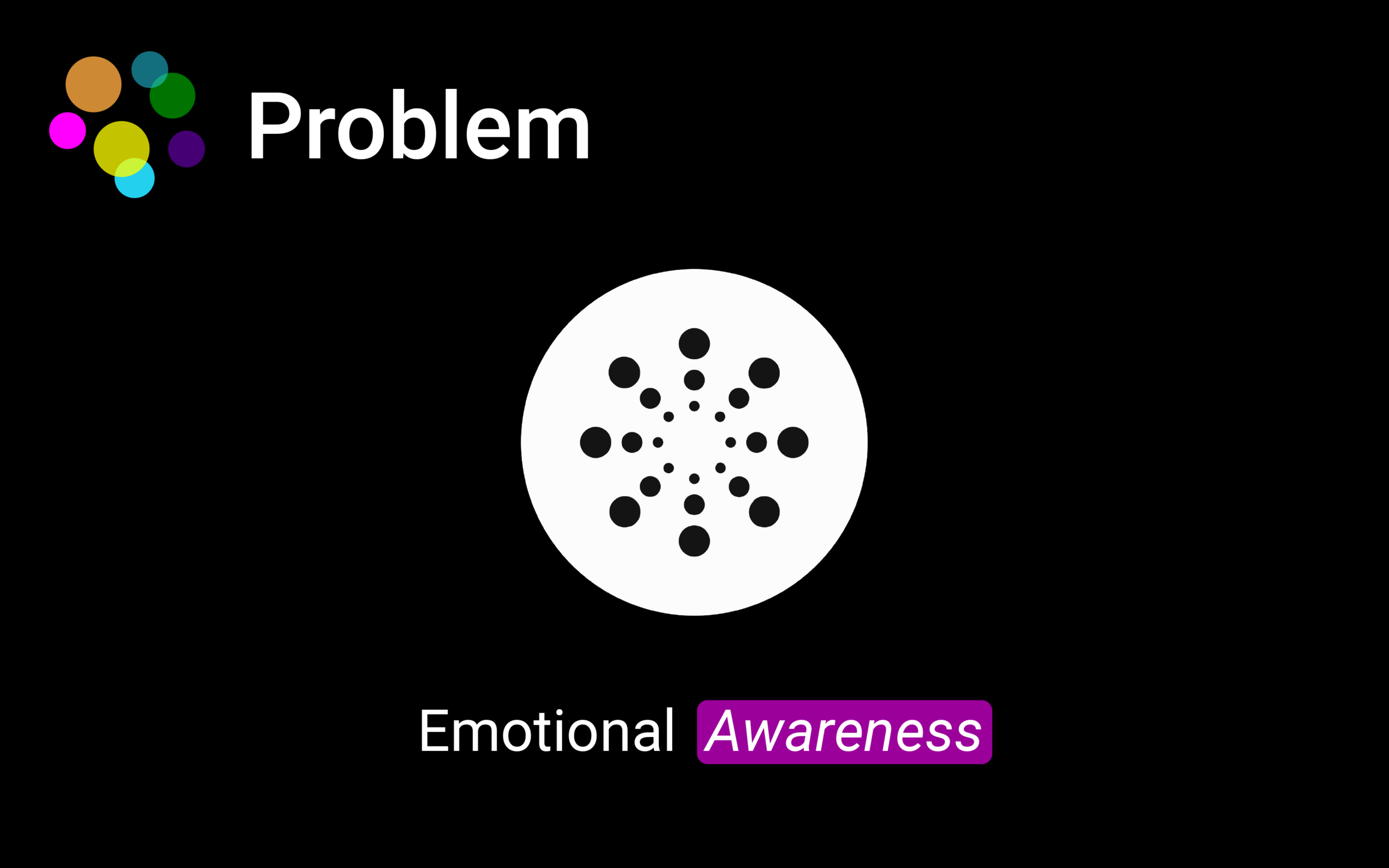
So we decided to hone in on that. How might we empower employees to share their feelings with confidence, and how can we actionize those emotions to affect positive change in the workplace?
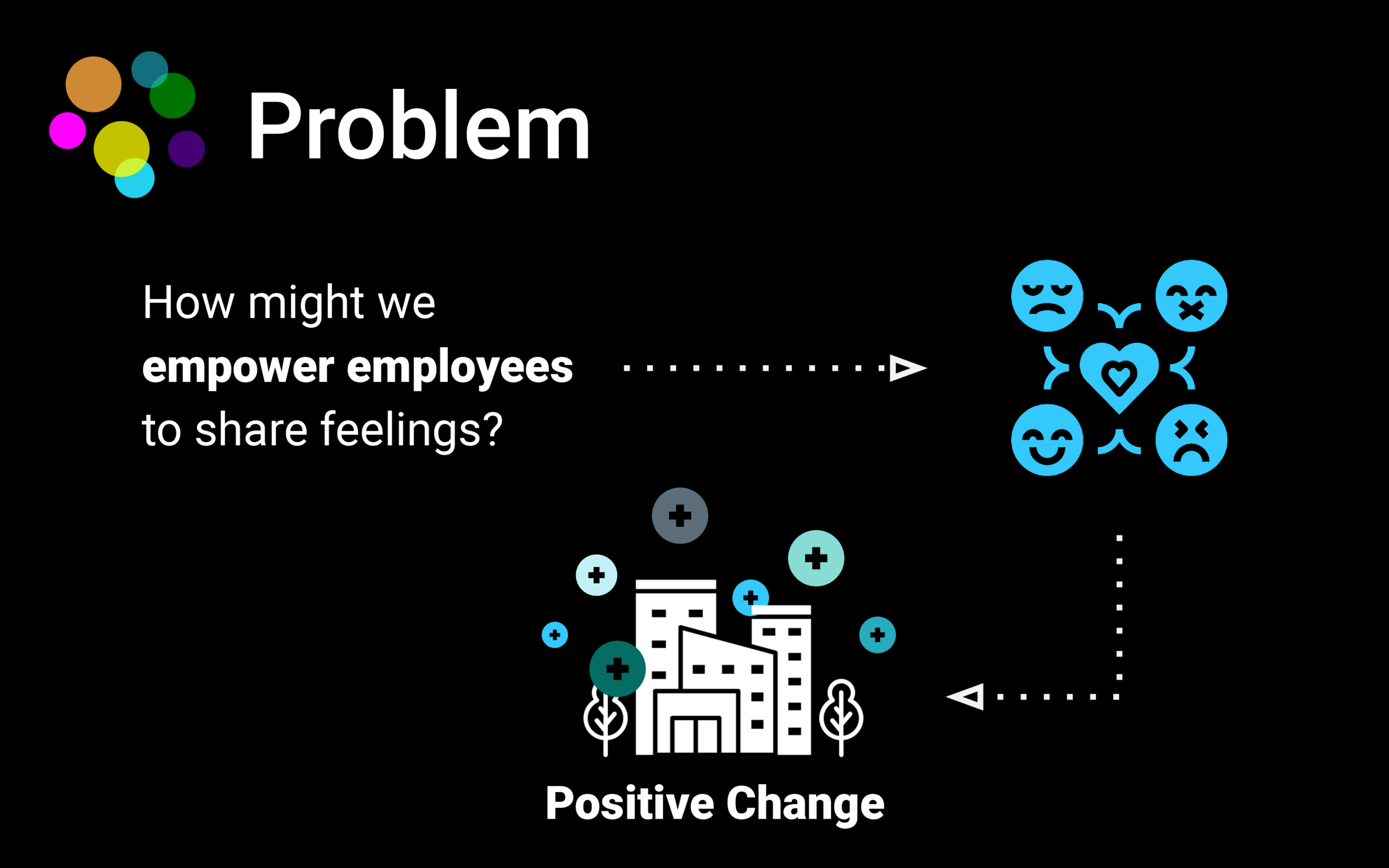
Pulse give employees a secure place to keep track of their feelings at work. But more importantly, it provides them with an anonymous channel to spread awareness of those feelings without fearing personal backlash.
With Pulse, teams are equipped with the critical information required for maintaining a healthy and productive workplace.
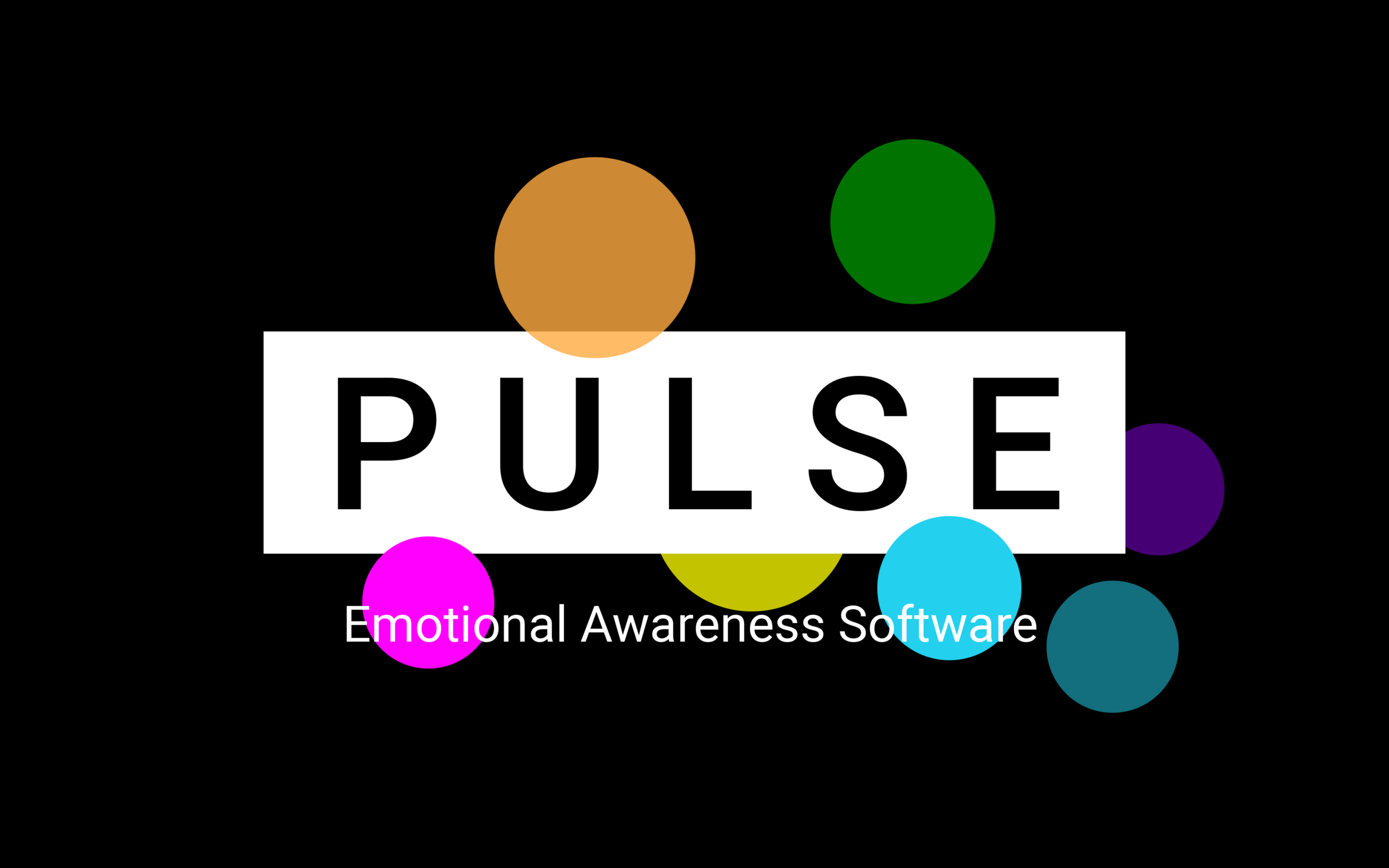
To tackle this problem, we came up with Pulse: an intuitive web app designed to promote emotional awareness in the workplace.
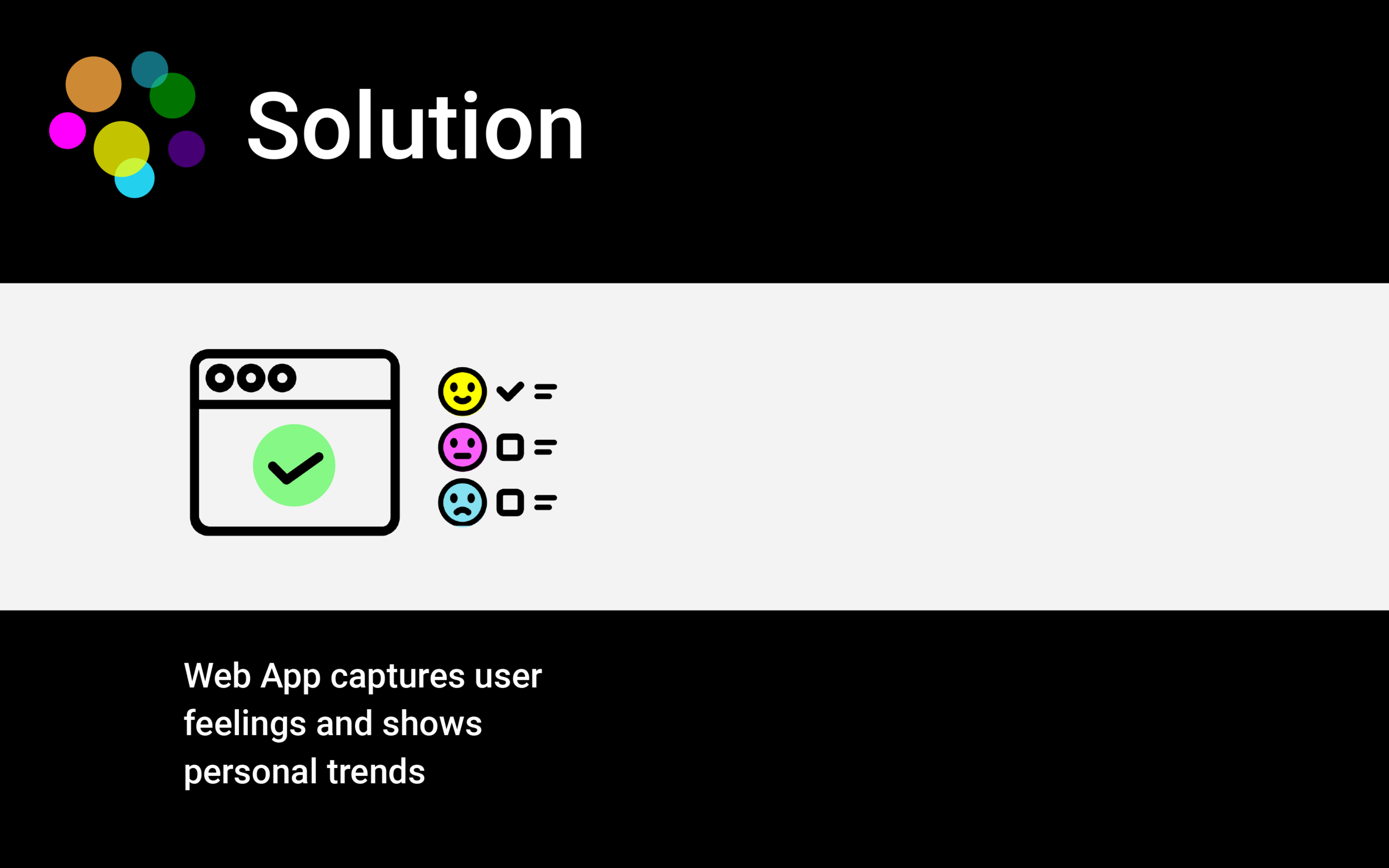
Pulse serves two key functions:
First, it provides a private portal for users to record their daily feelings and review personal trends.
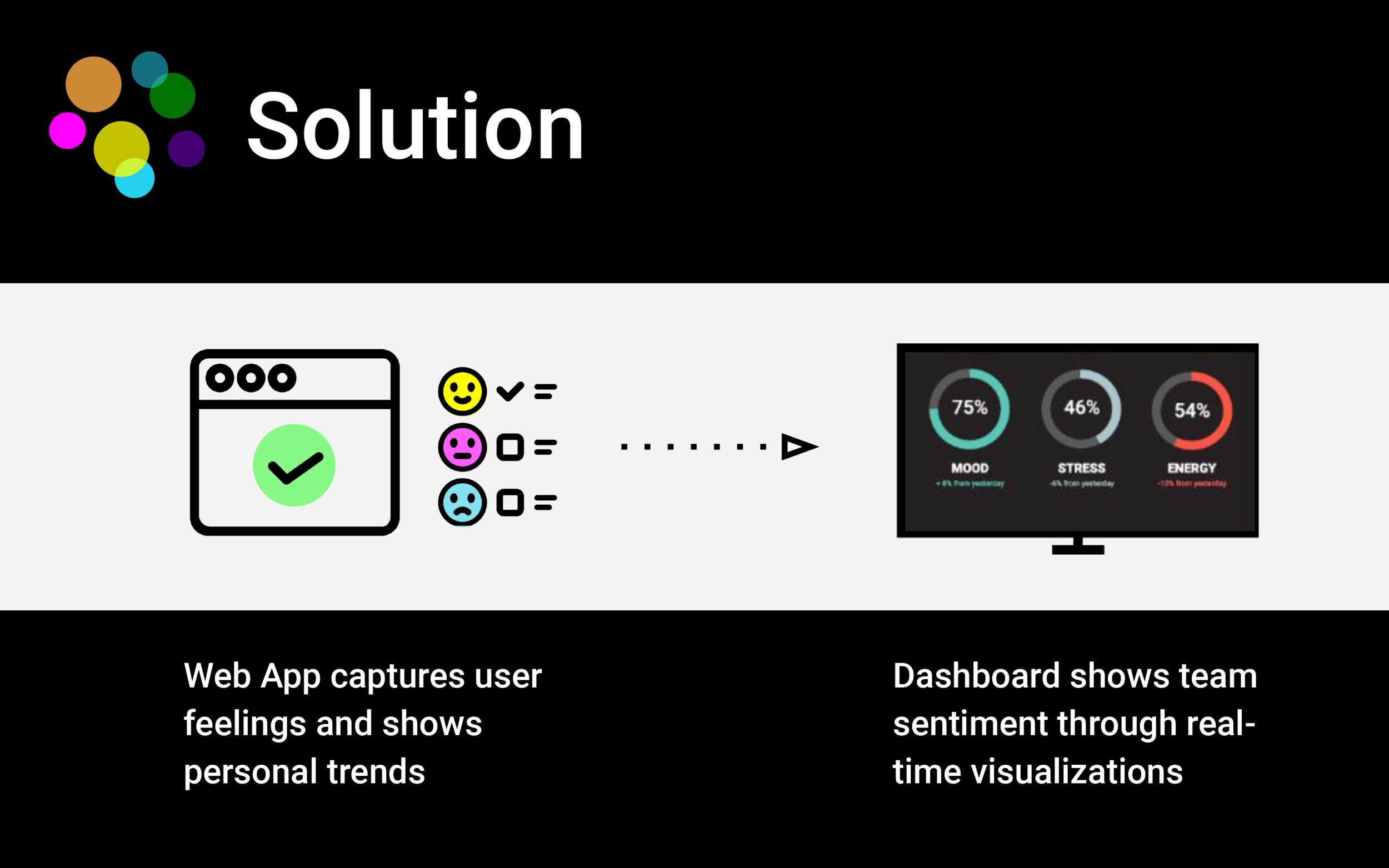
Second, it generates a living dashboard, accessible on any digital screen, which shows the team’s aggregate emotional metrics.
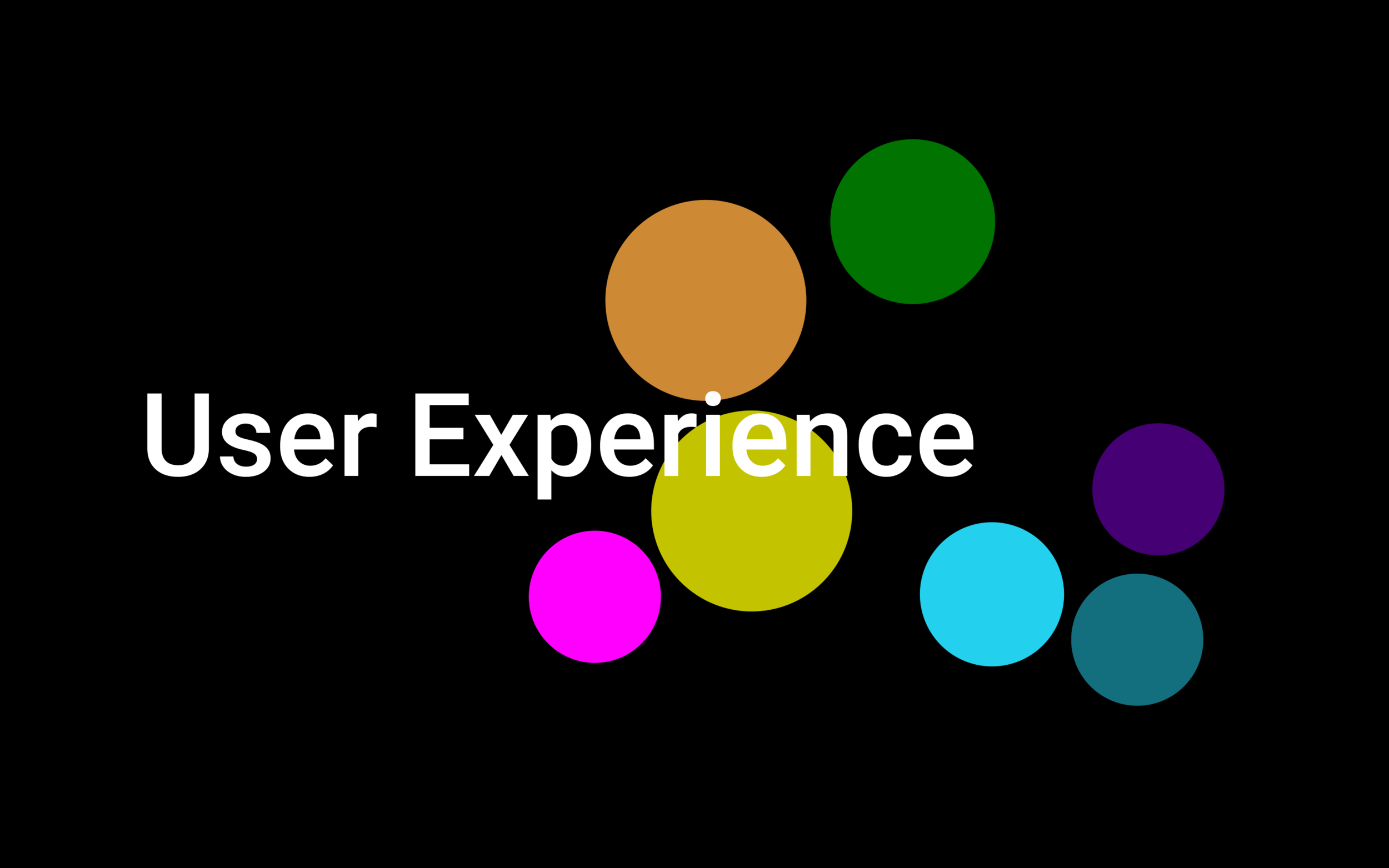
Let’s take a quick look at how a Pulse user might engage with the software.
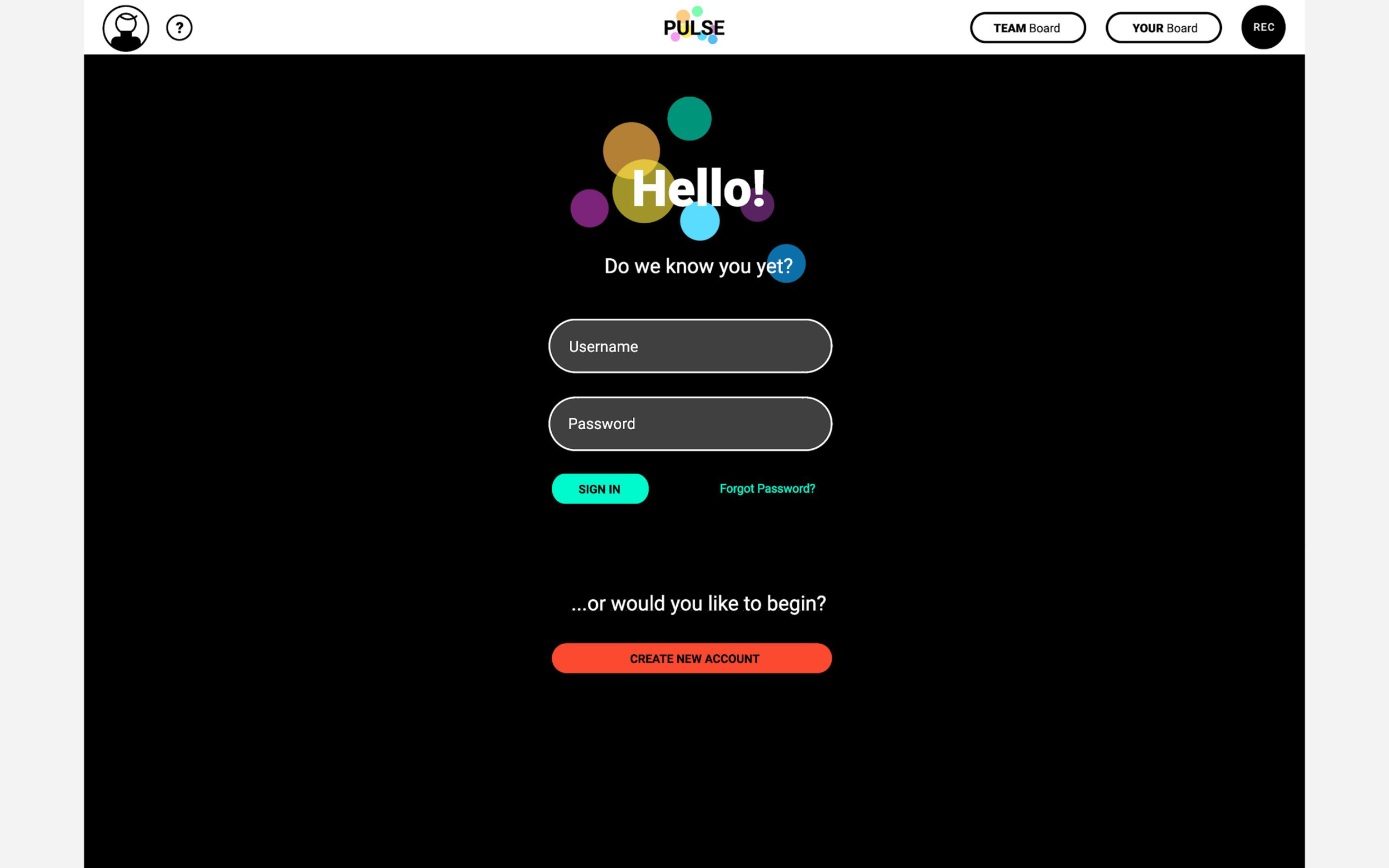
Upon opening the app you’ll be prompted to create an account, or log in with an existing username
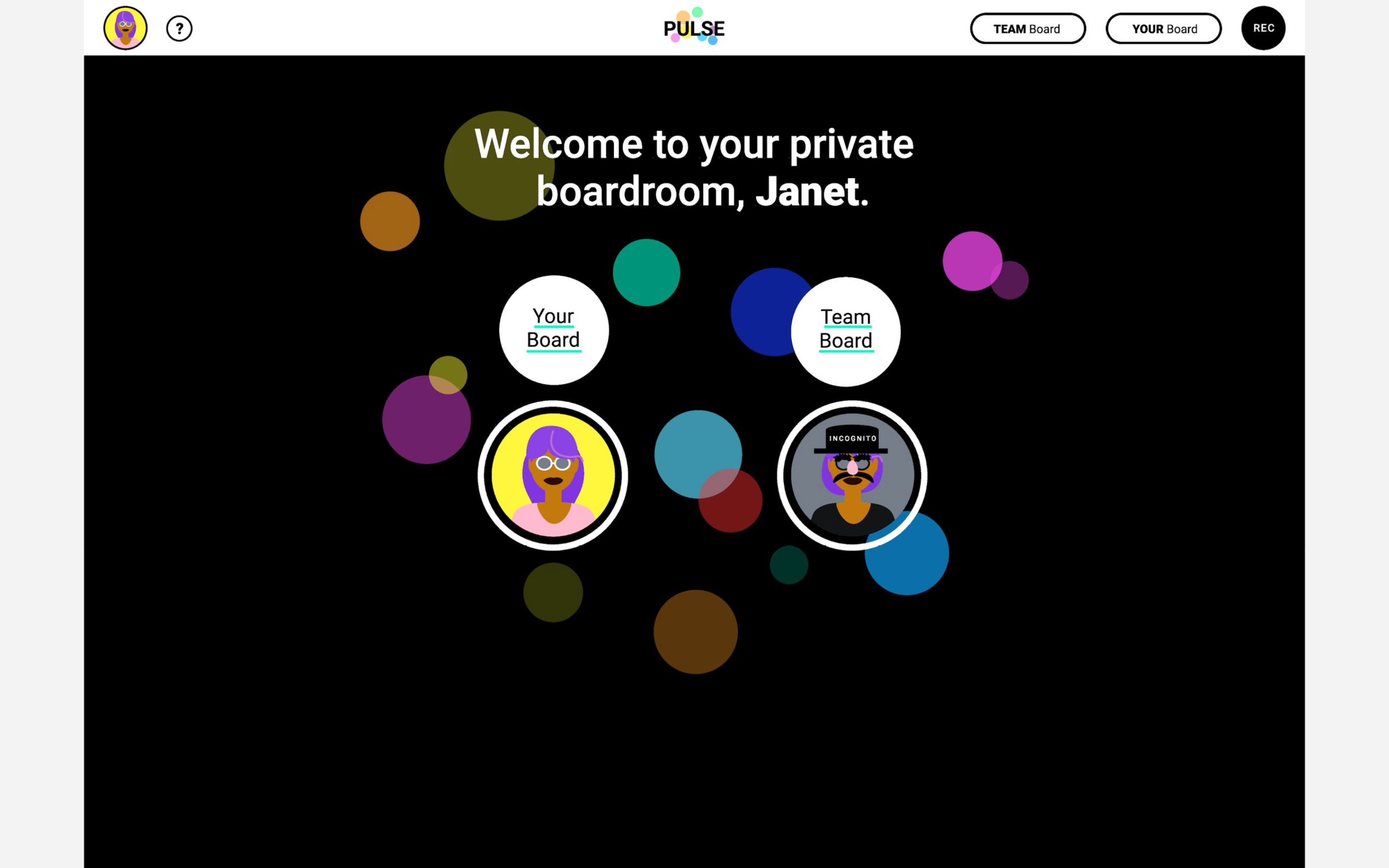
From the home screen, we can navigate to our personal board, or visit the team board.
We’ll start by taking a look at our personal board
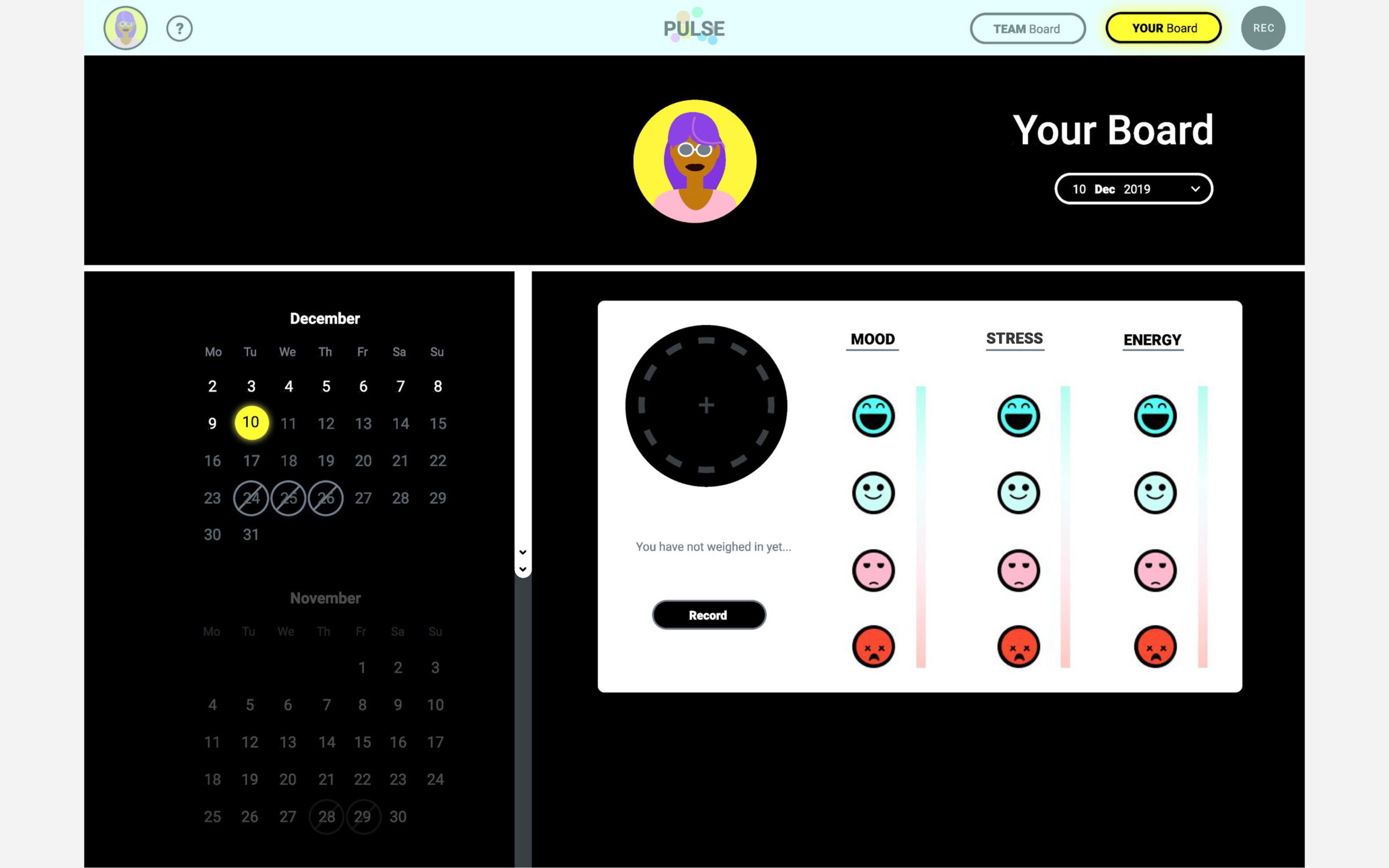
When it loads, we’re reminded that we haven’t recorded a Pulse yet today.
So let’s start by clicking the record button:

Recording a Pulse is quick and super simple. Just drag the sliders for each metric and the app will calculate our average for the day.
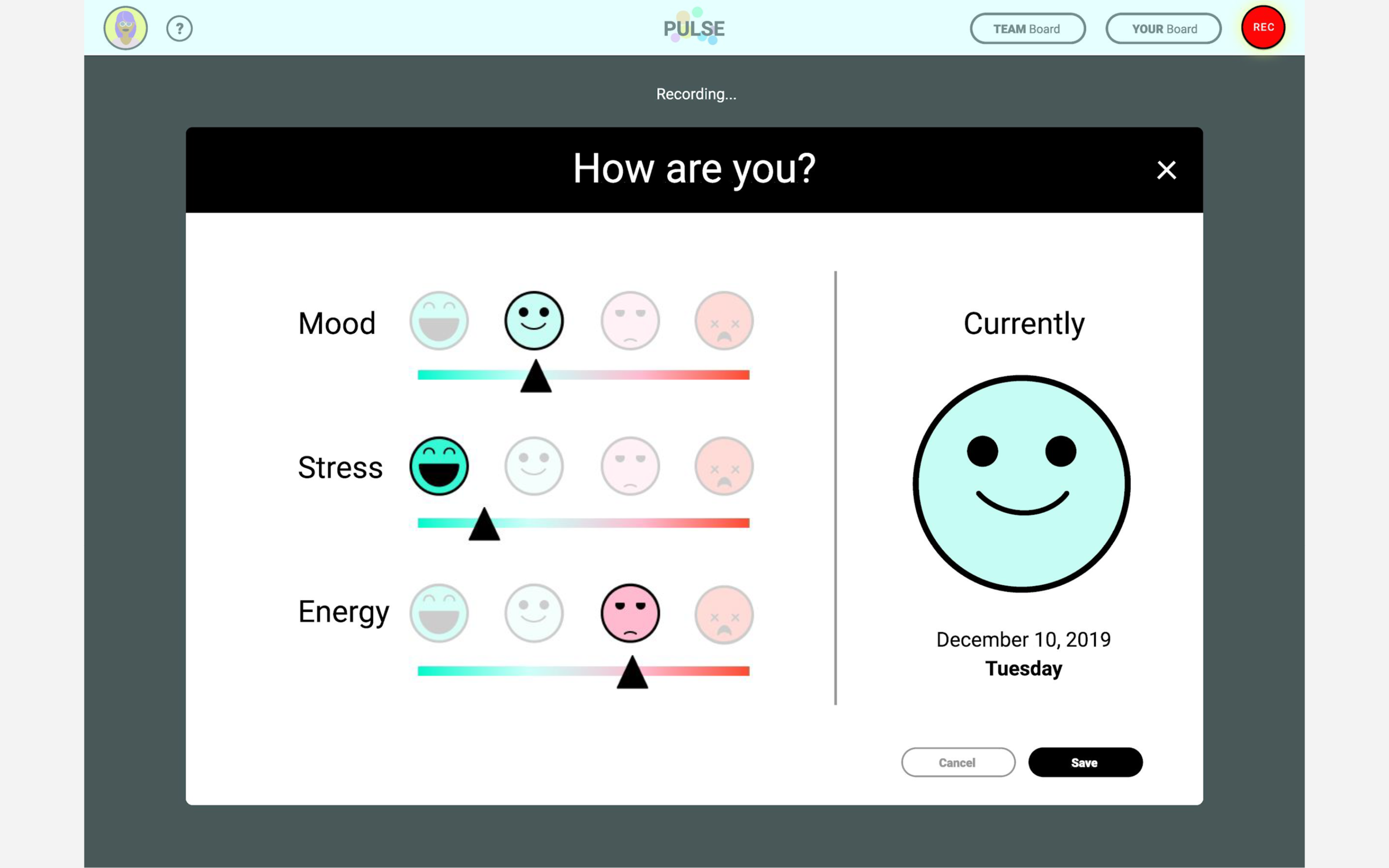
Once you’re done adjusting, click the Save button, and your Pulse will be recorded.
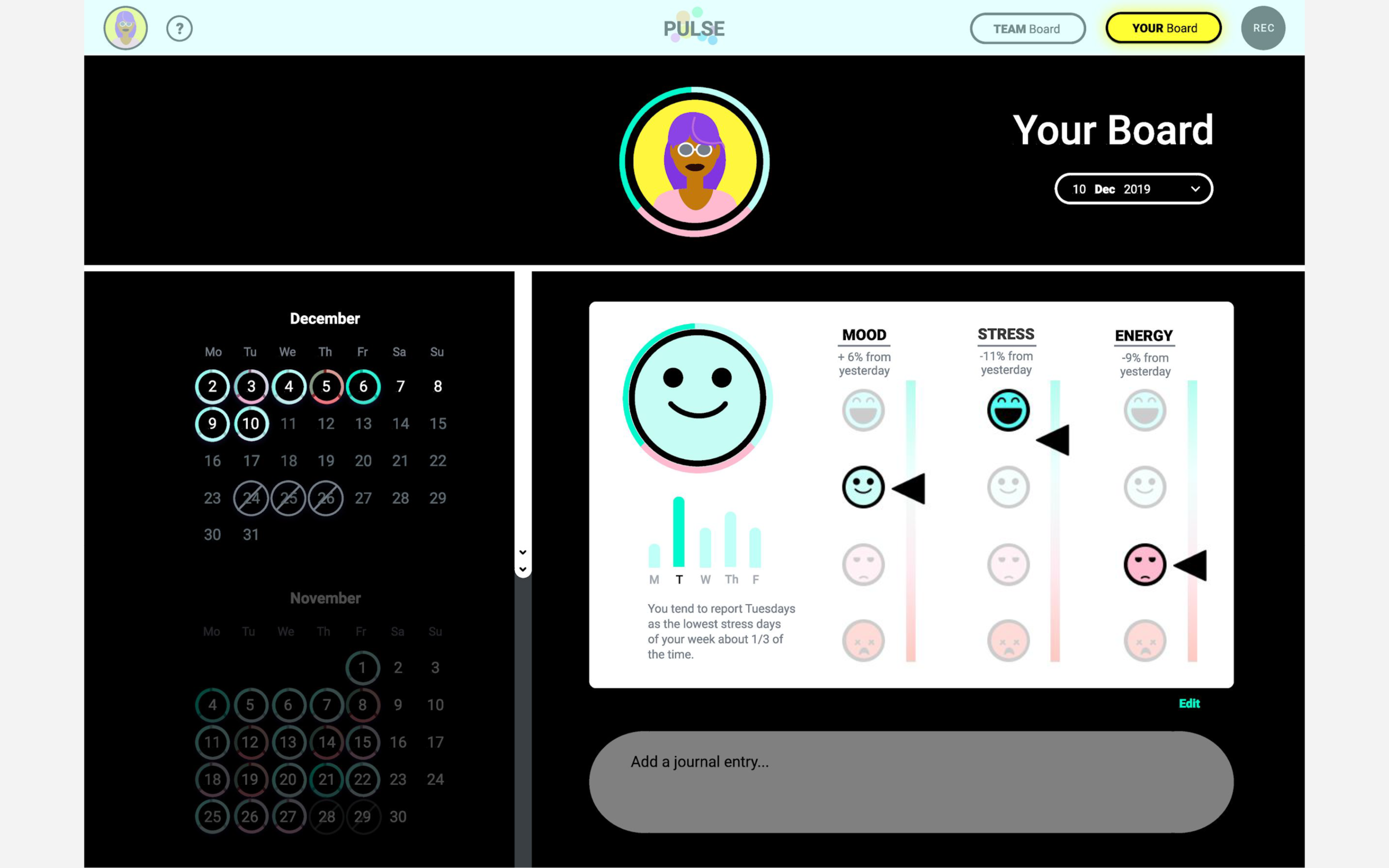
Hopping back to our board, we can now see the Pulse we just submitted.
If you’d like to add a journal entry for future context, you can also do that below.
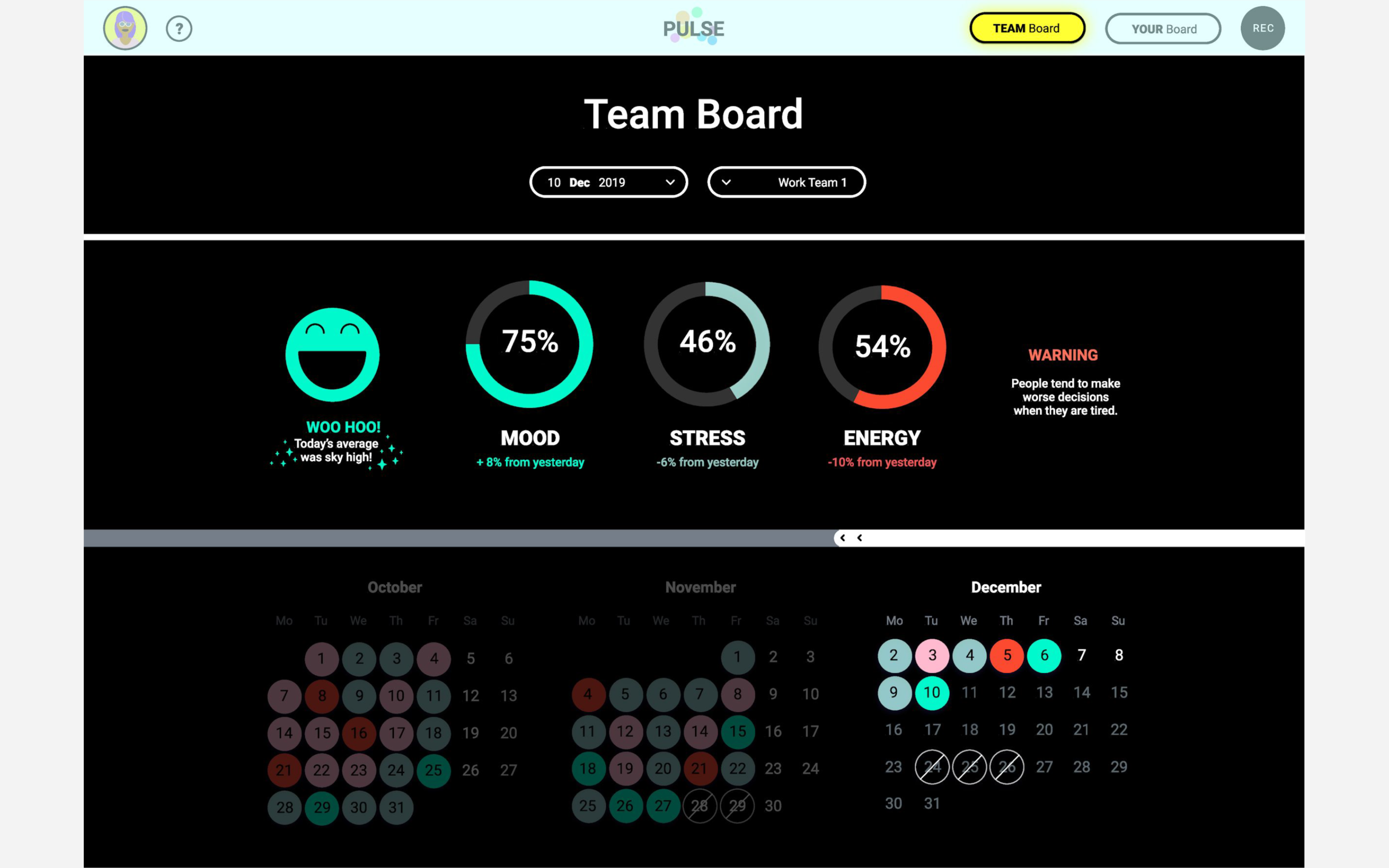
One of the other great features of your board is the ability to view emotional history on the calendar to the left.
The app will also highlight key trends for you, such as which day of the week you tend to feel the best on.
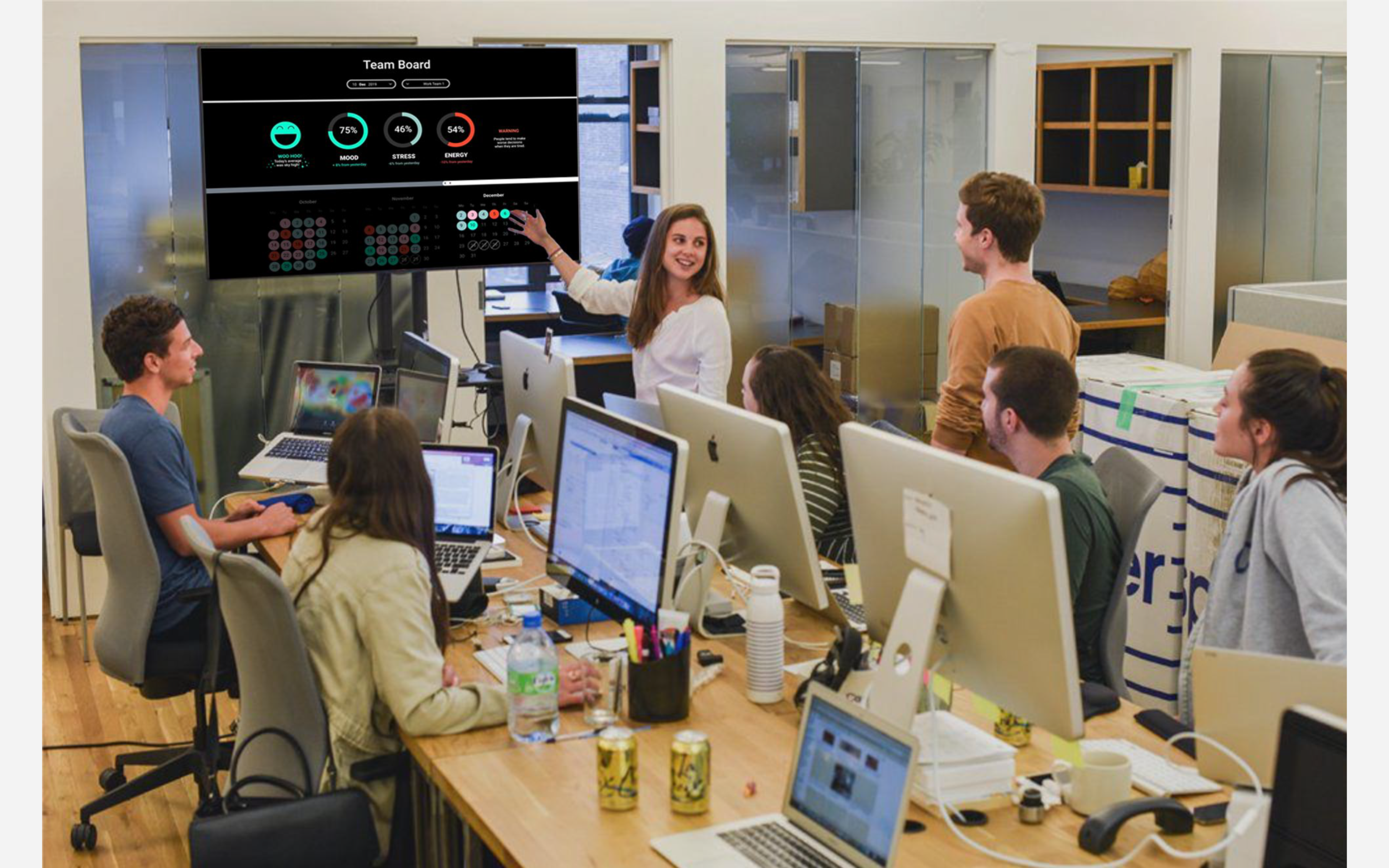
Now that we’re familiar with the personal board, let’s take a look at our team board
The Team Board is accessible by any user on the team, and it can also be configured on most digital displays.
When you record a Pulse, the Team Board will aggregate that into the group’s averages for the day, which gives the whole team and its stakeholders visibility into the emotional health of the group.
The board will highlight trends from previous days, so it’s easy to tell whether you’re moving in the right direction. And, like the personal board, you can check the calendar for a historic overview
This render shows an example of how the Team Board can be effectively deployed in an office environment.
Our core strategy is to position Pulse using a tiered SaaS model, similar to software like Slack and JIRA.
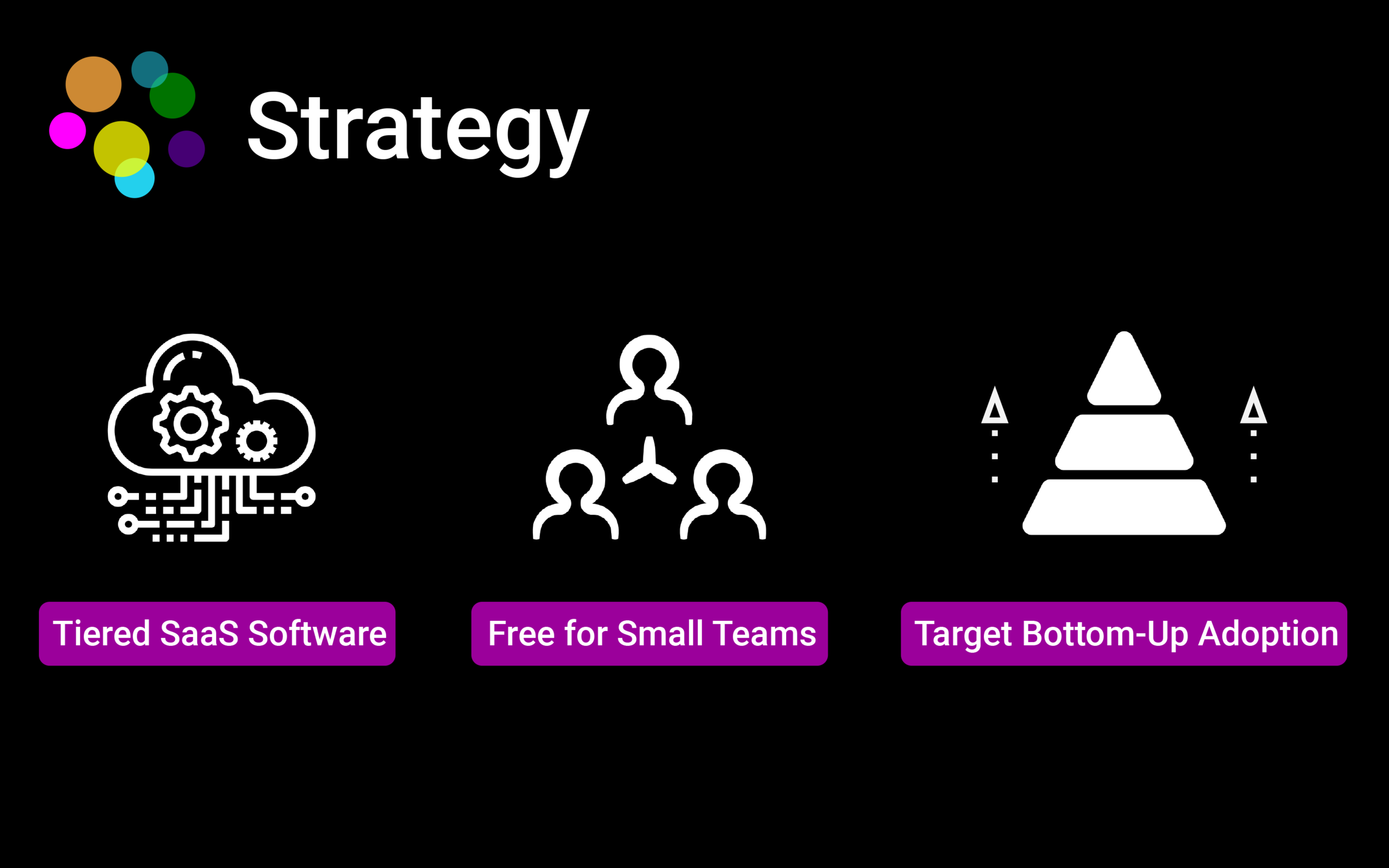
To help penetrate the market, we’ll allow free use of our software to individuals and small teams, with larger teams having the option to pay an upgrade fee, which scales up the number of users and bundles in additional features
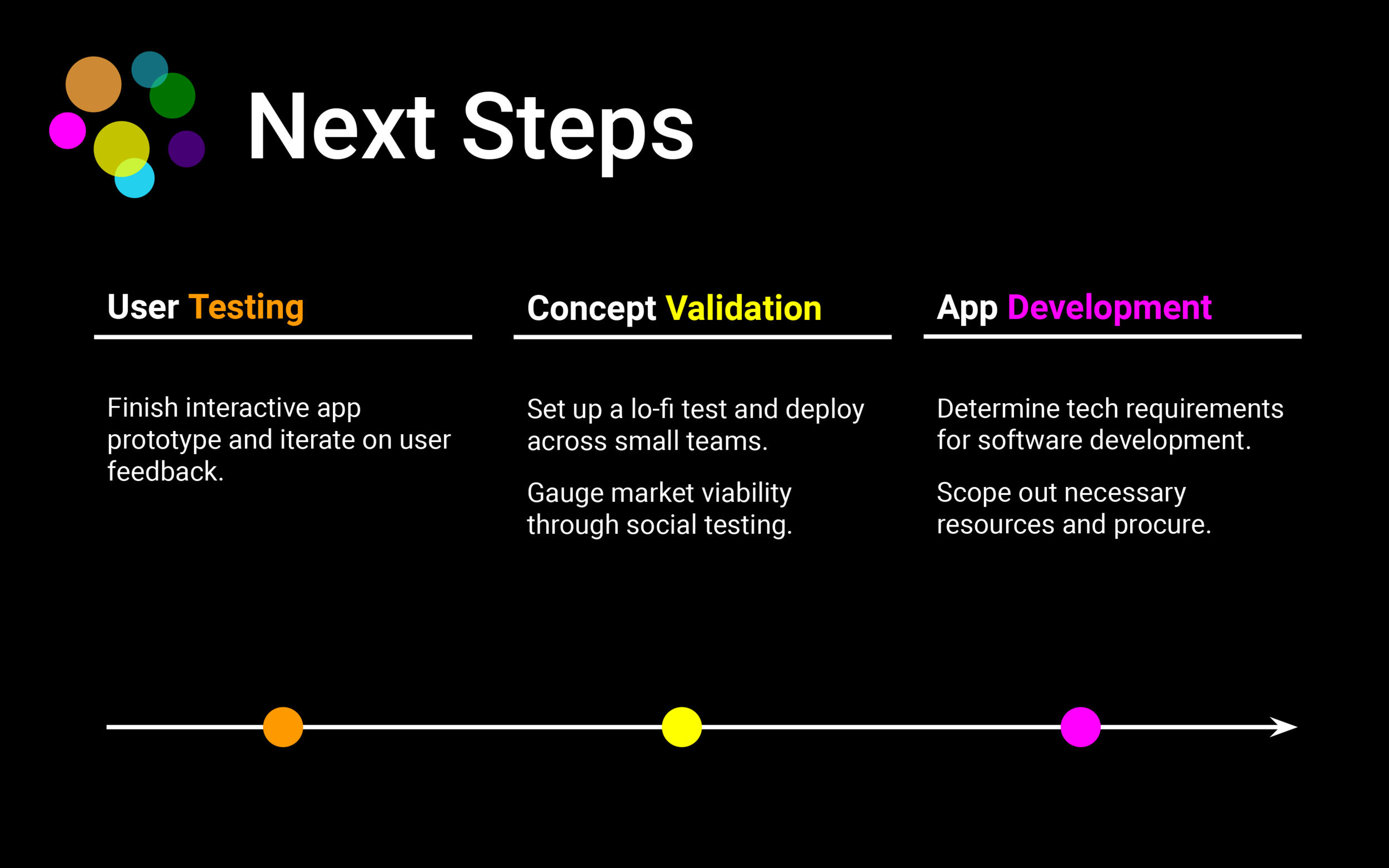
For our marketing and sales approach, we’ll look to target individuals and small teams within large organizations, encouraging them to trial the product and organically share it with other parts of their business.
Looking ahead, the next phase of this project is to conduct additional user testing with an interactive version of the app.
We’ll then want to validate the concept using a series of lo-fi tests deployed across real teams.
If we can achieve that validation, we’ll then need to determine our tech requirements for the software, and we can begin to scope out the necessary resources
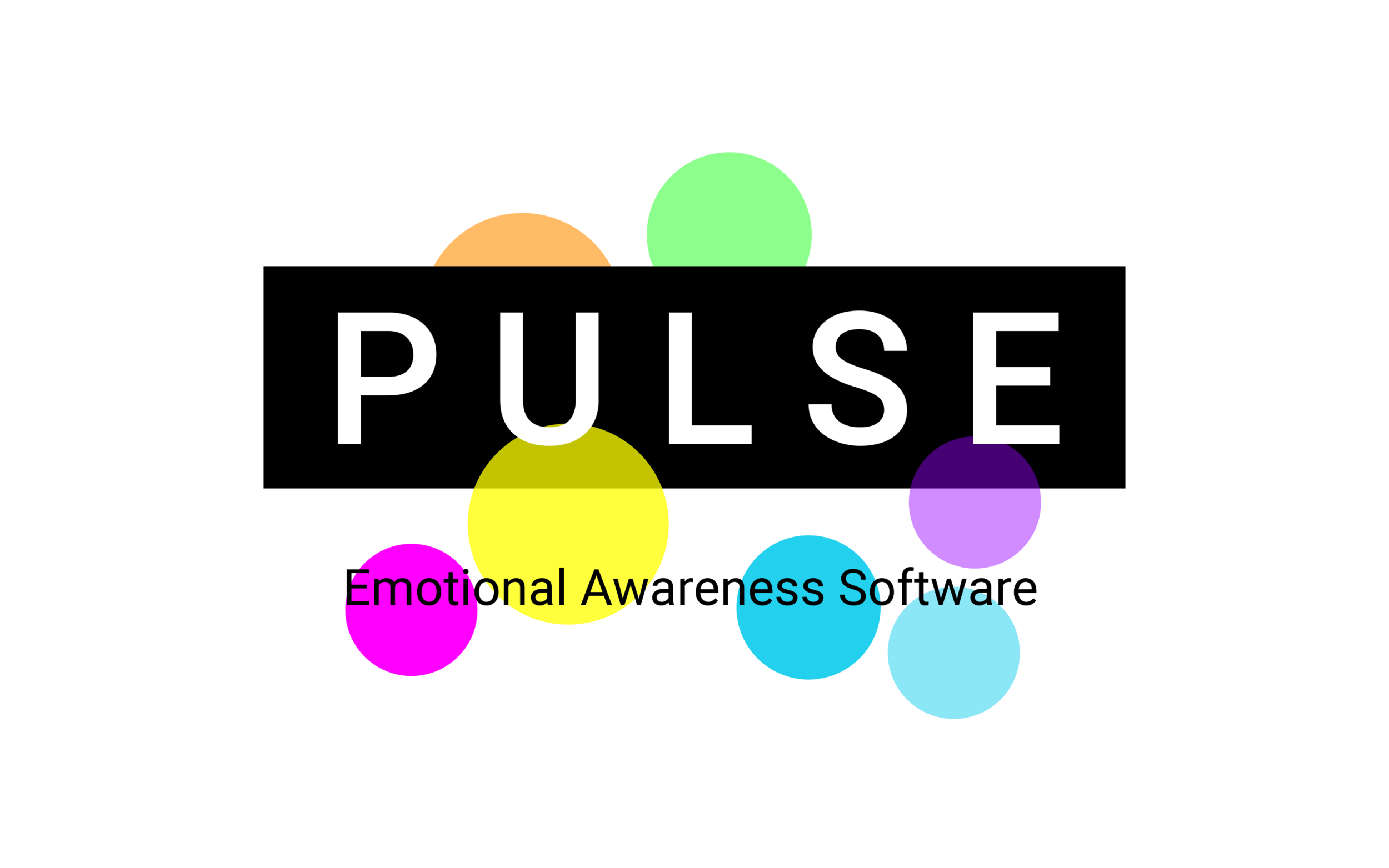
And with that, we would like to conclude our presentation. Thank you!



















The final presentation showed a more tailored story of the problem set and solution proposal with a refined interface and experience.
Created in Google Slides with the Noun Project, UX/UI in Figma








